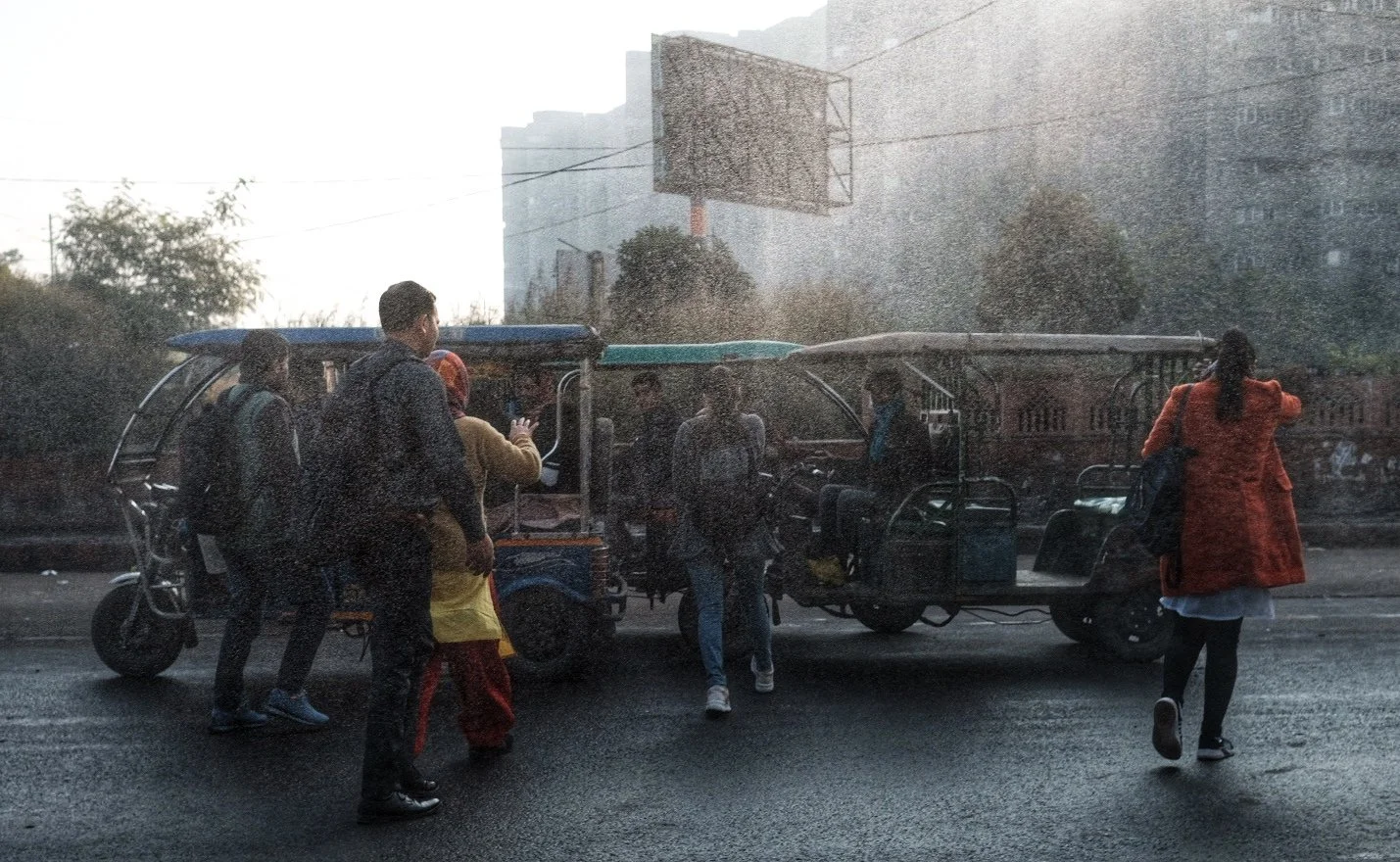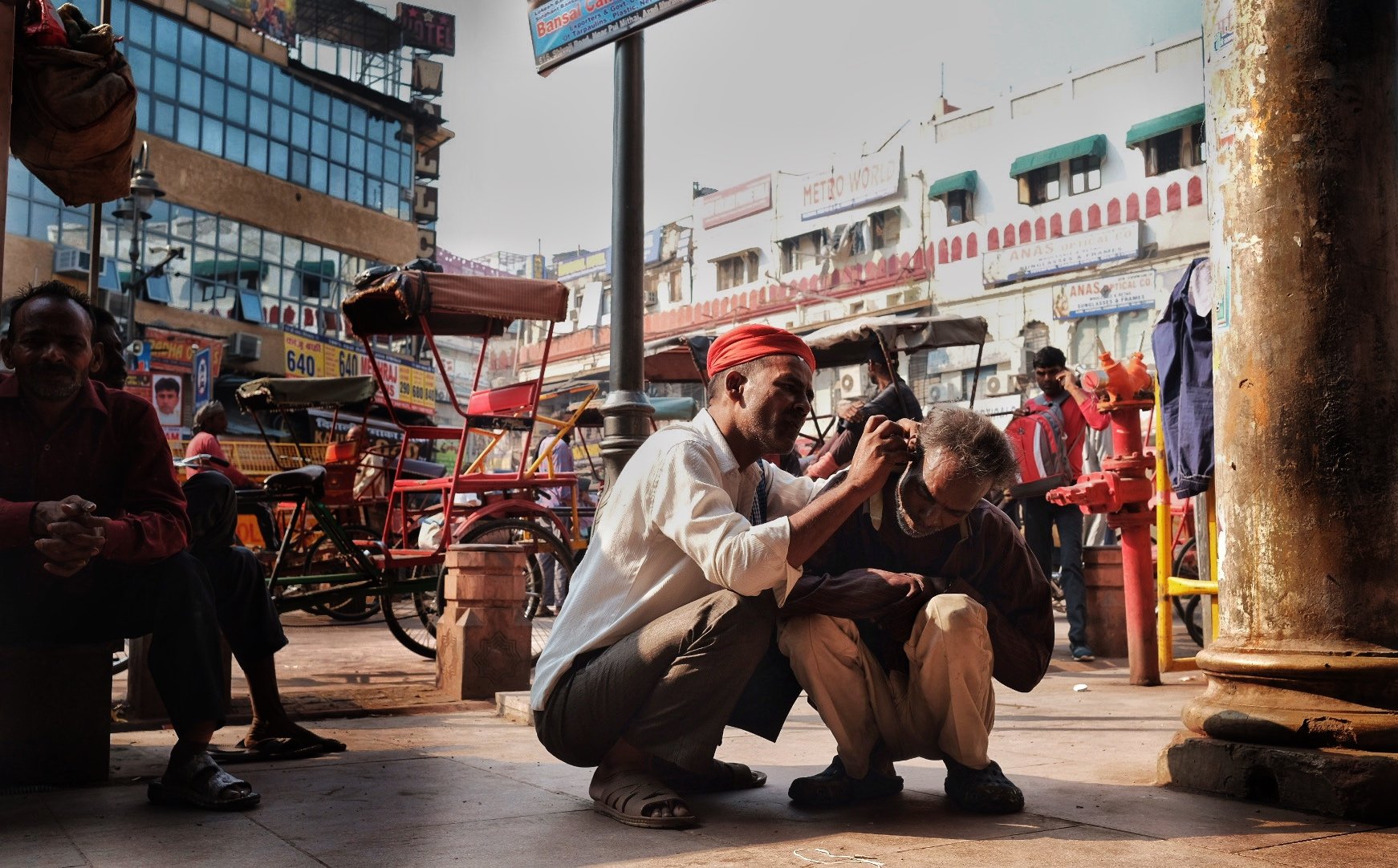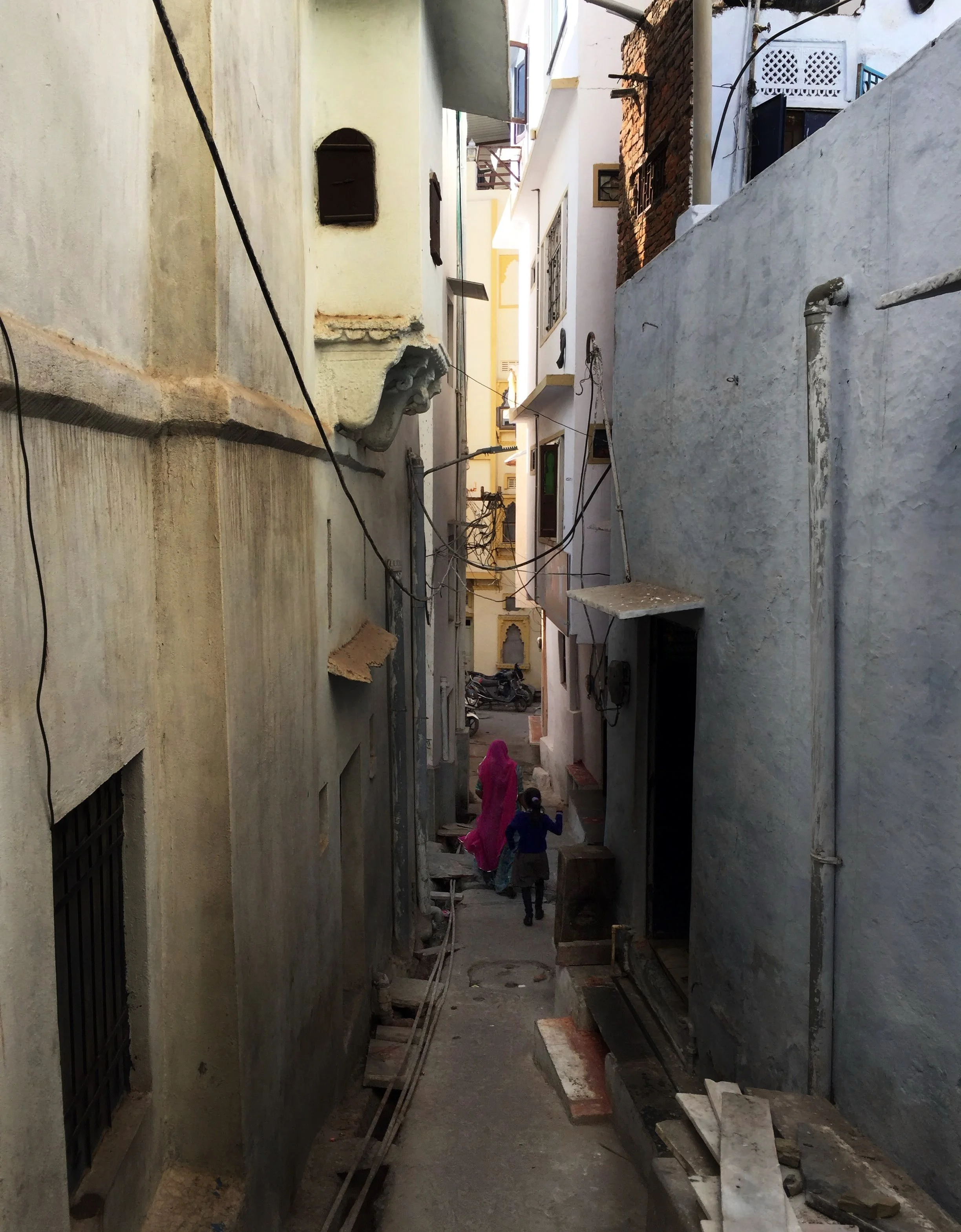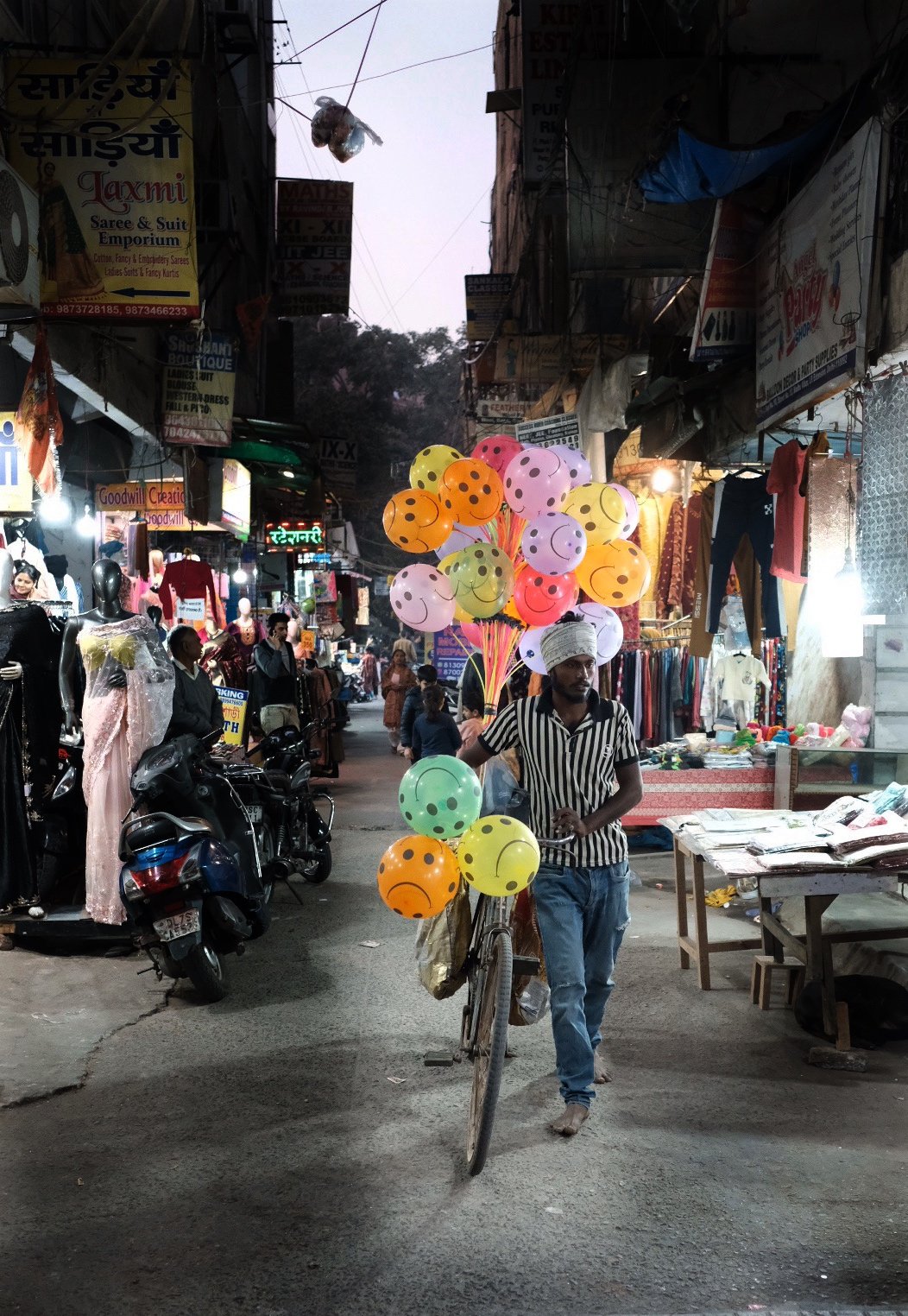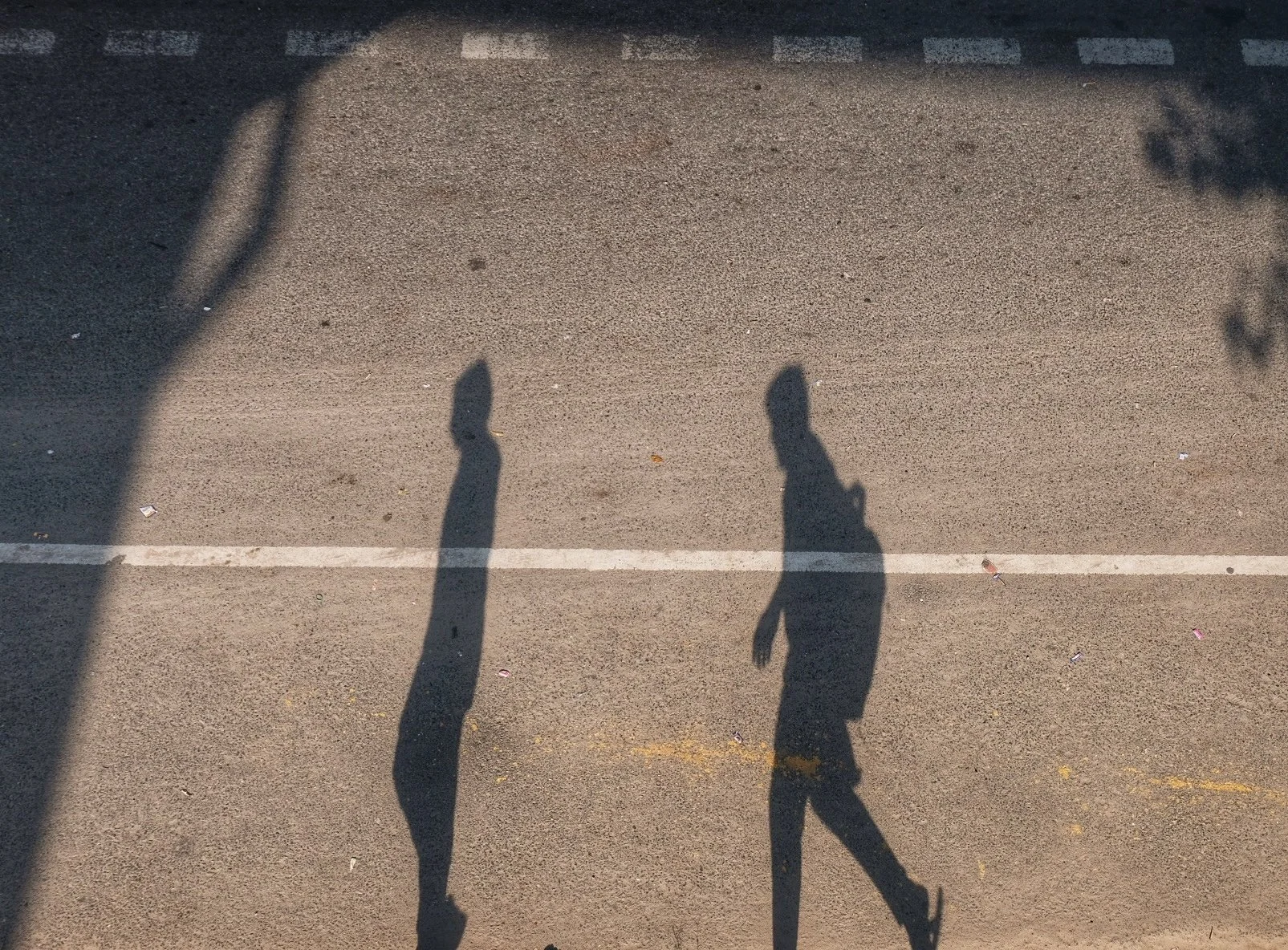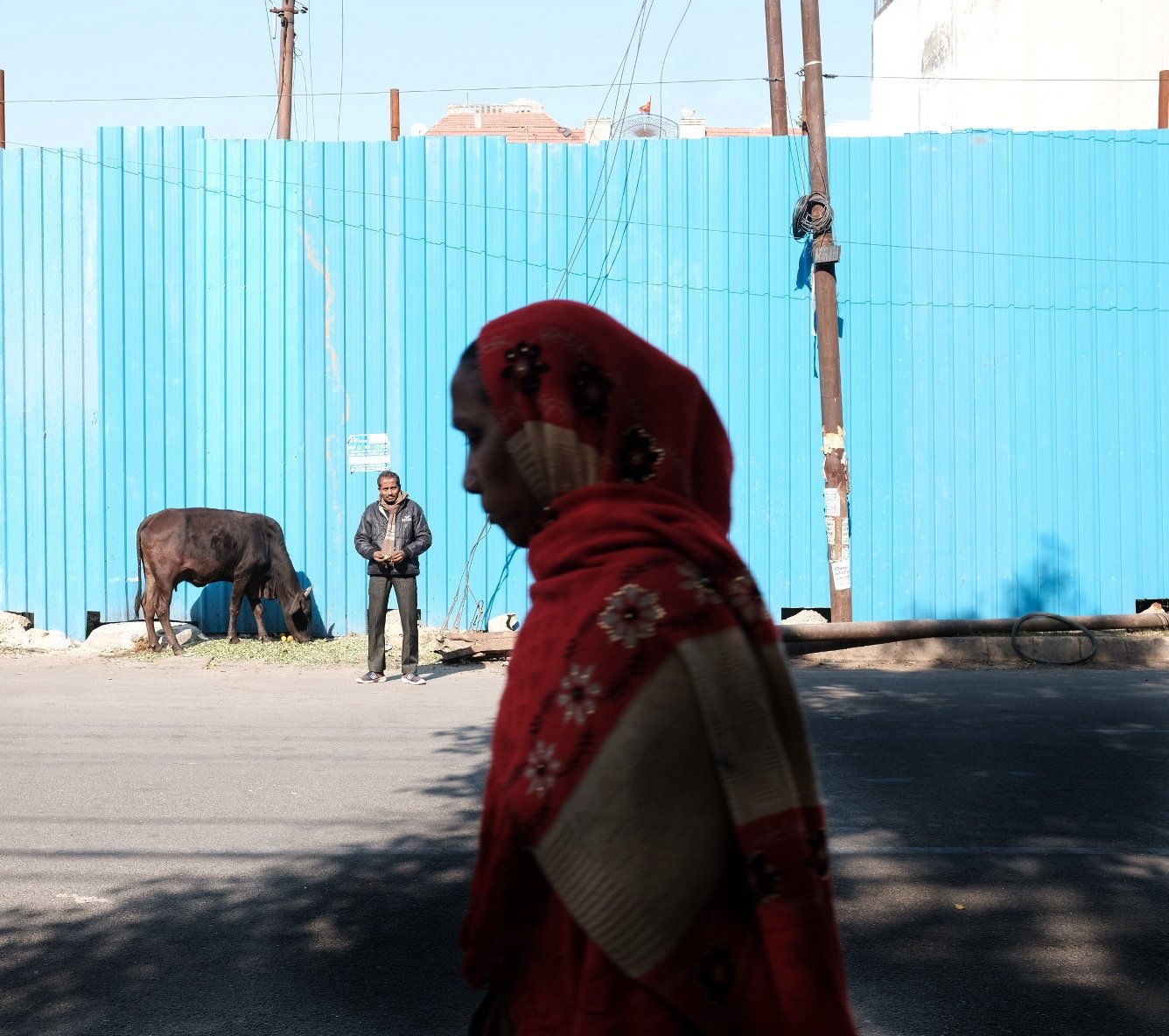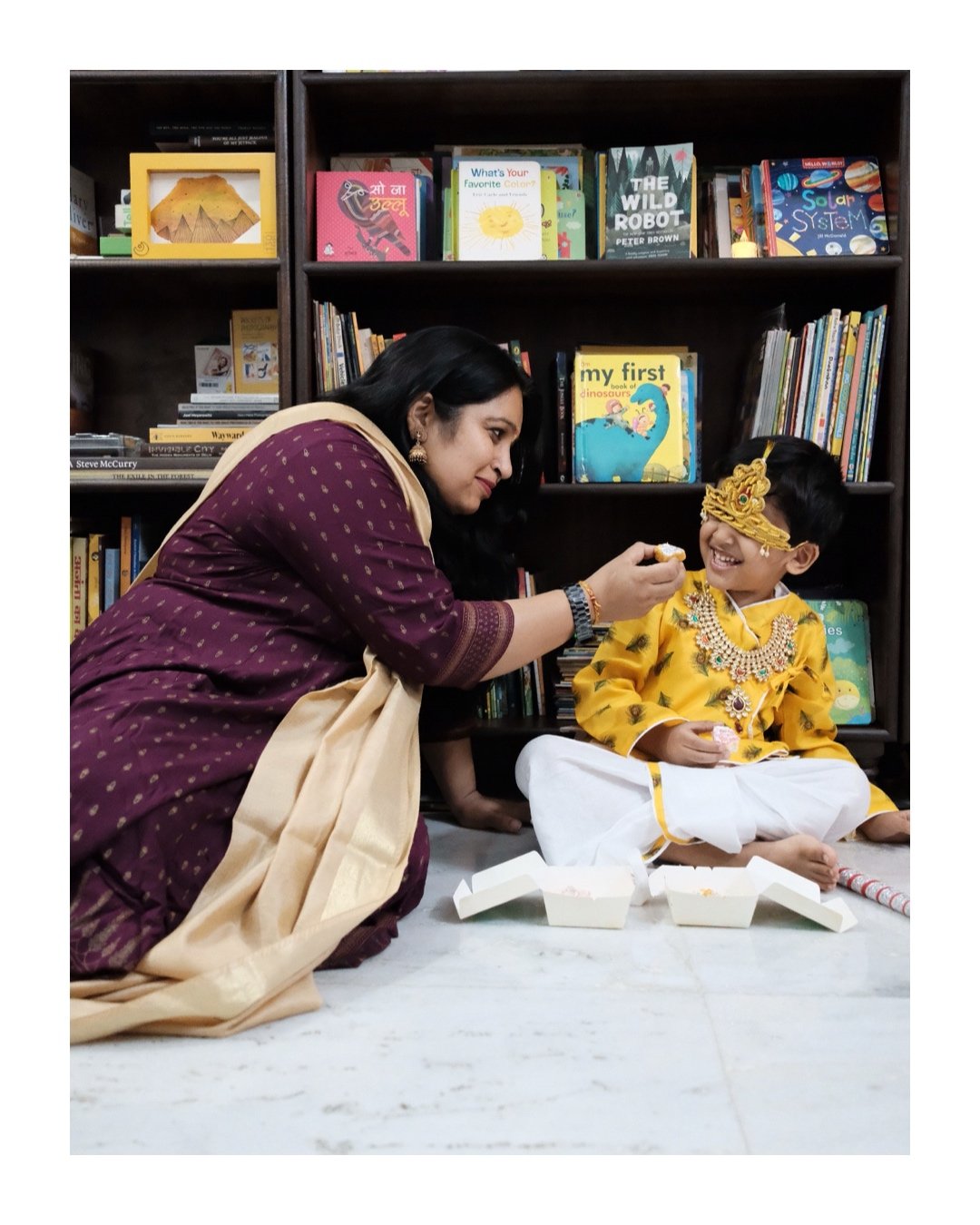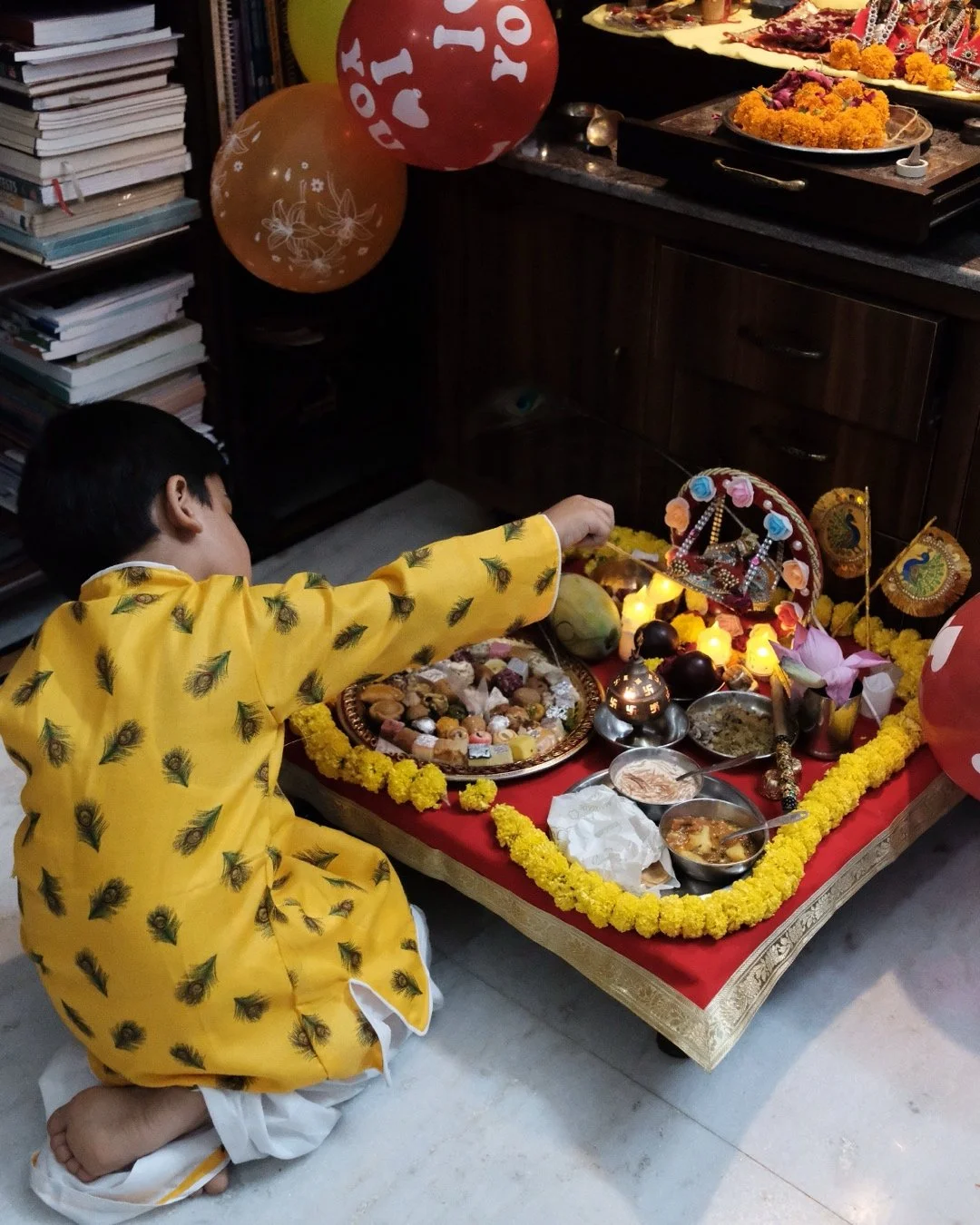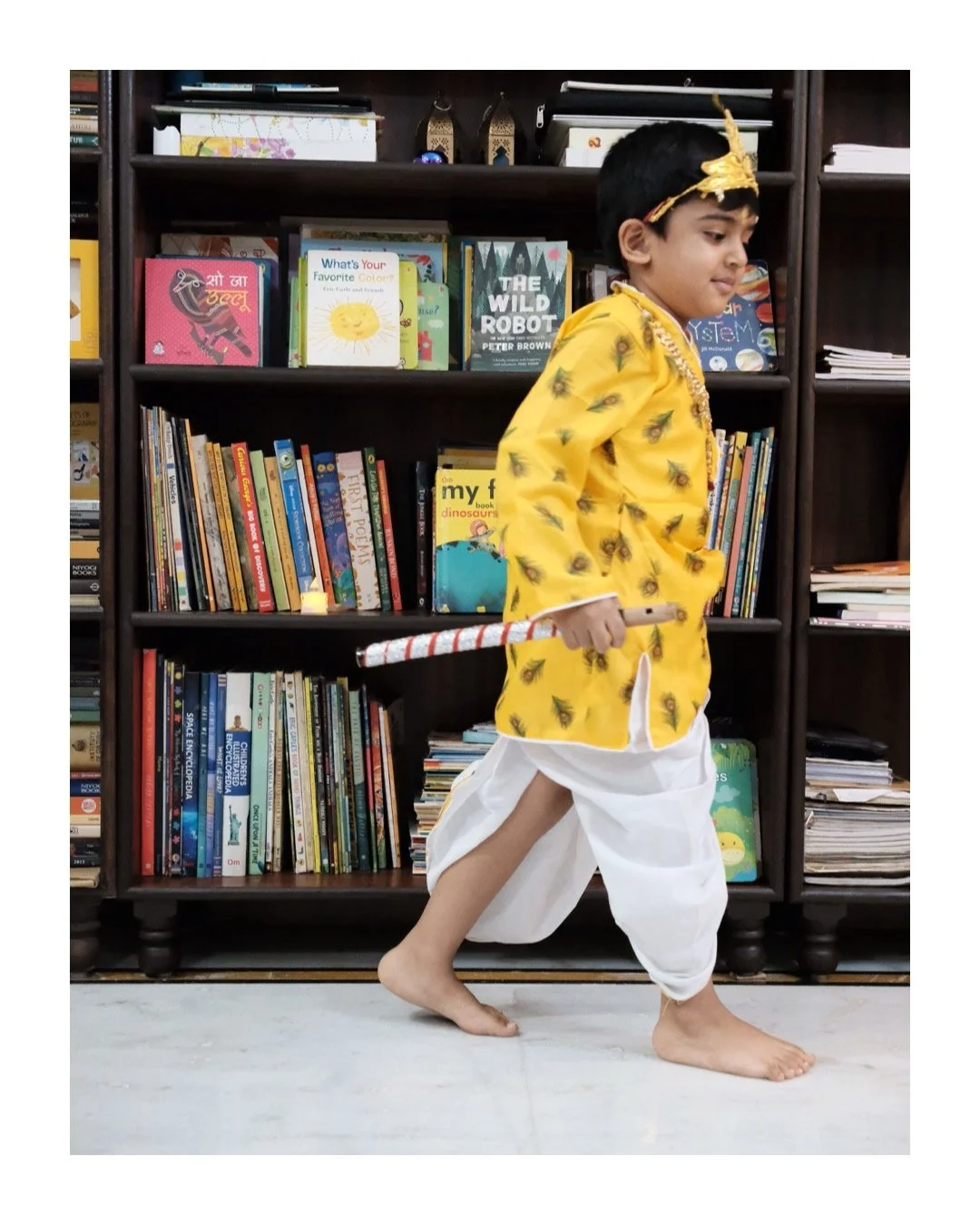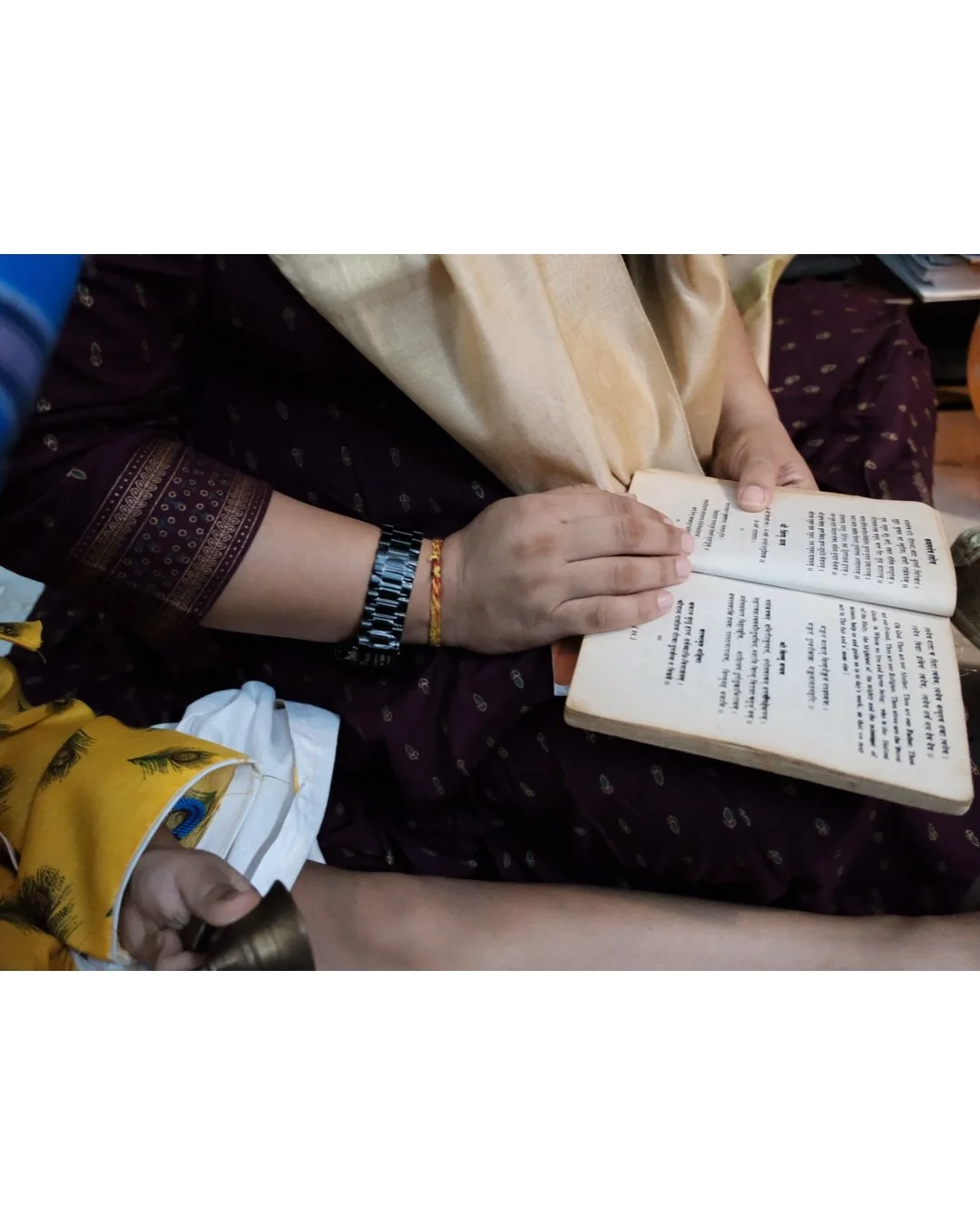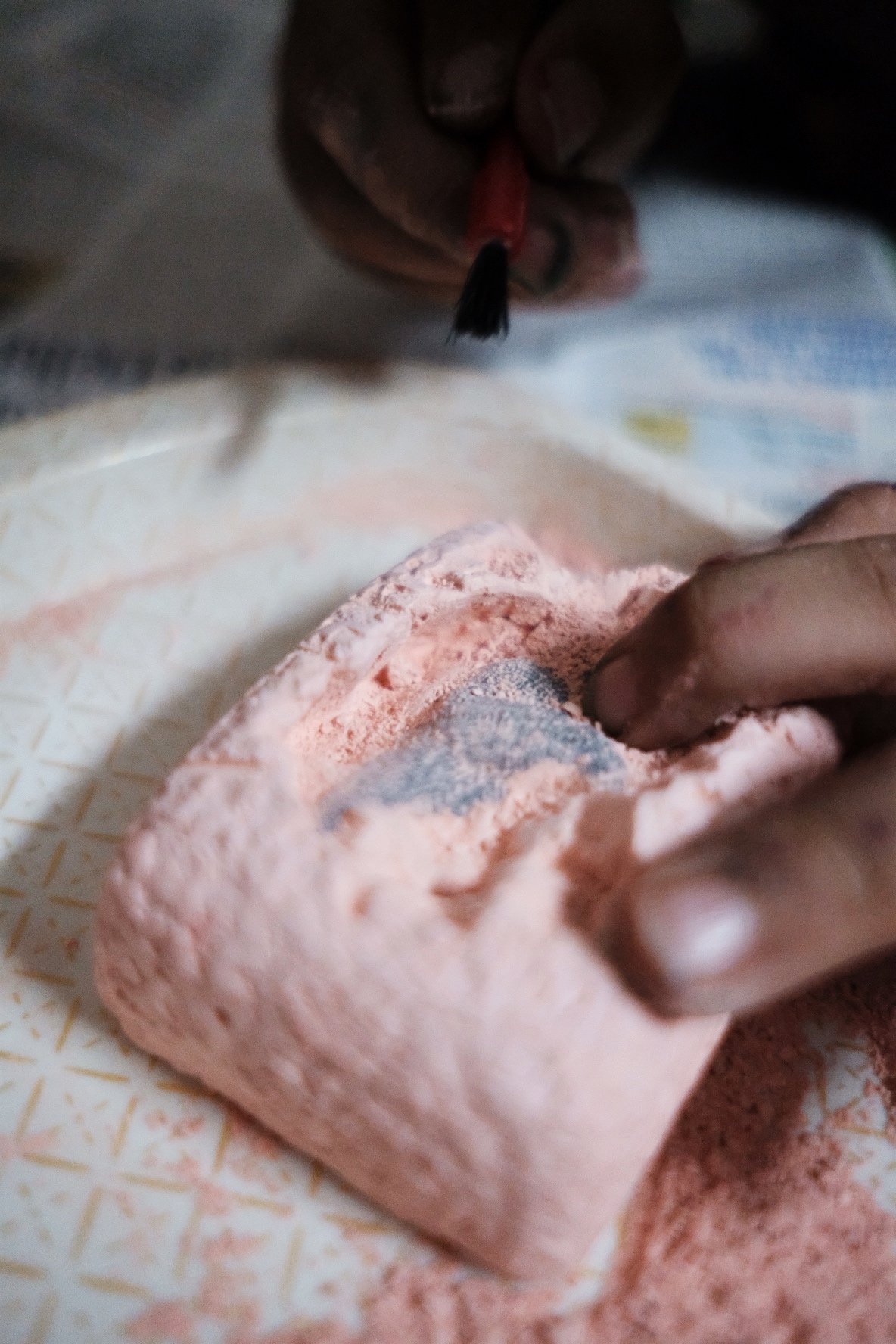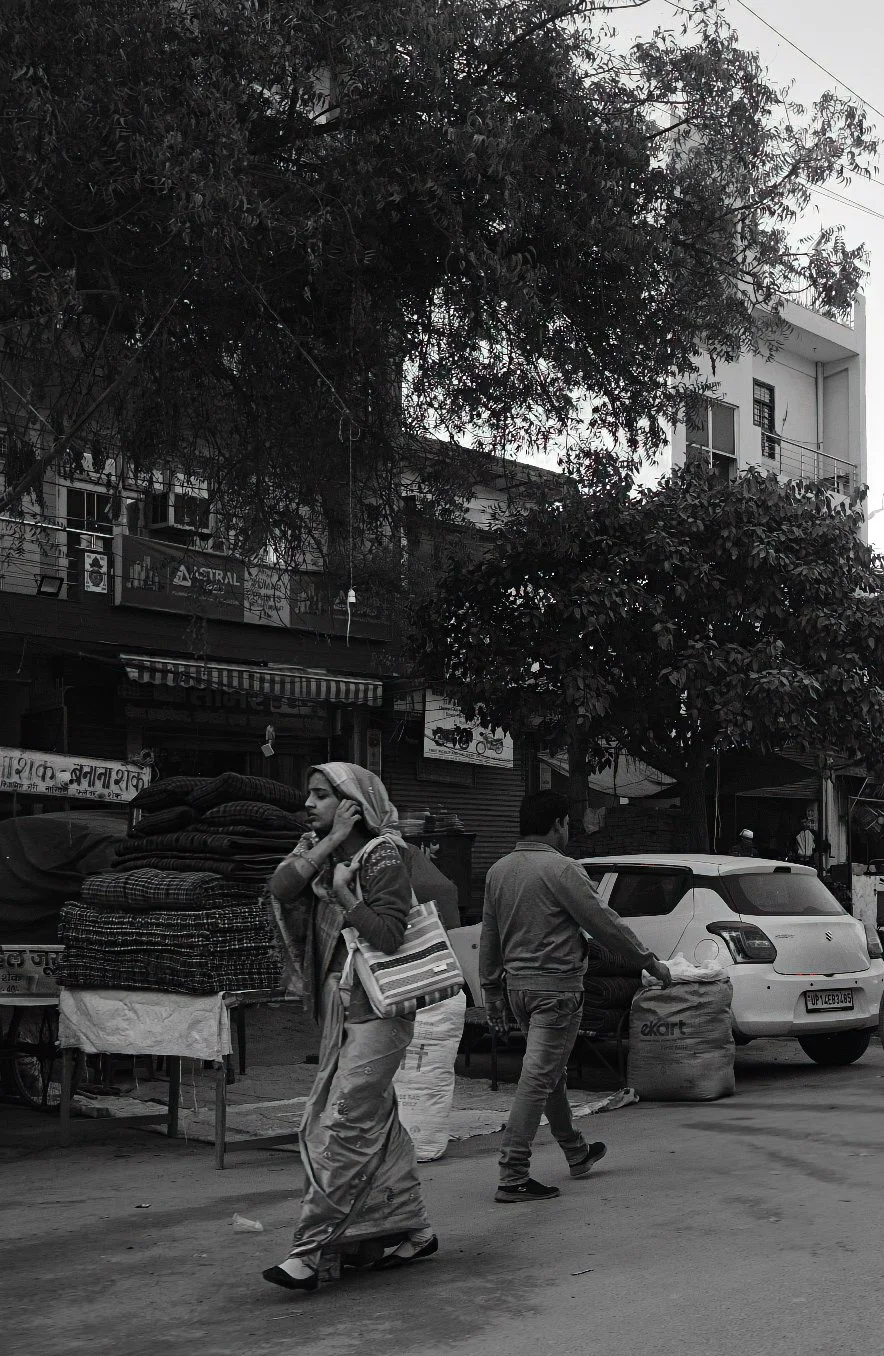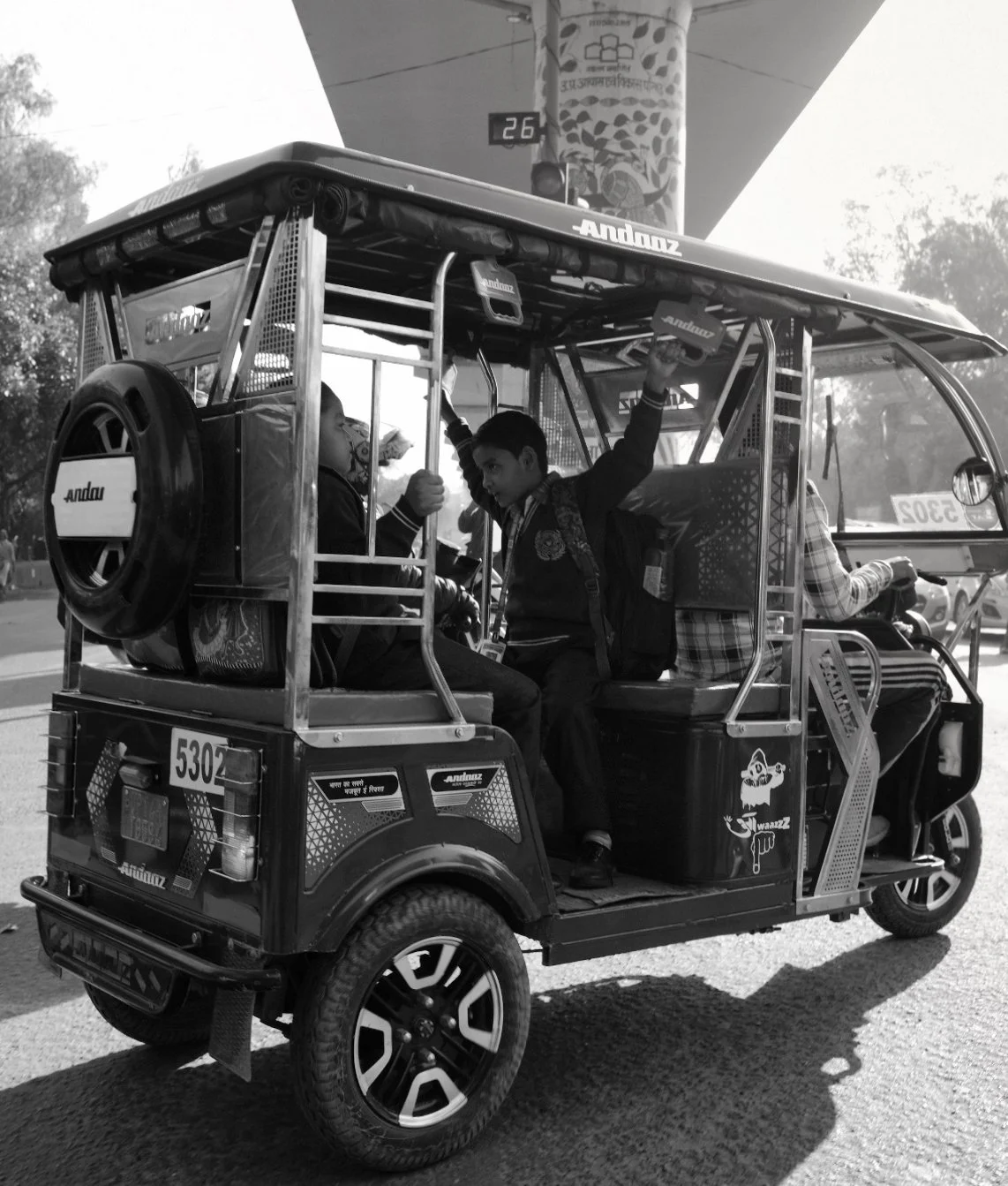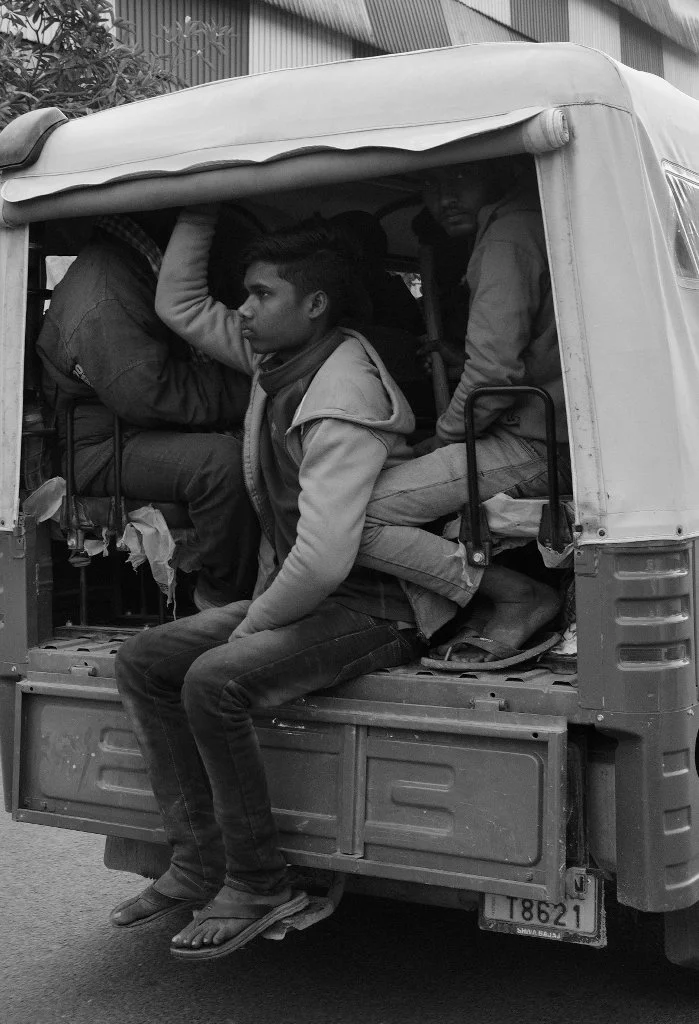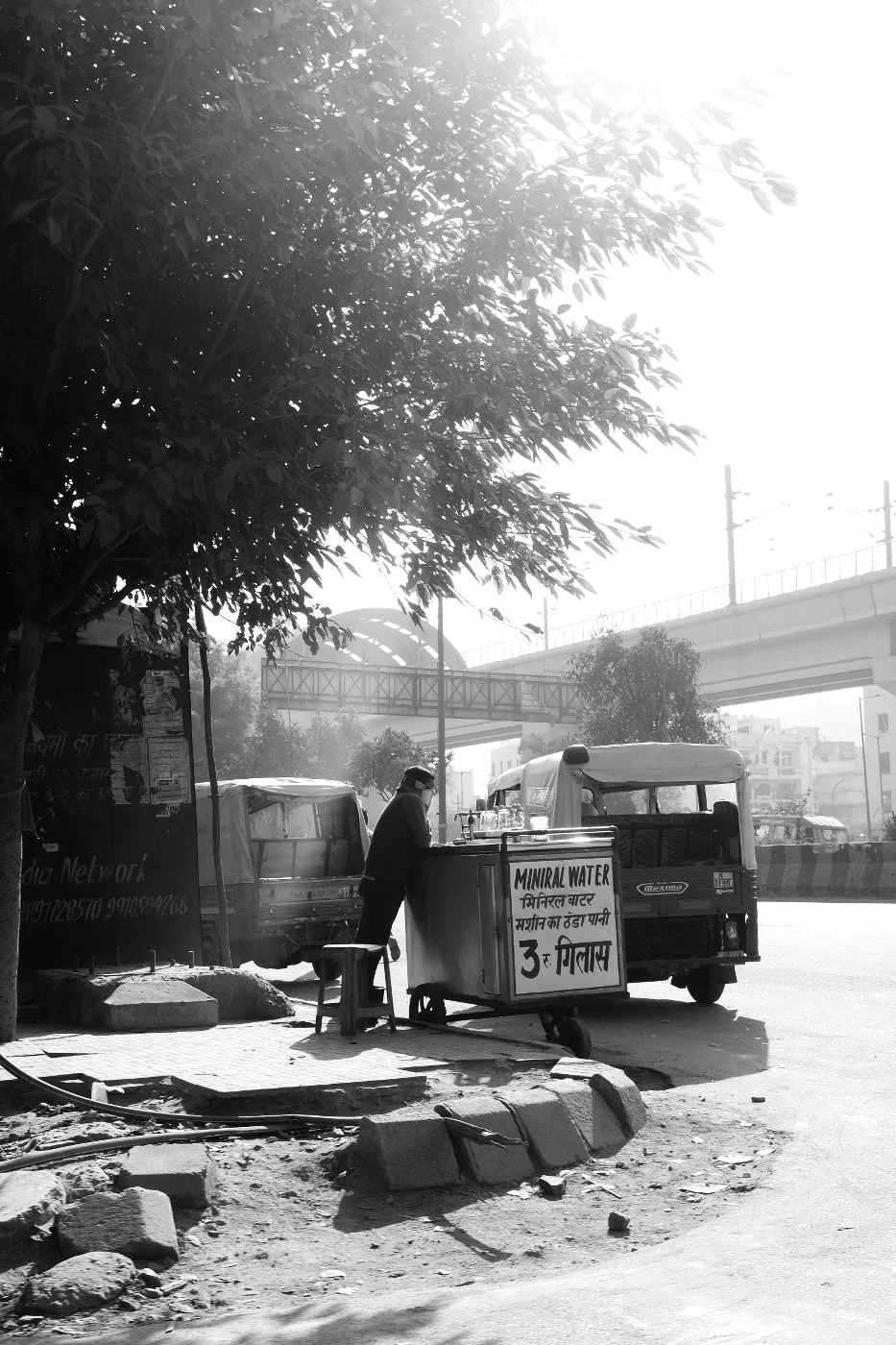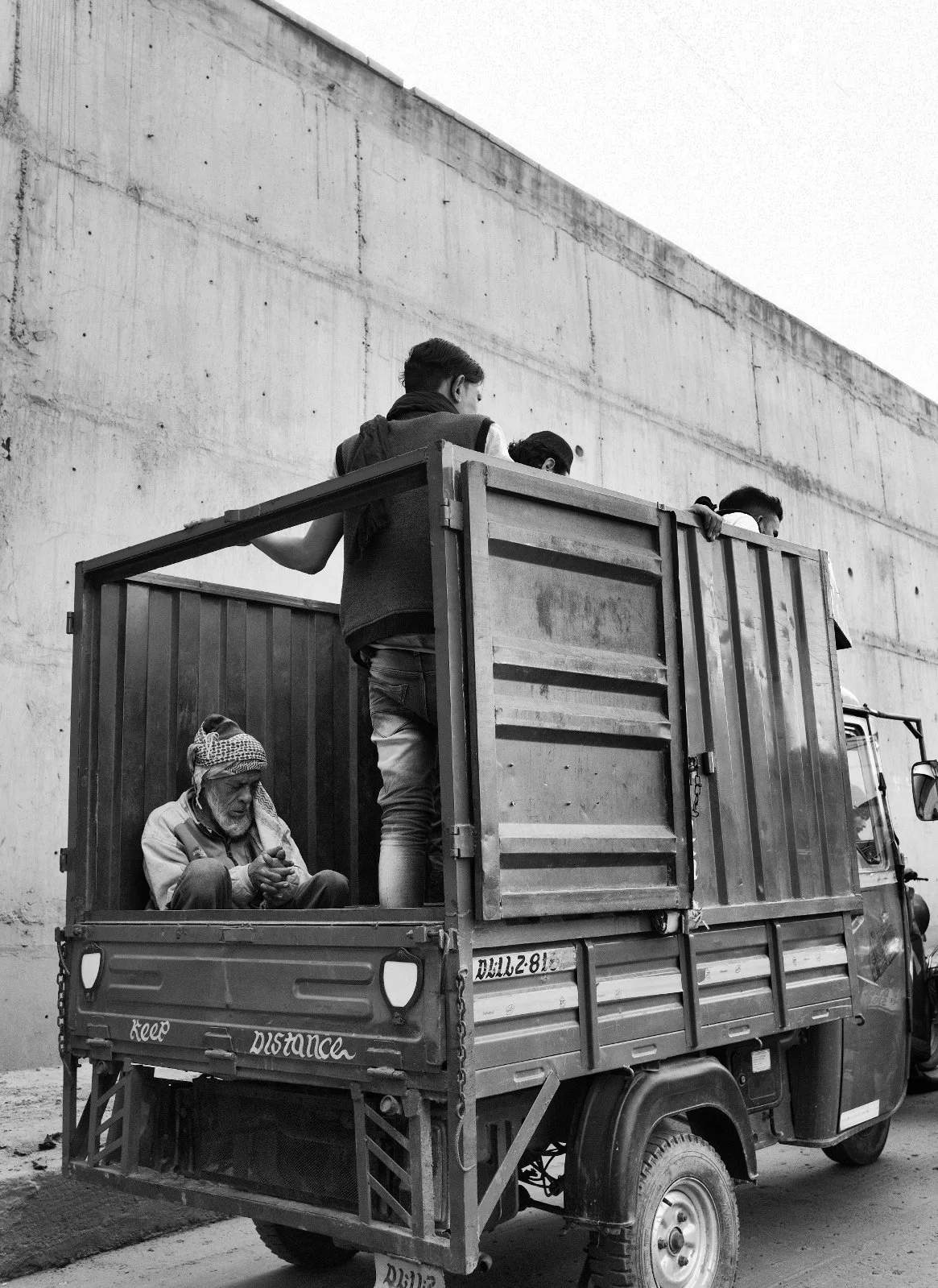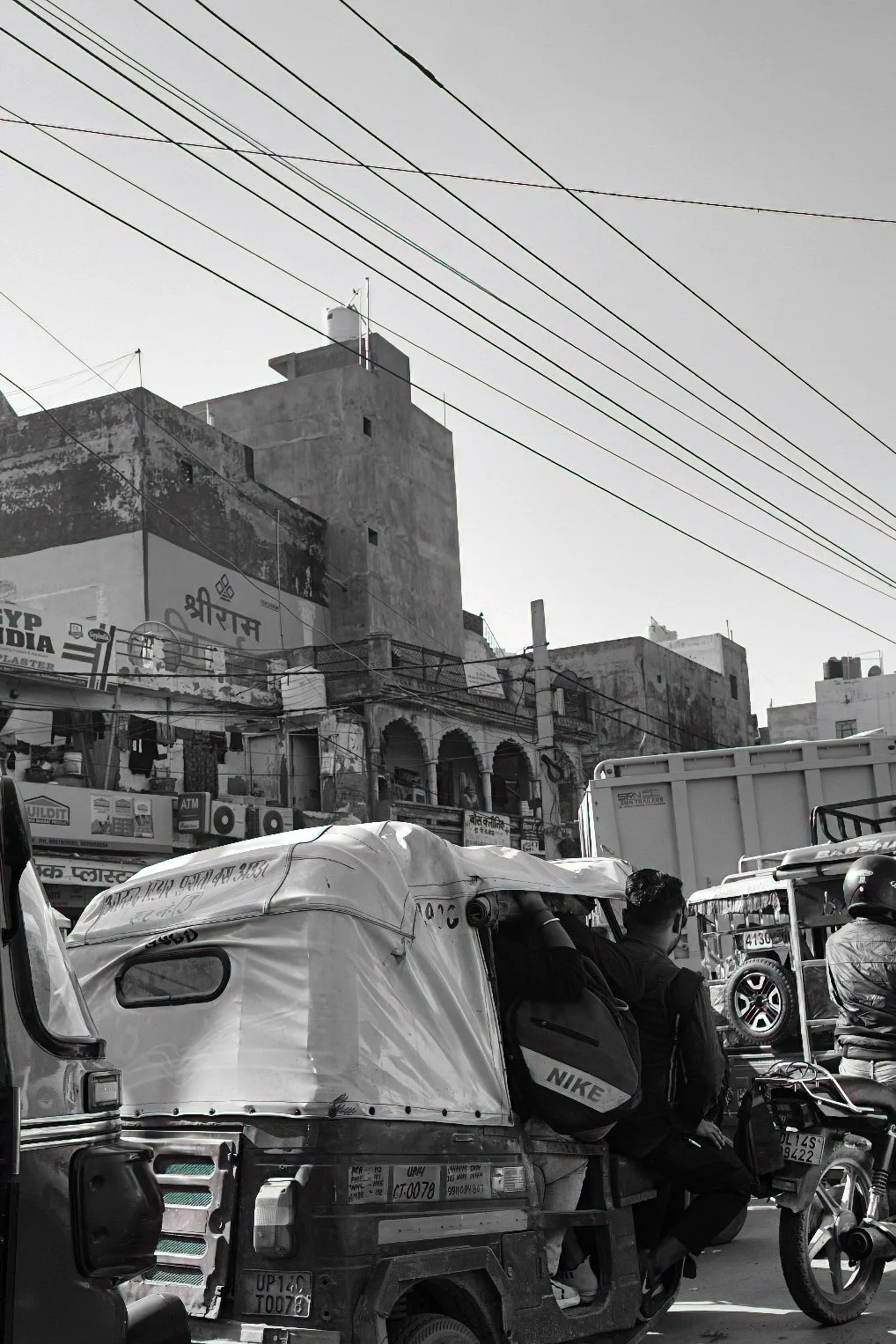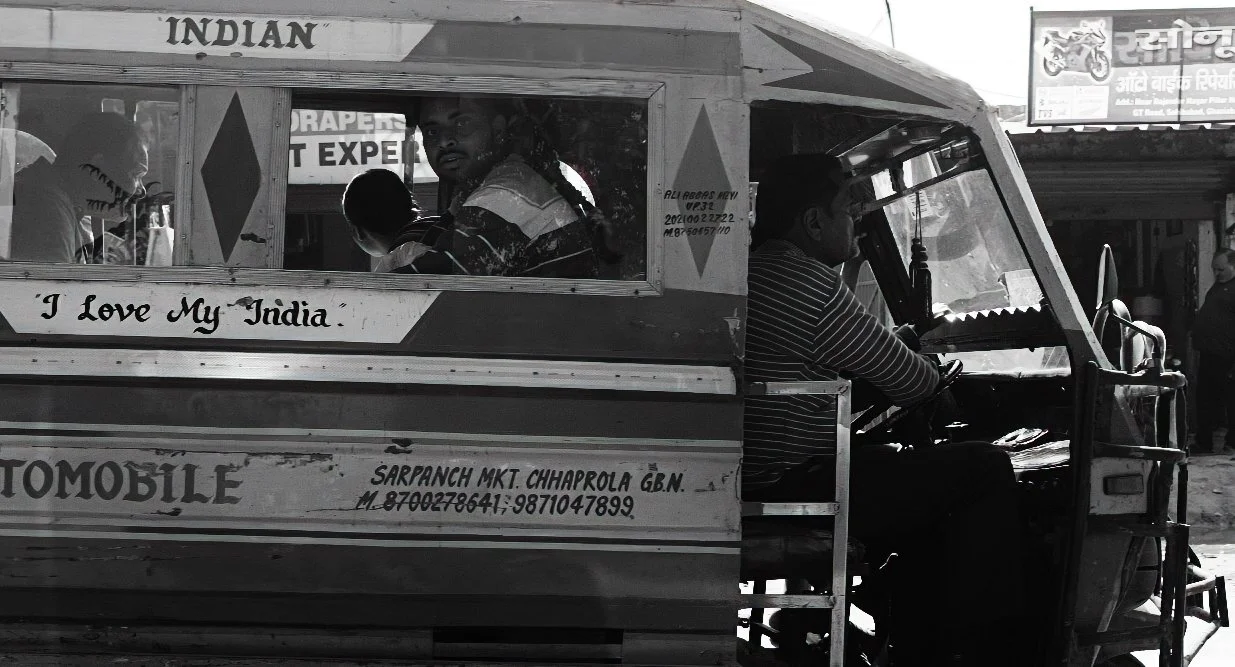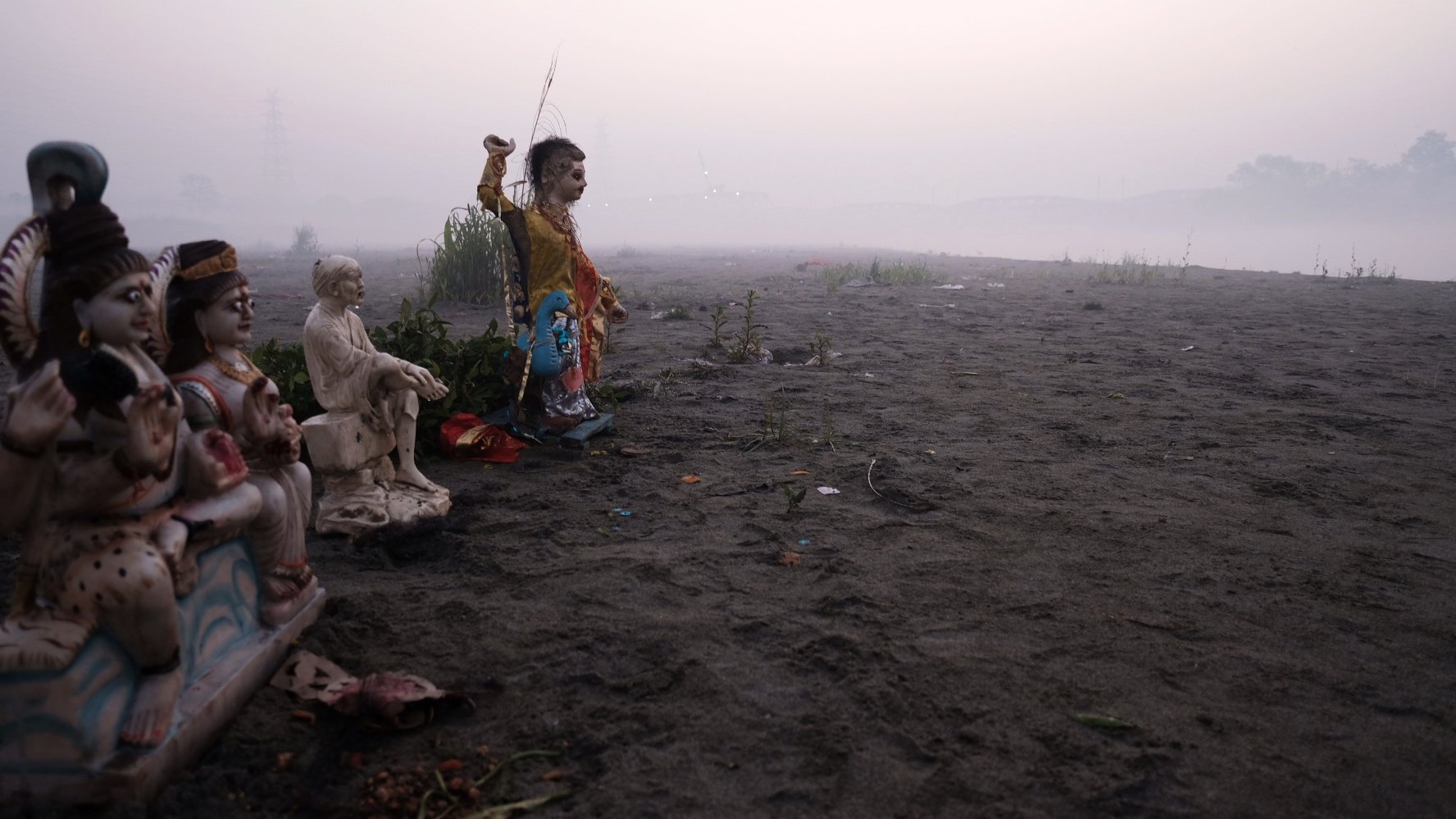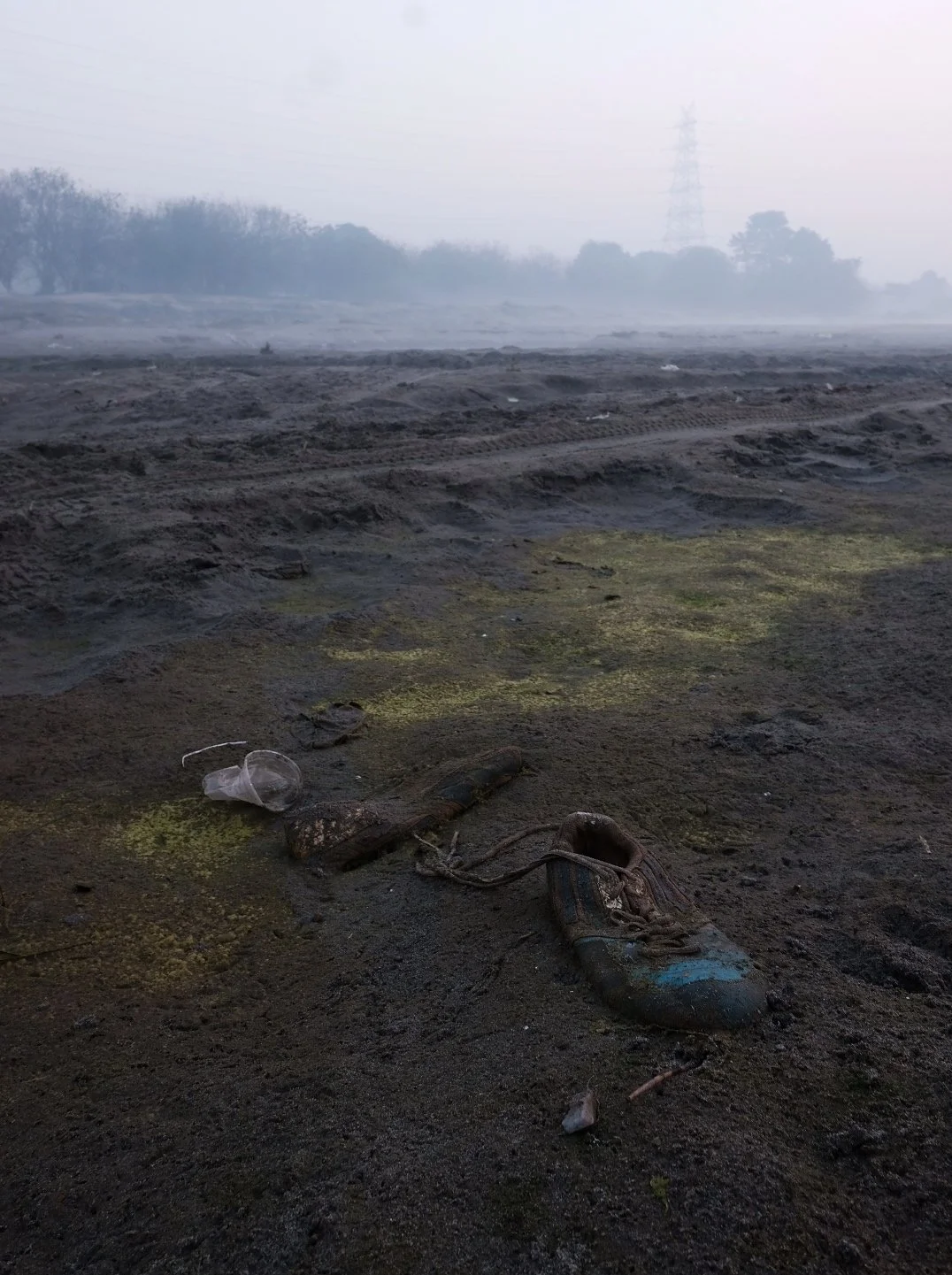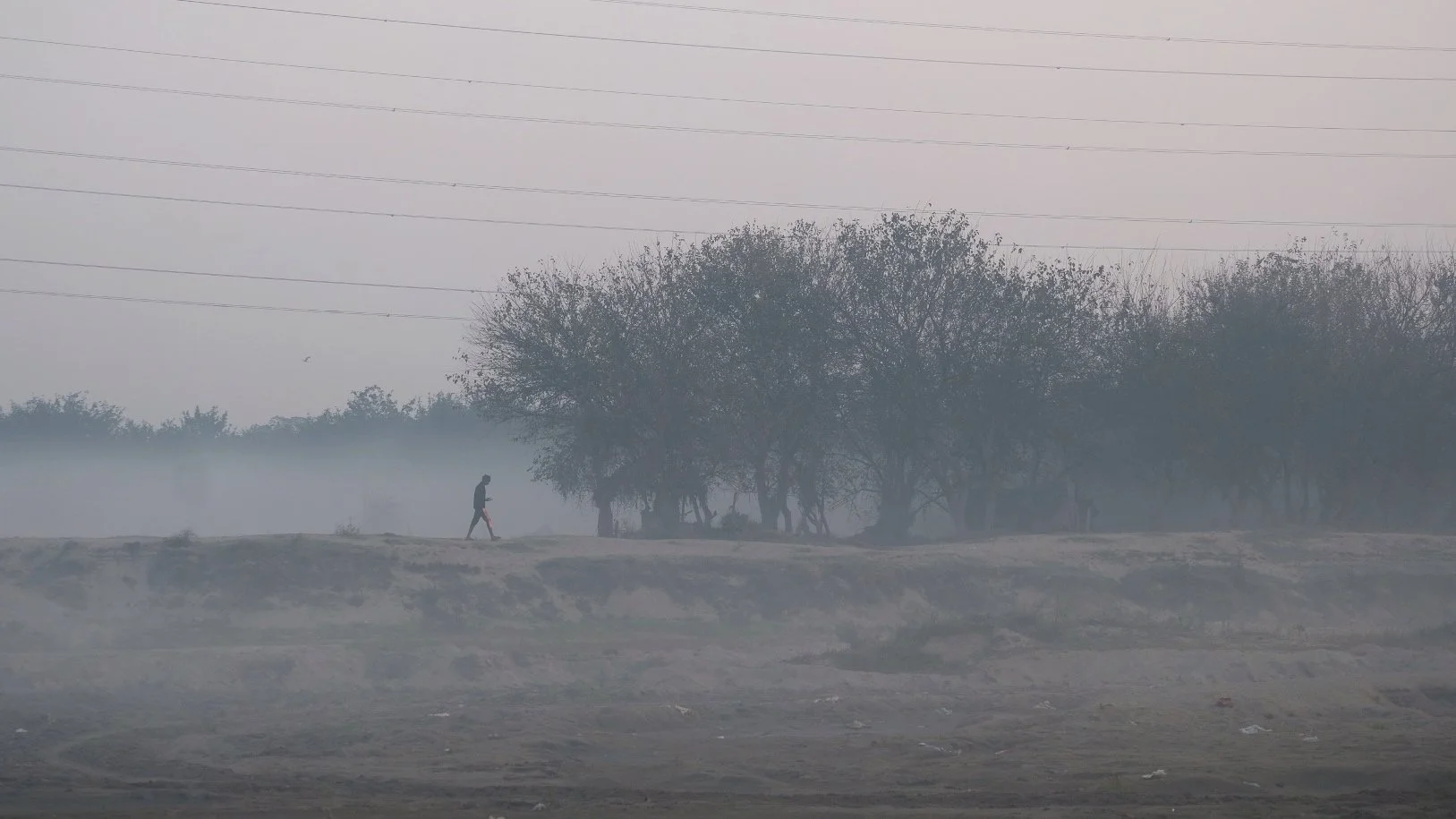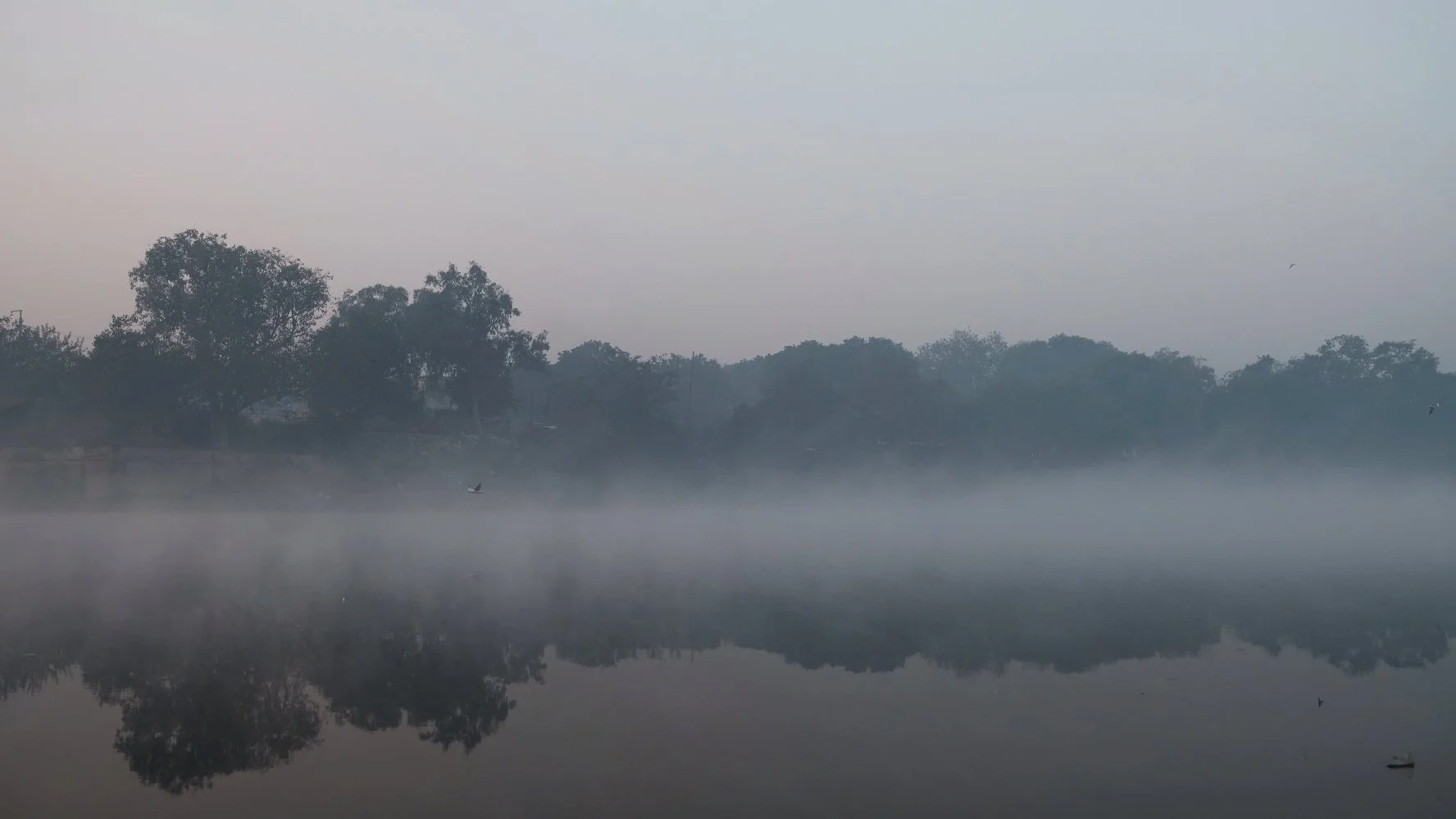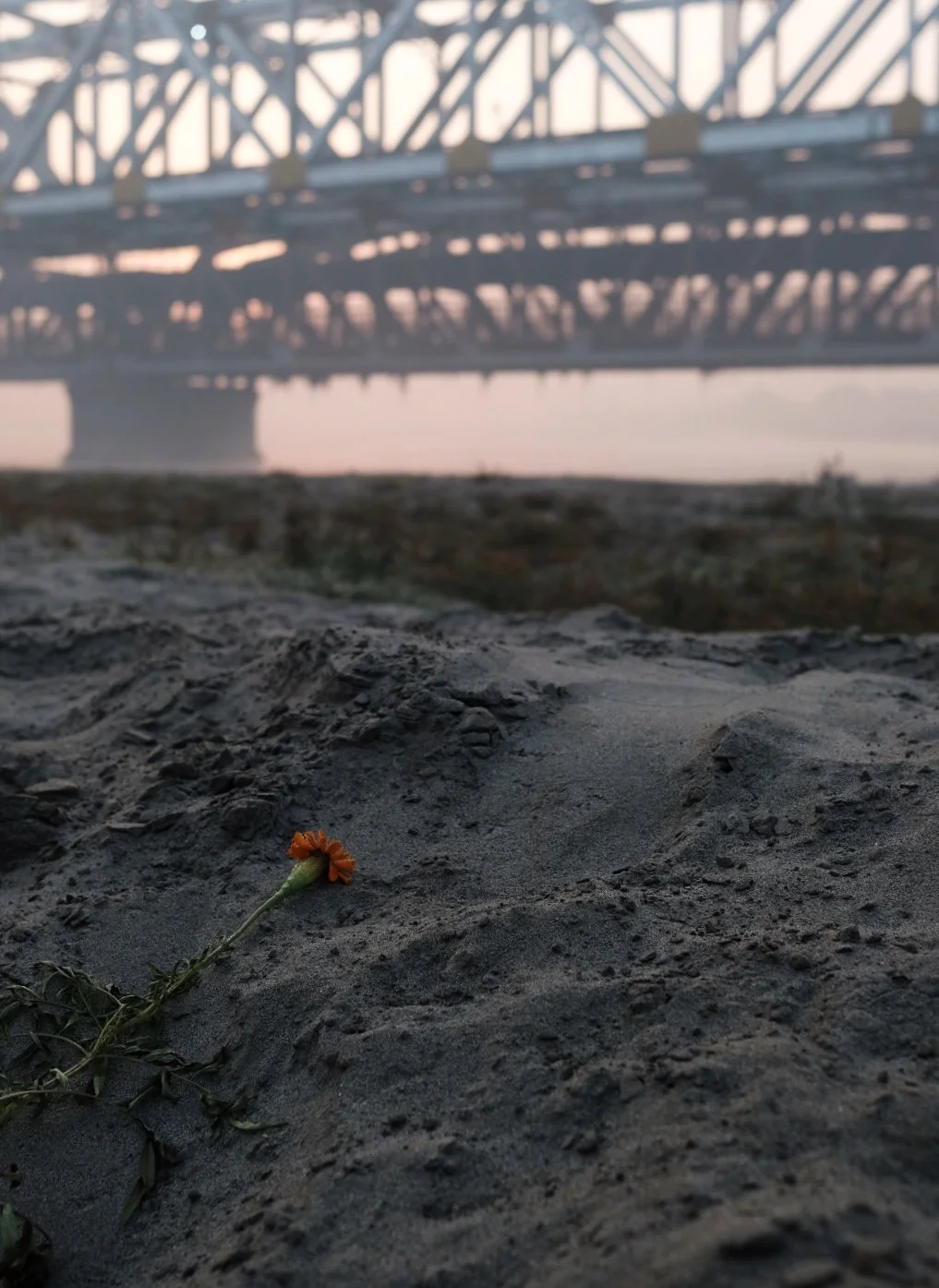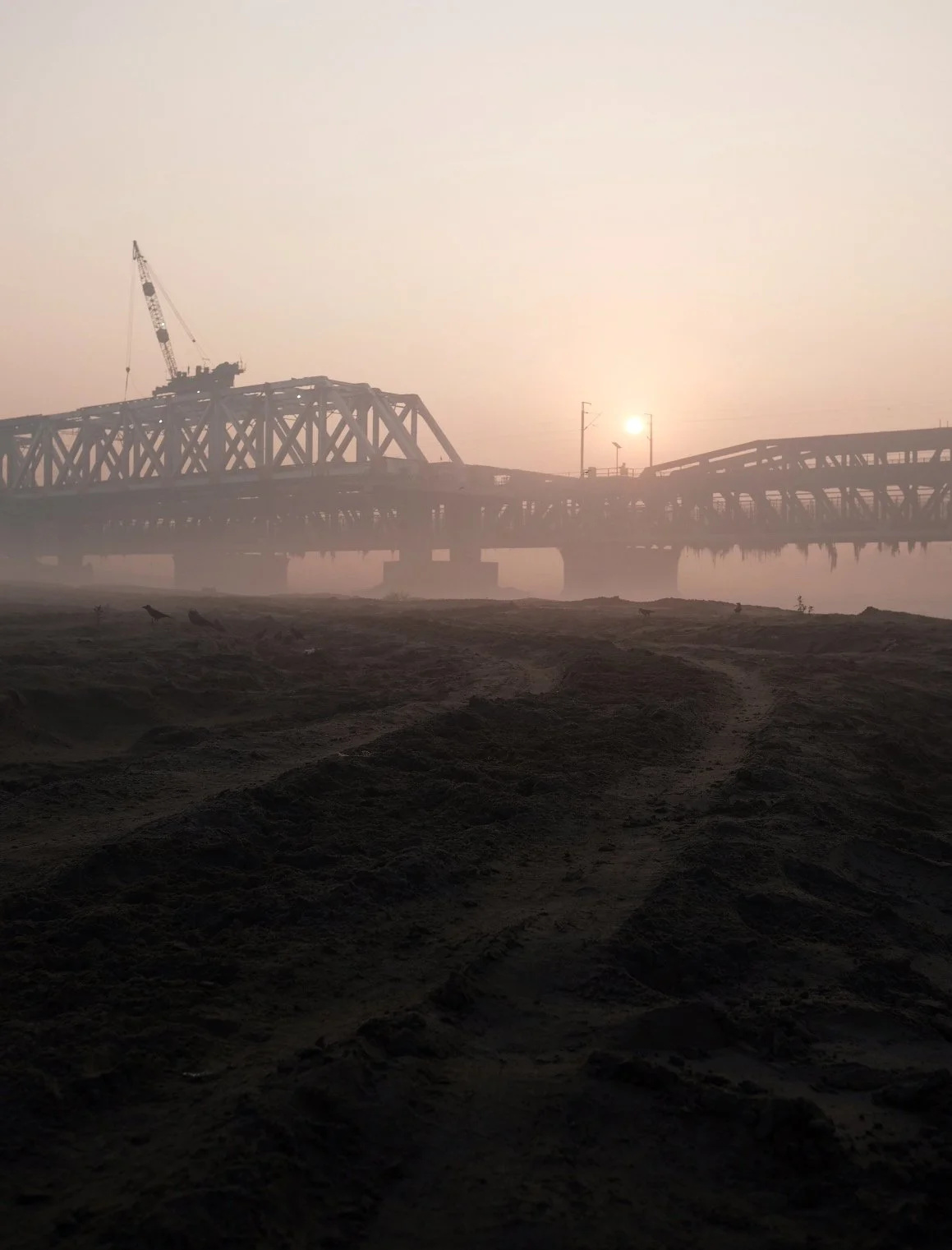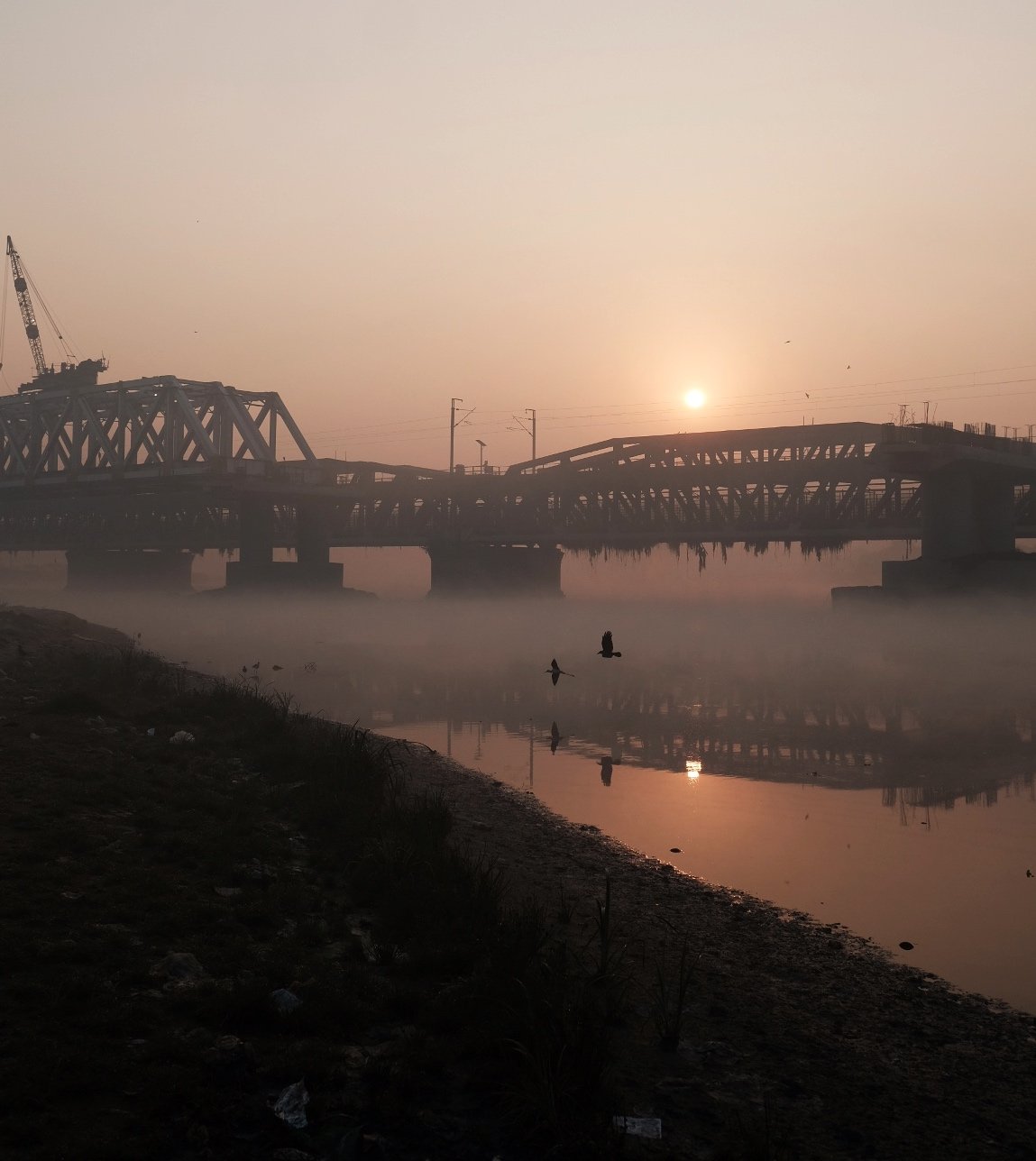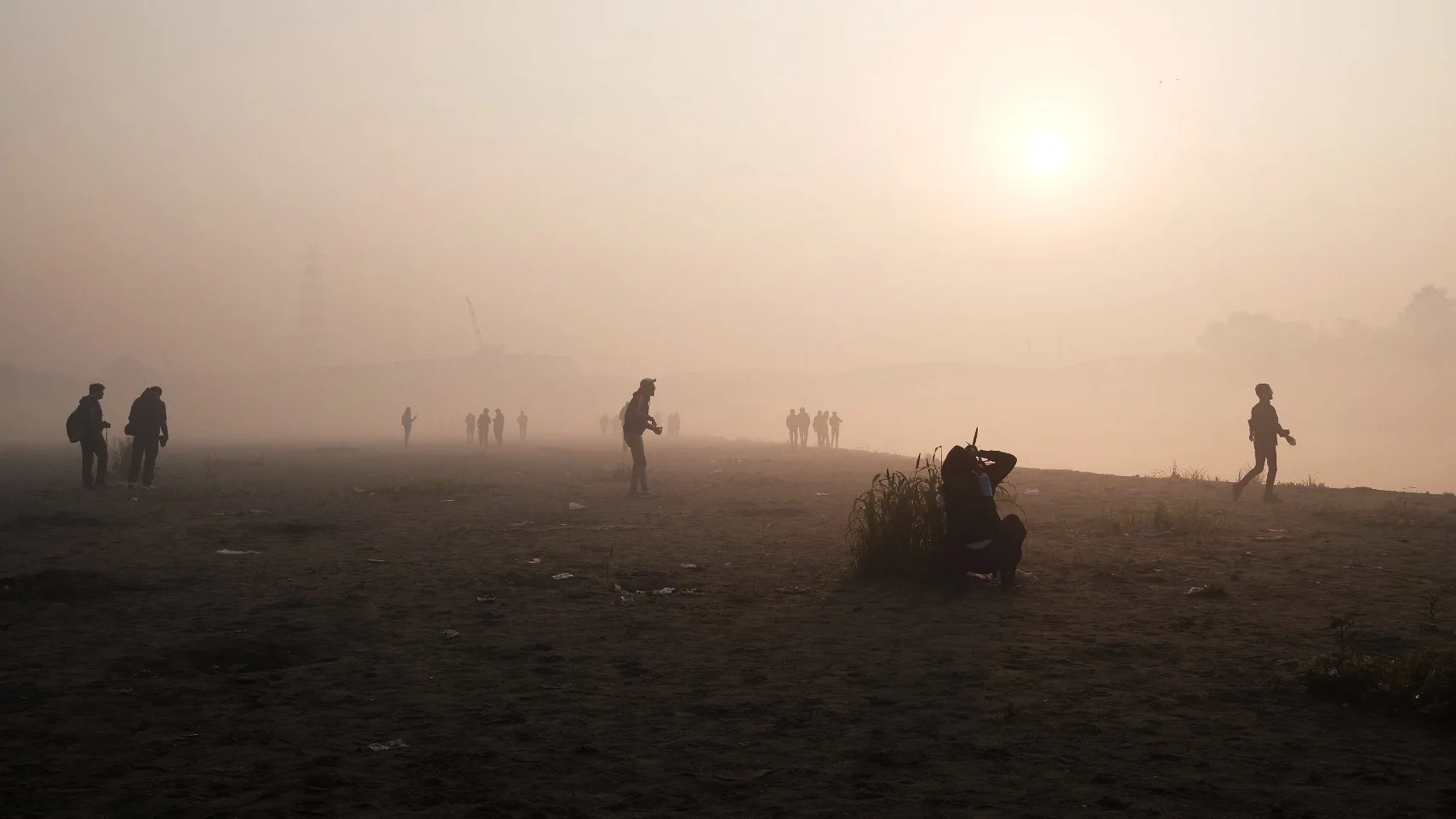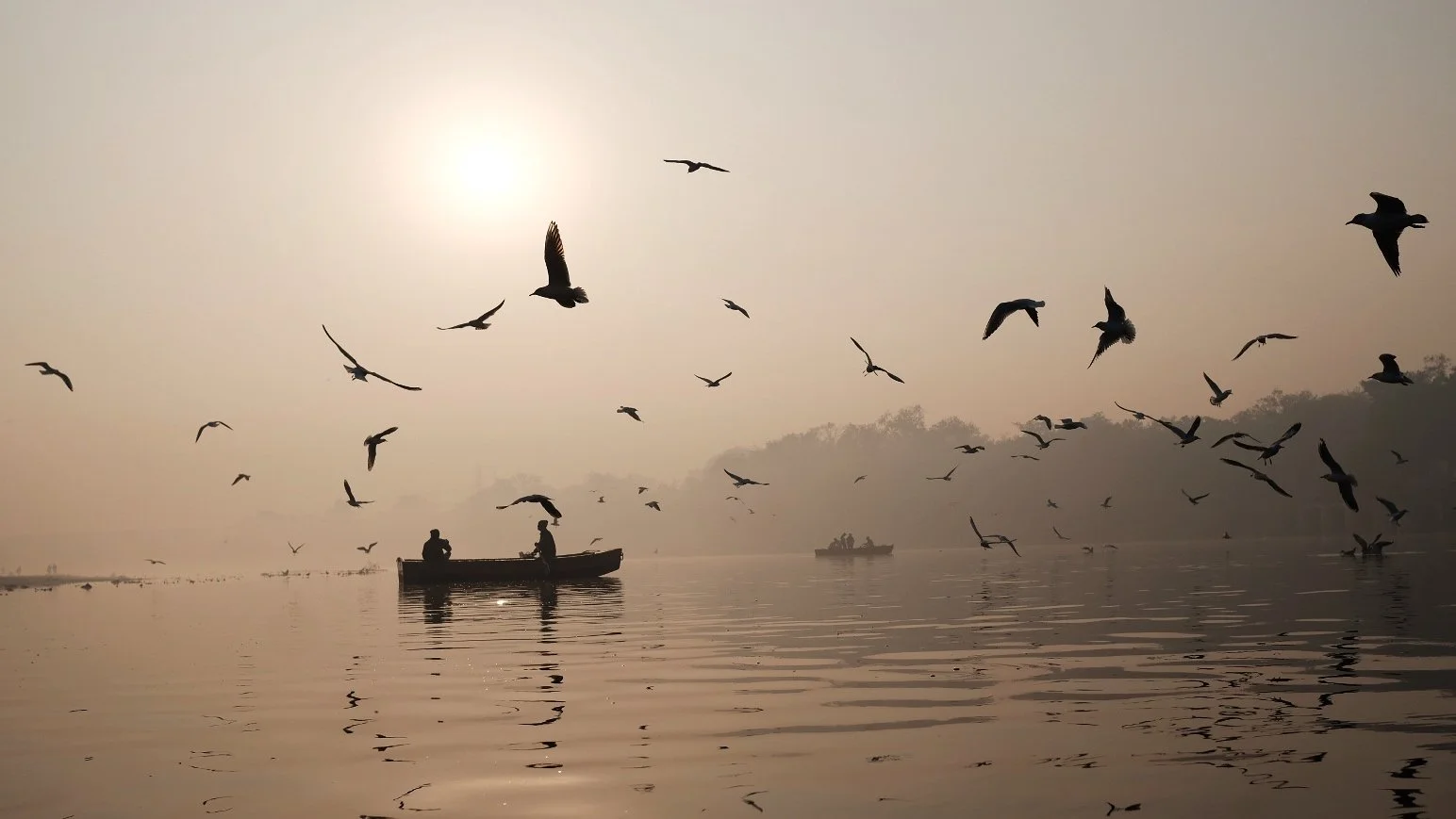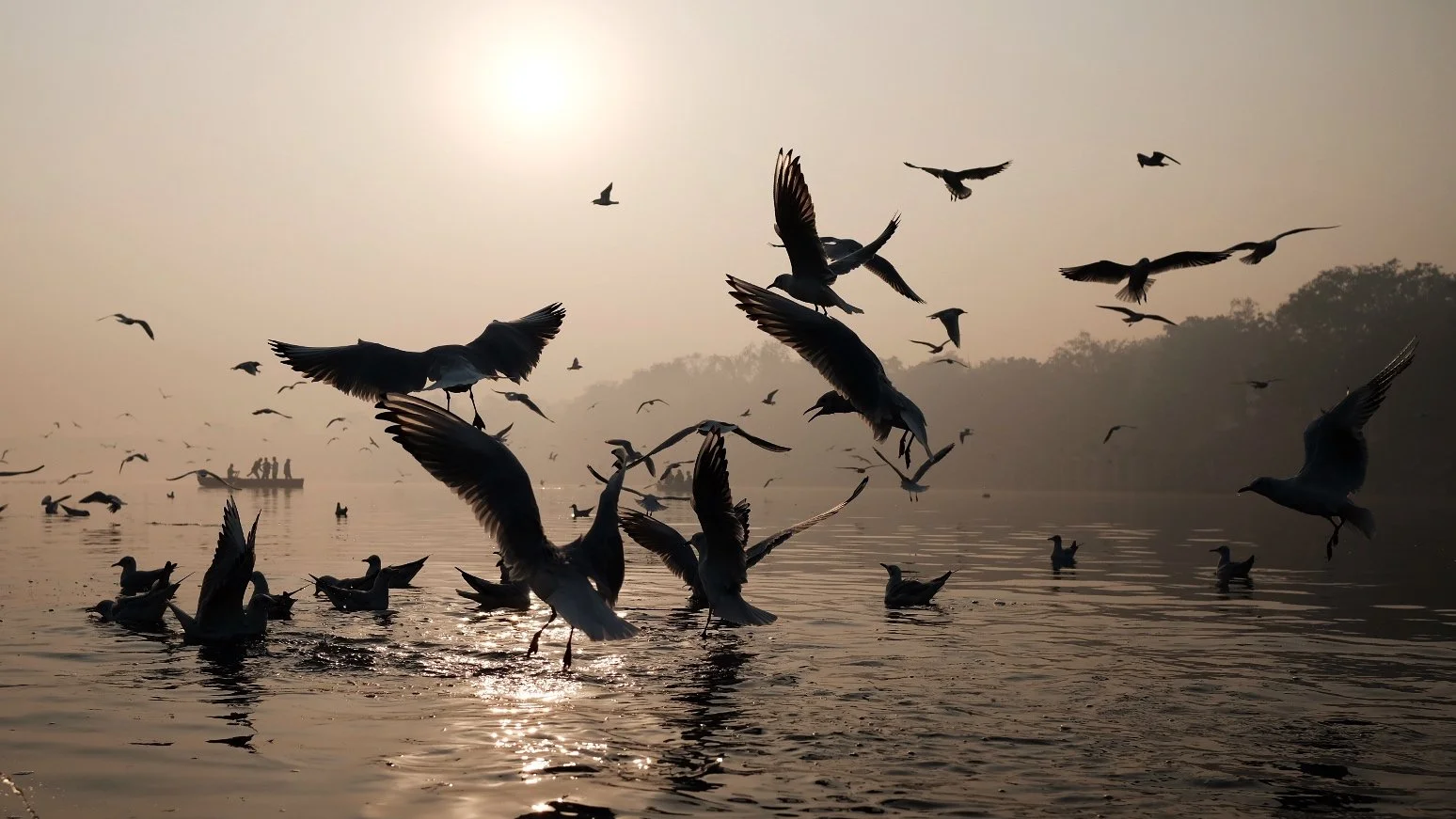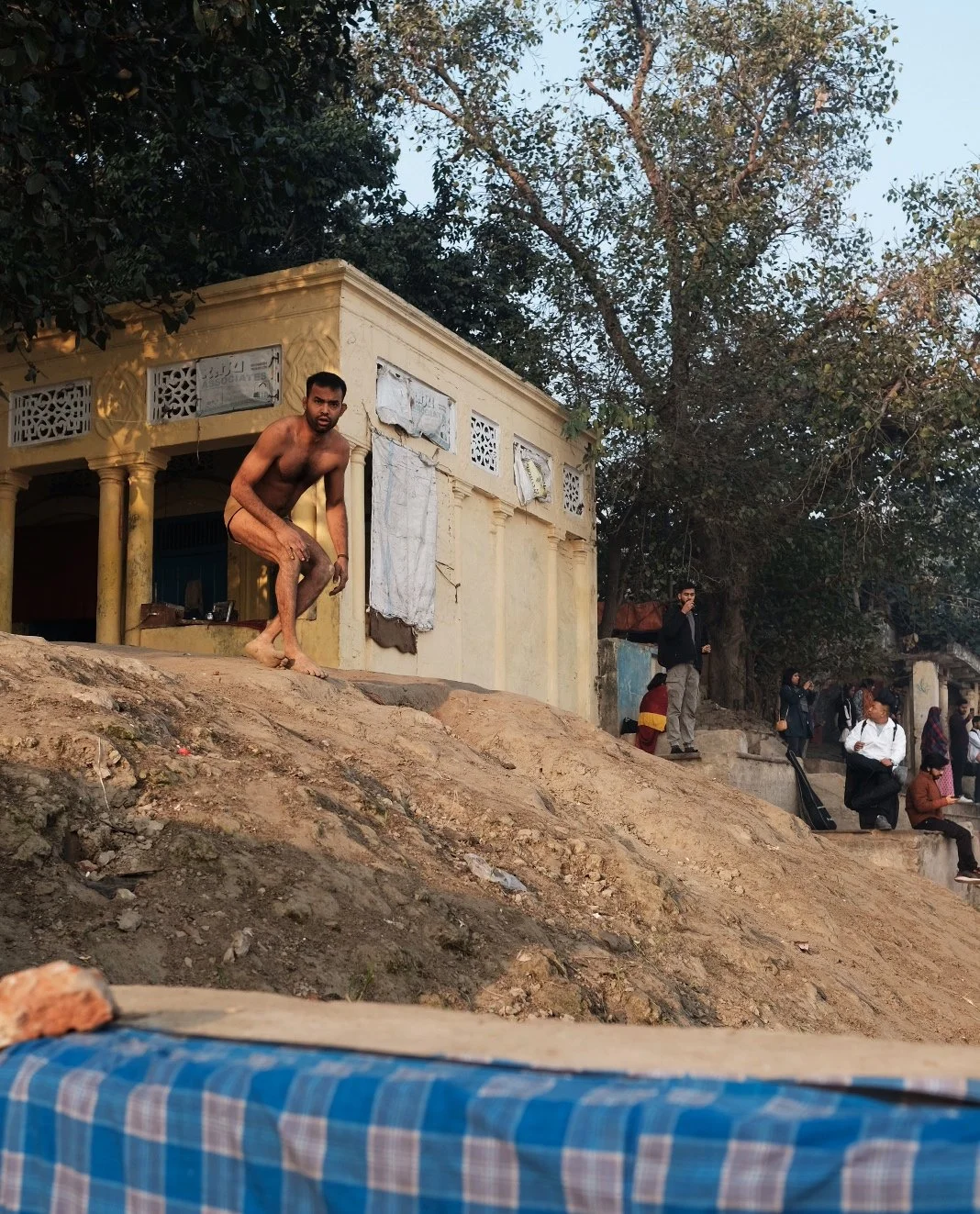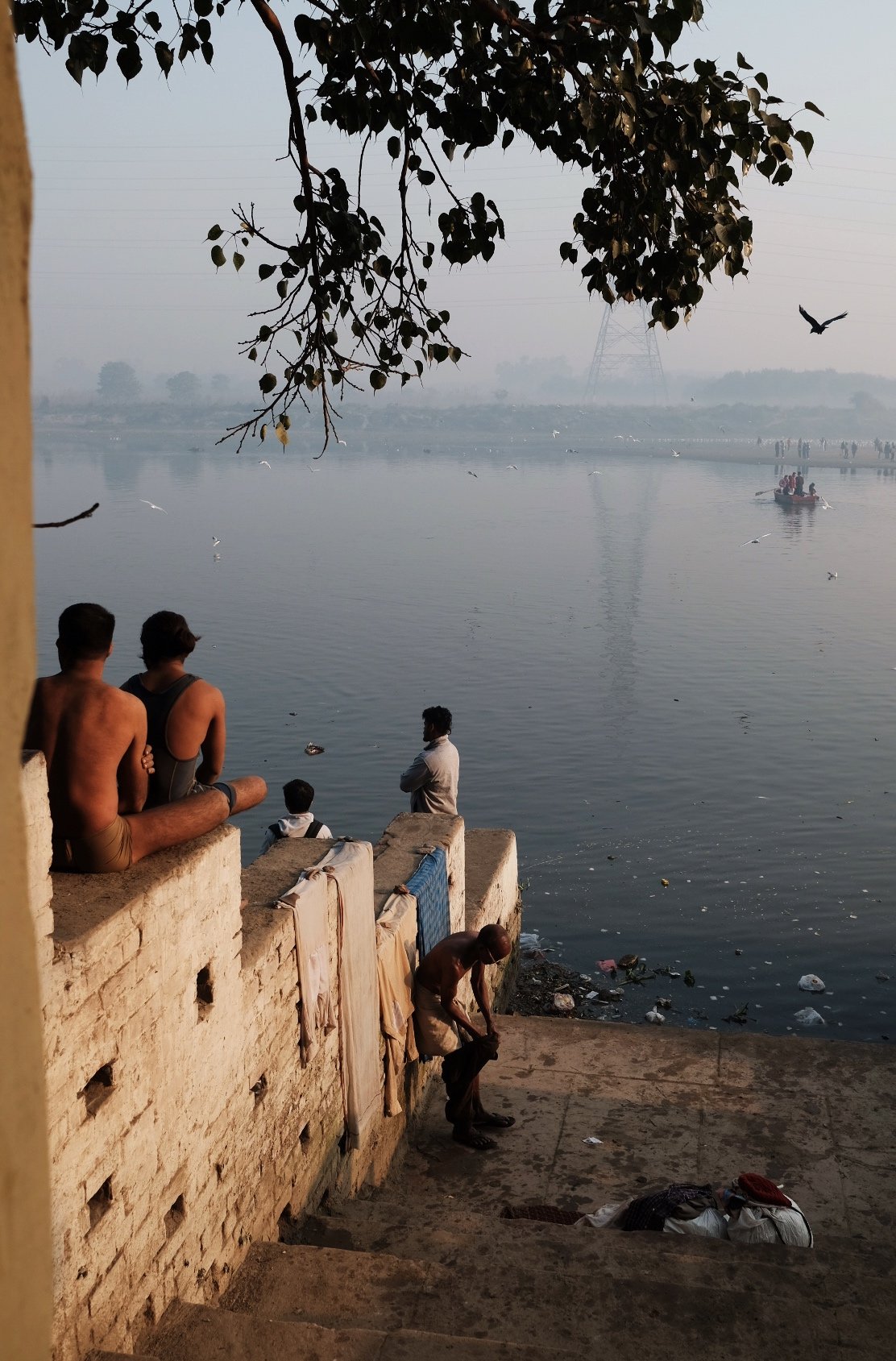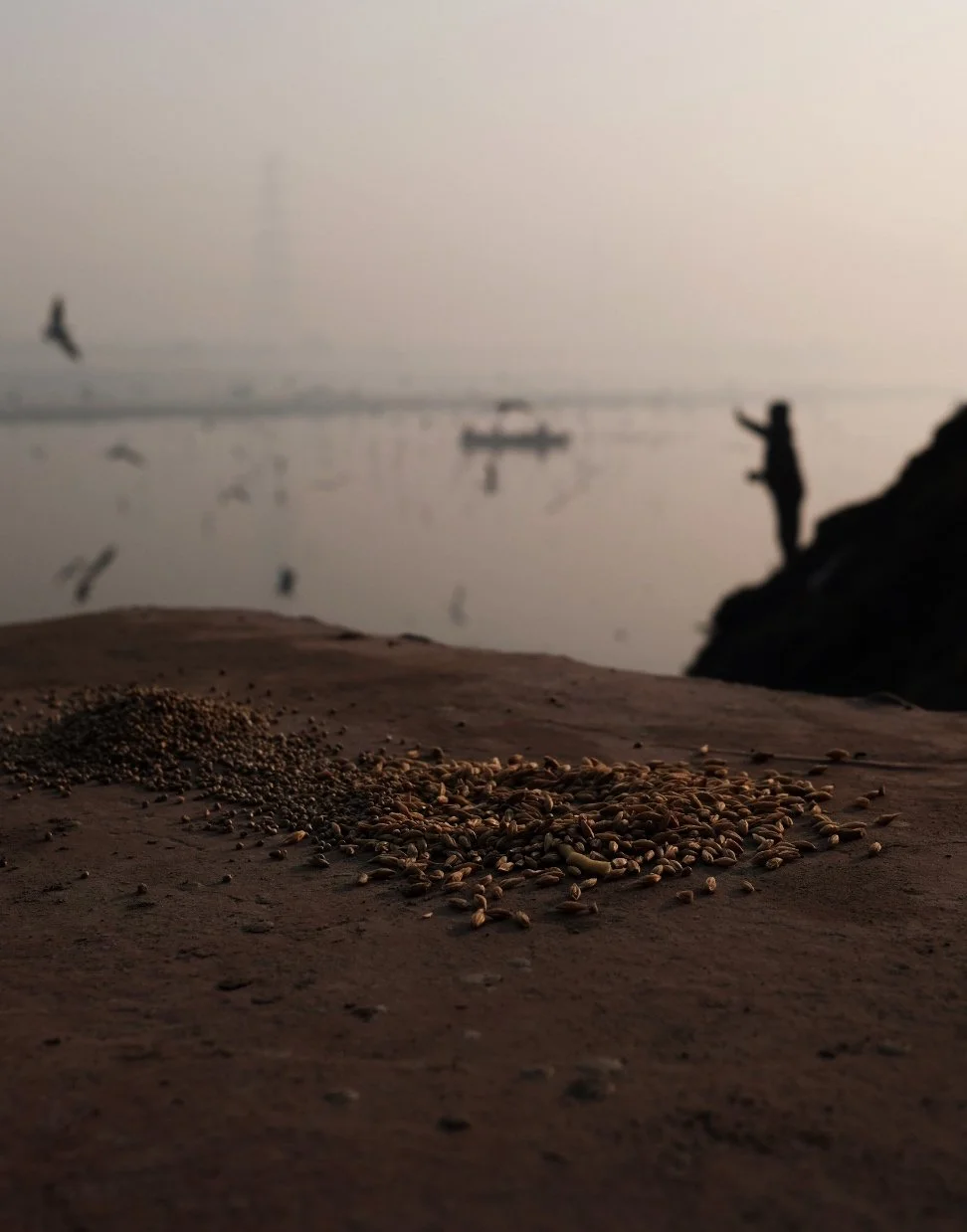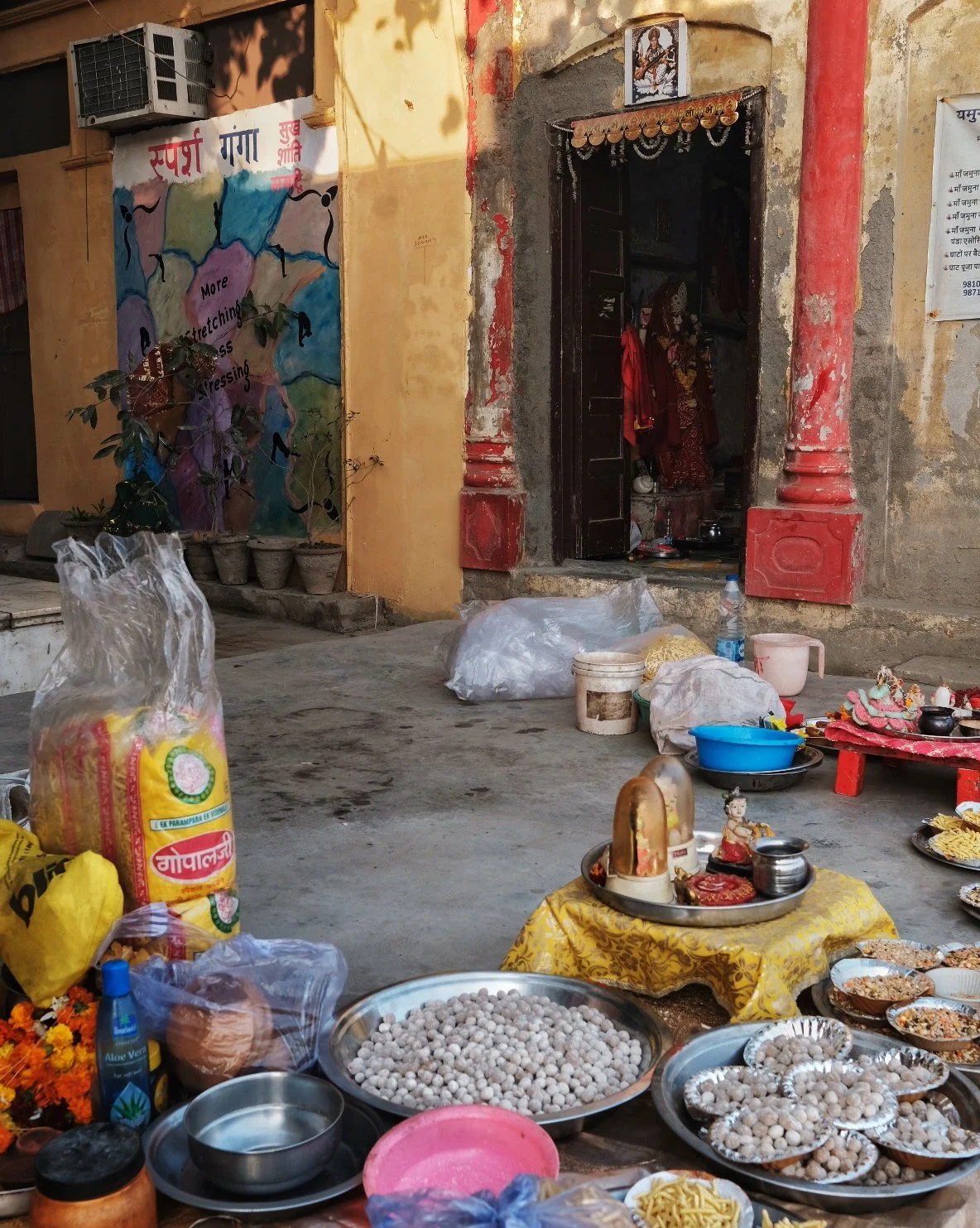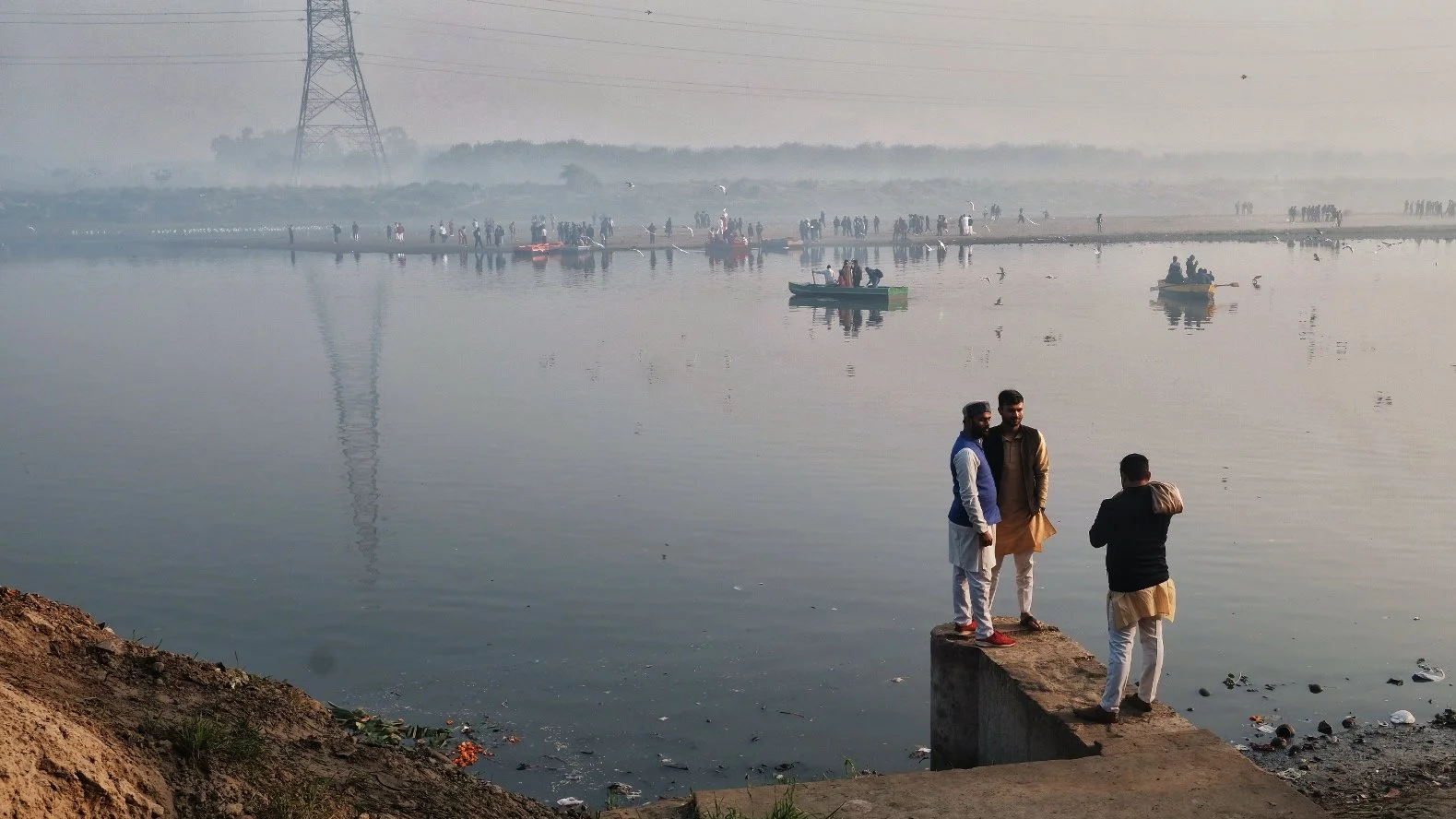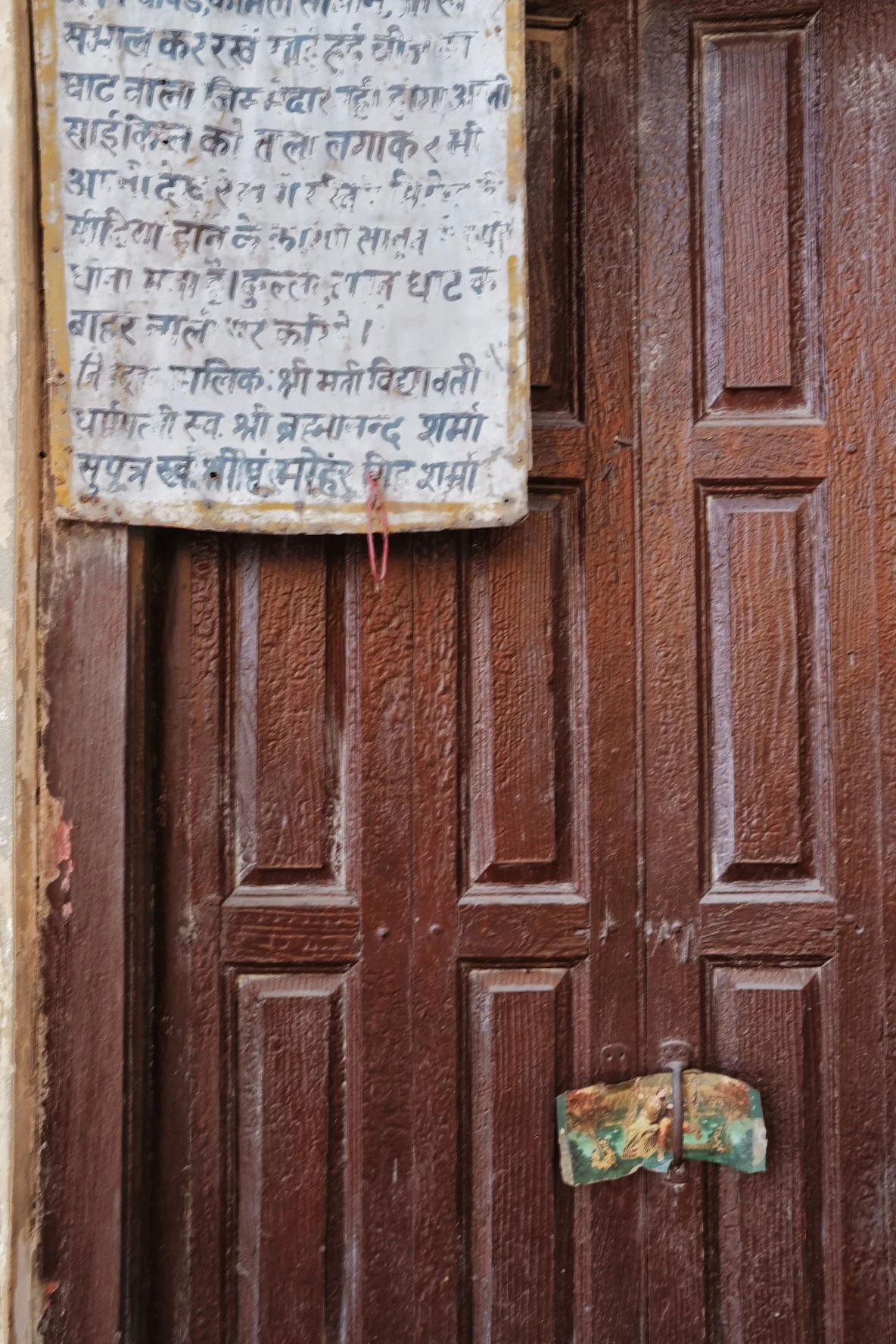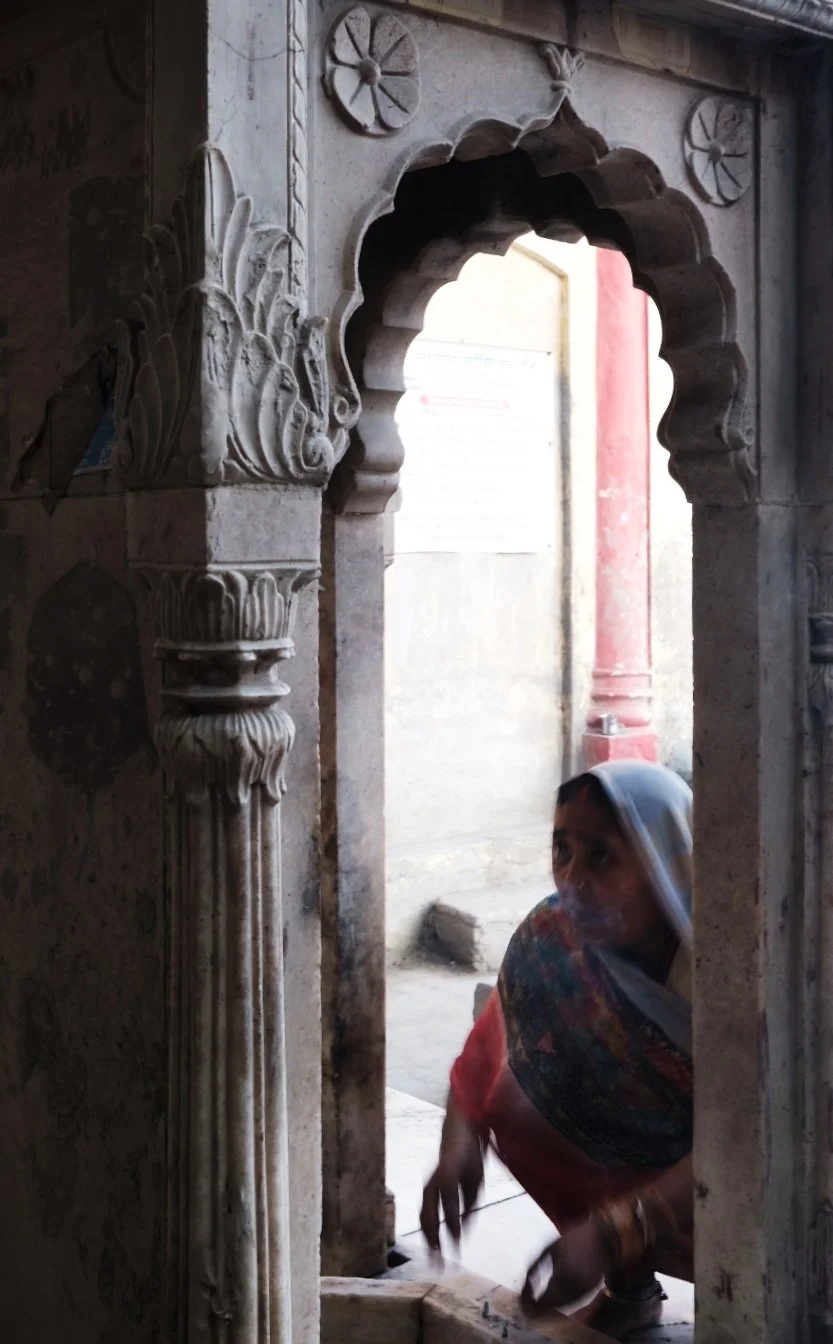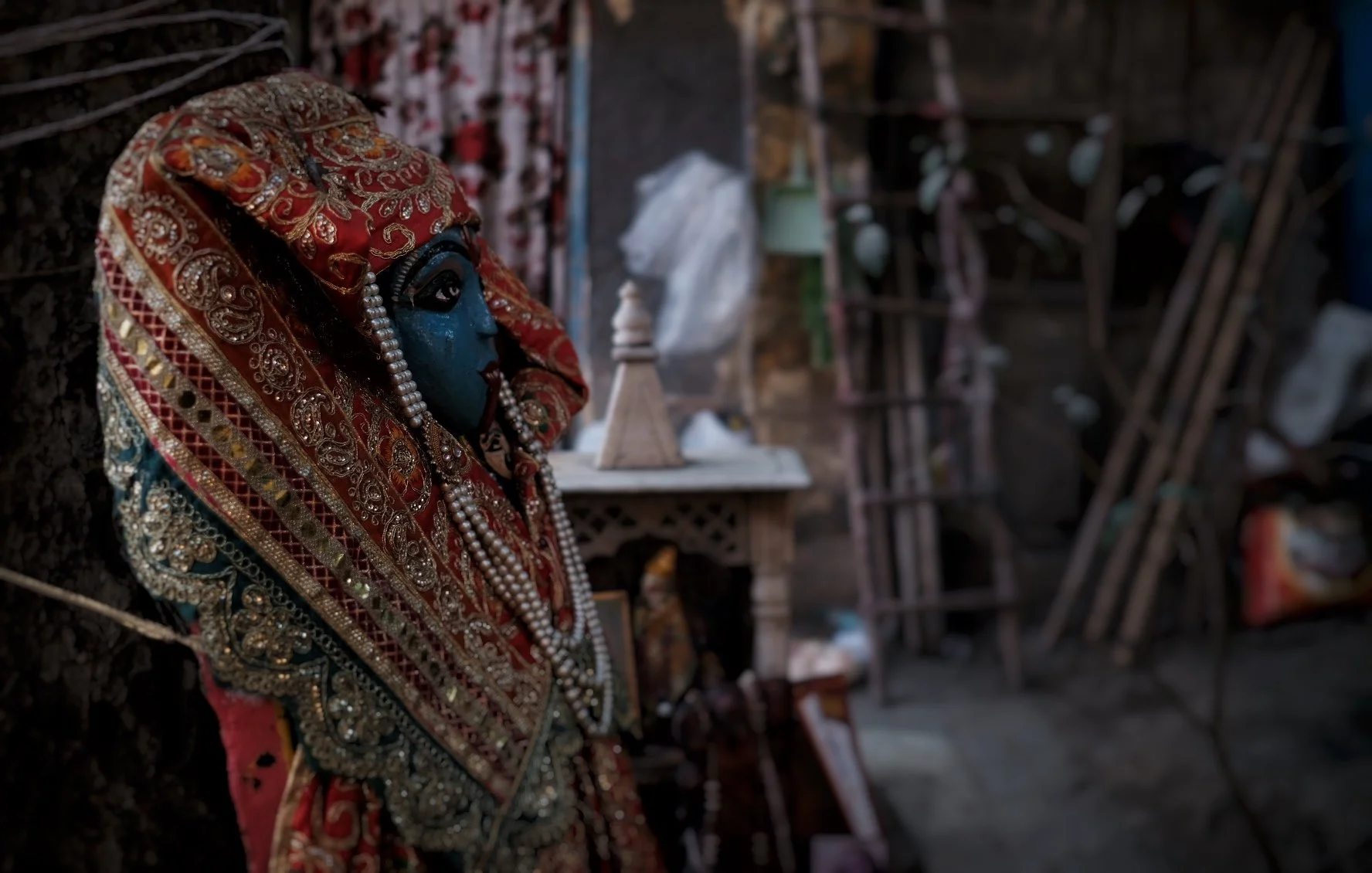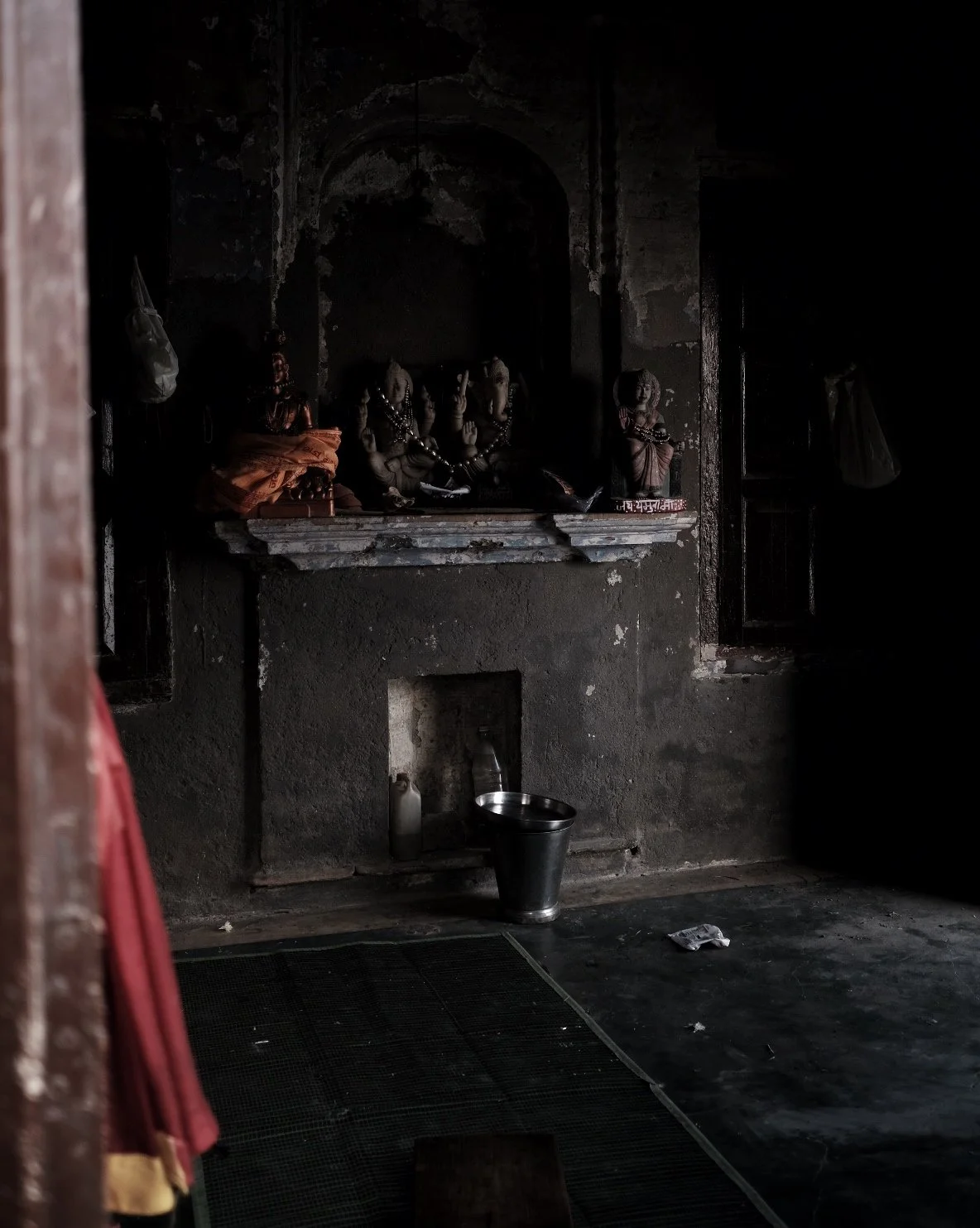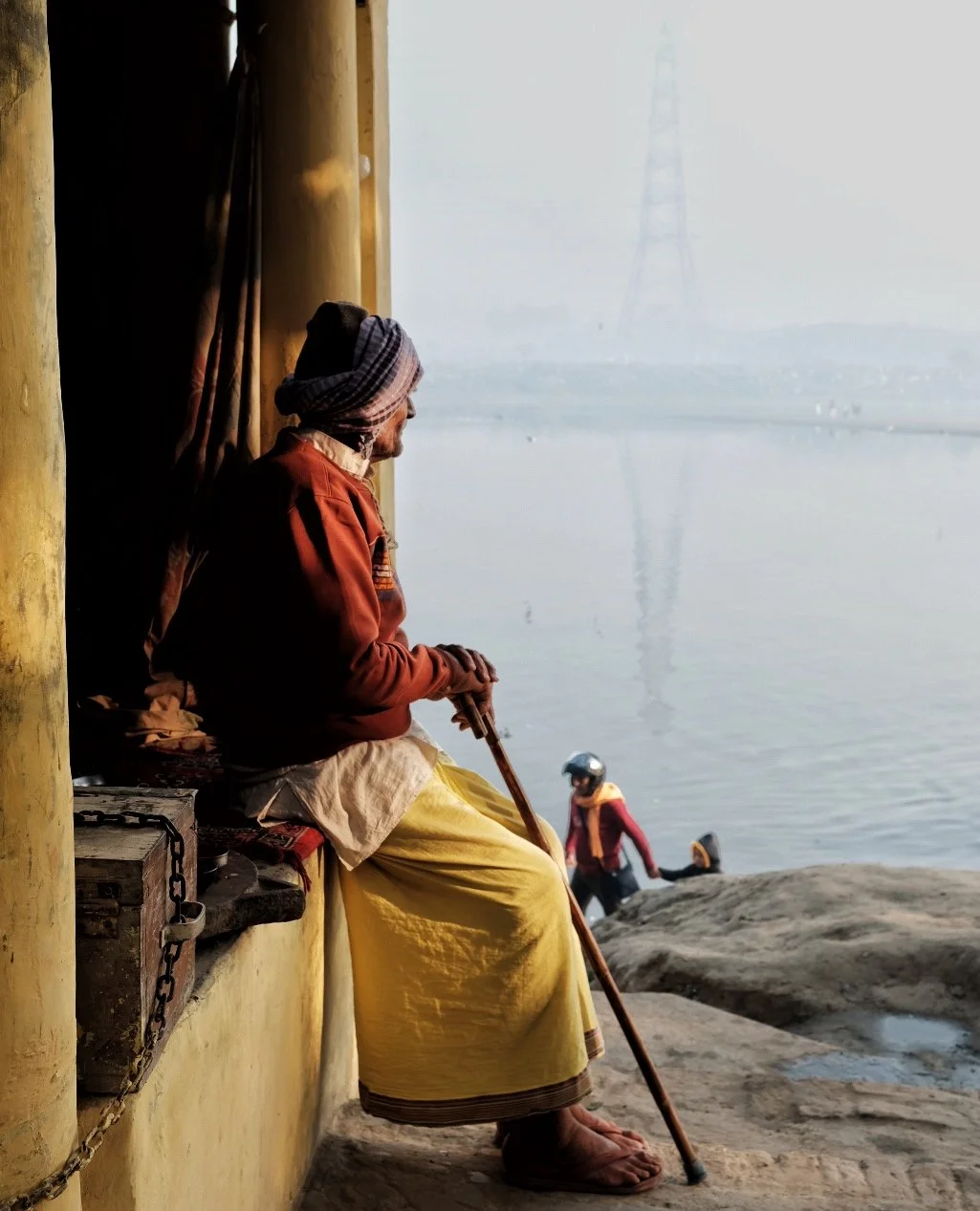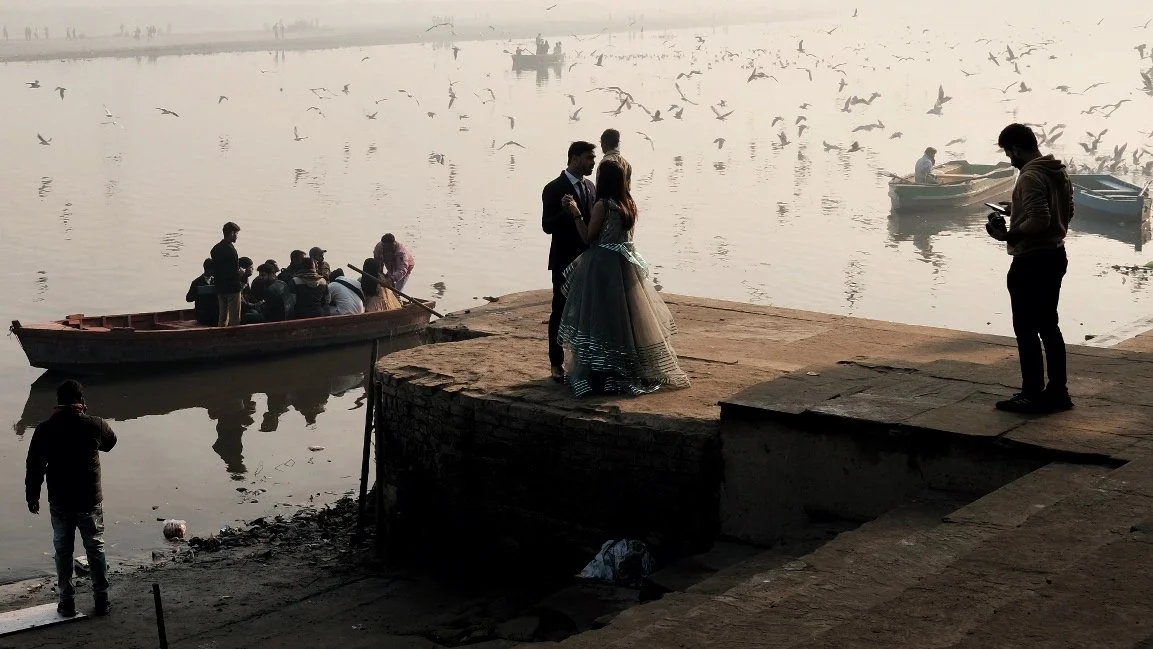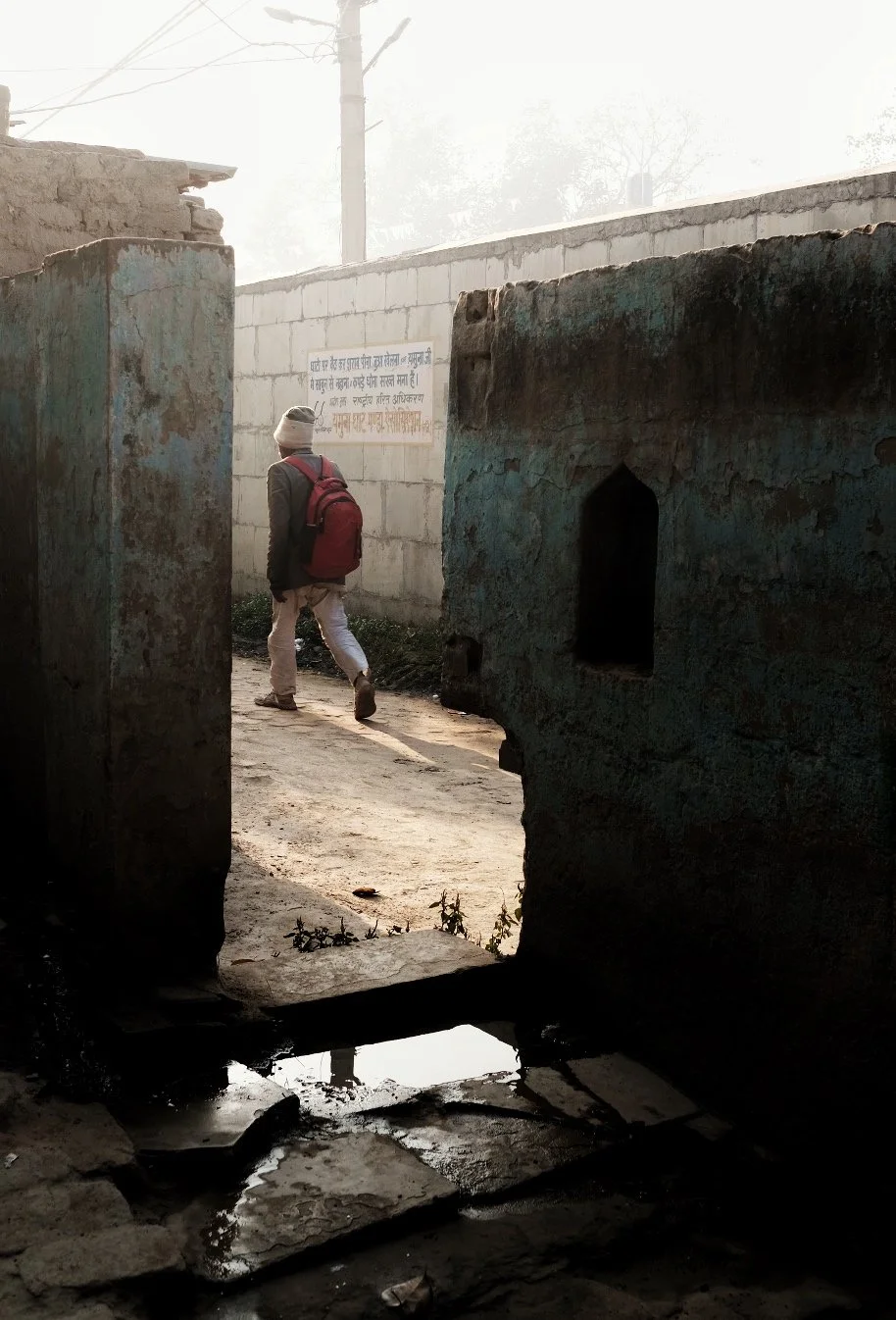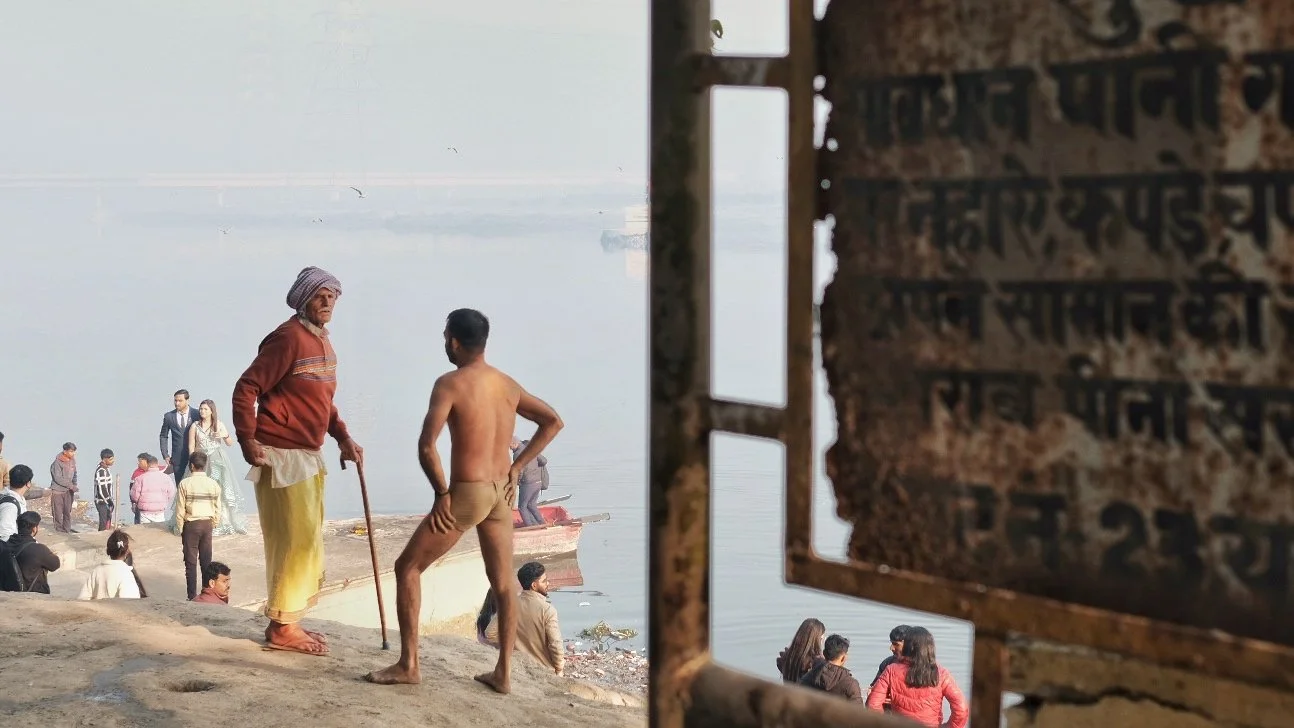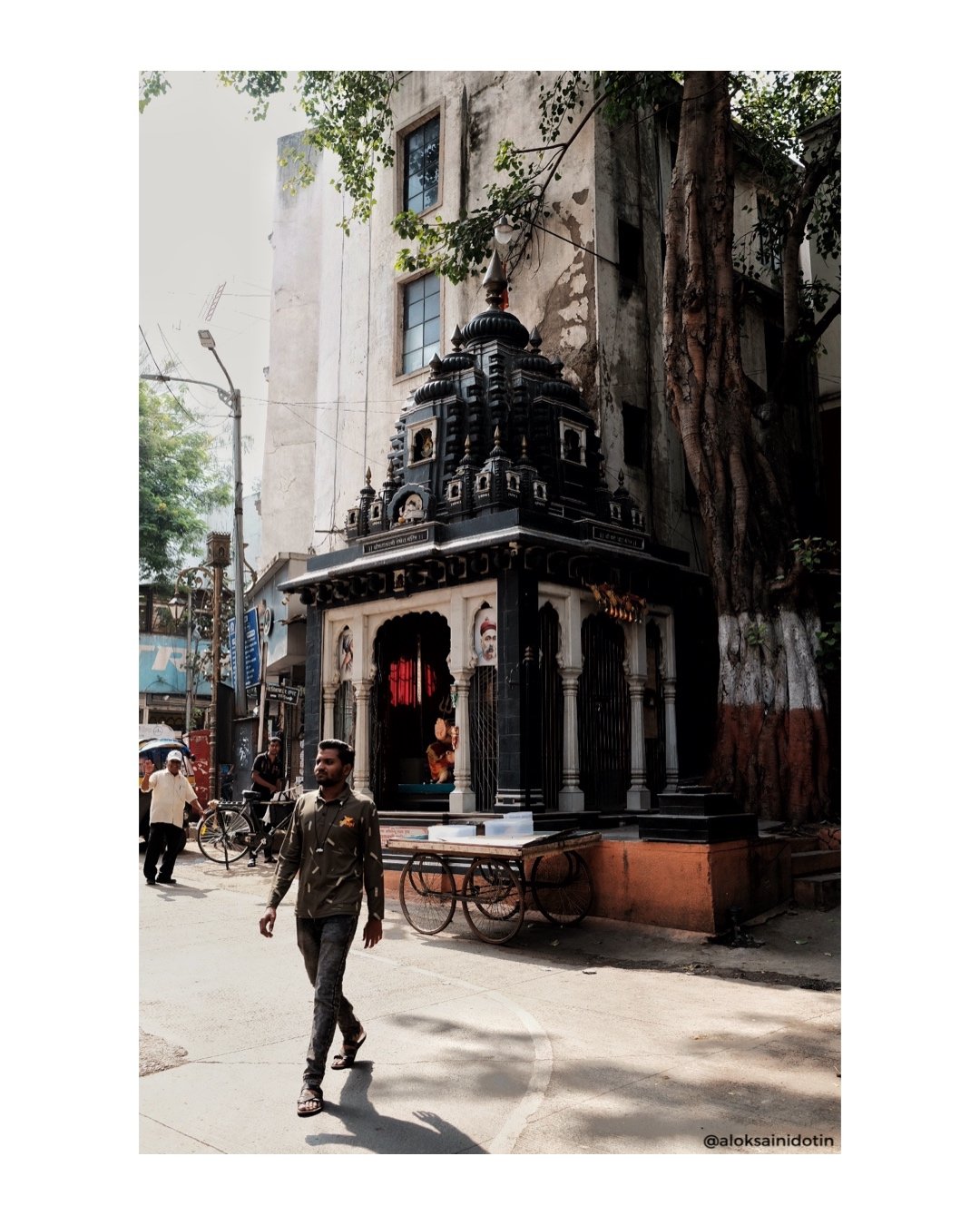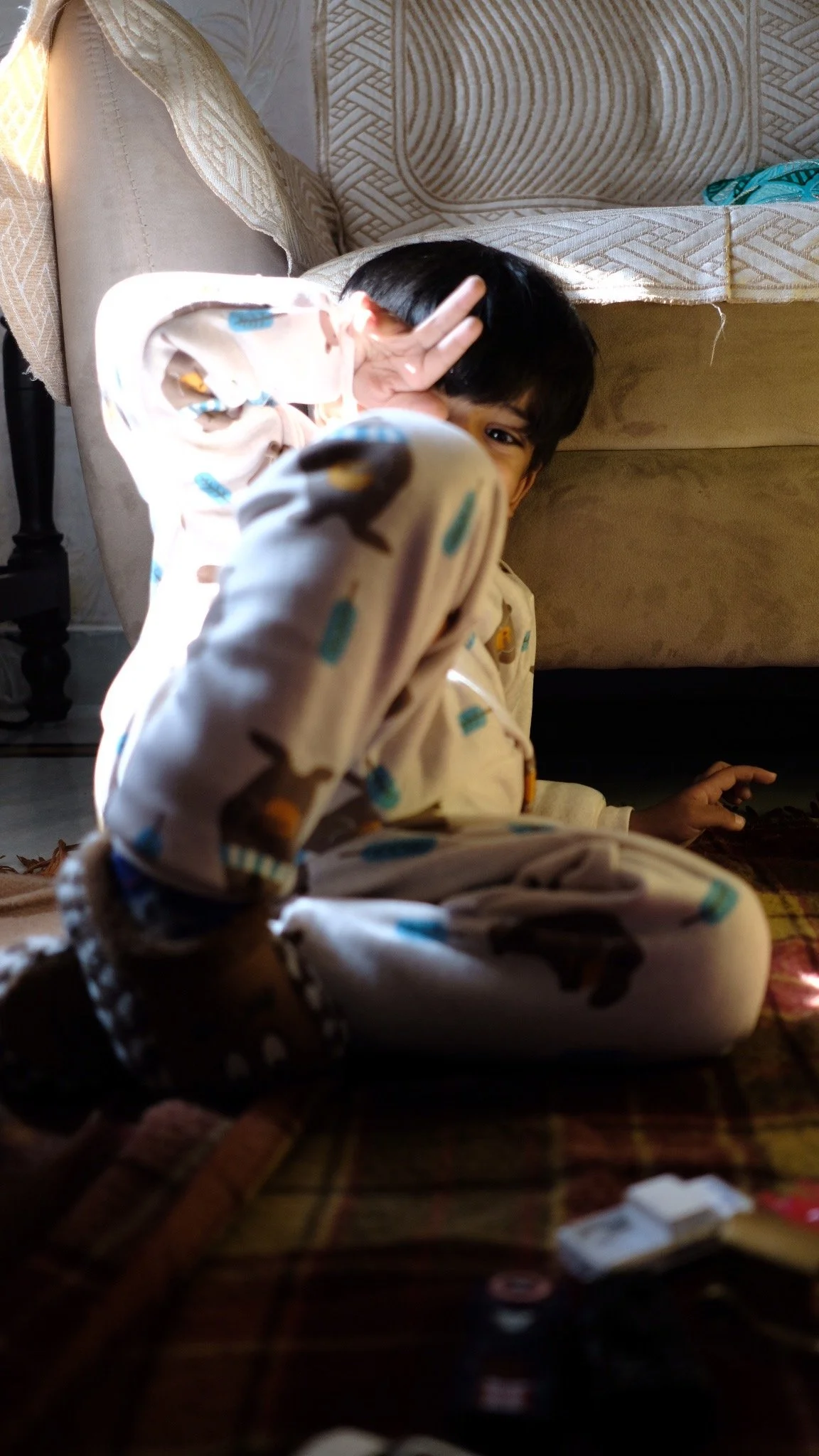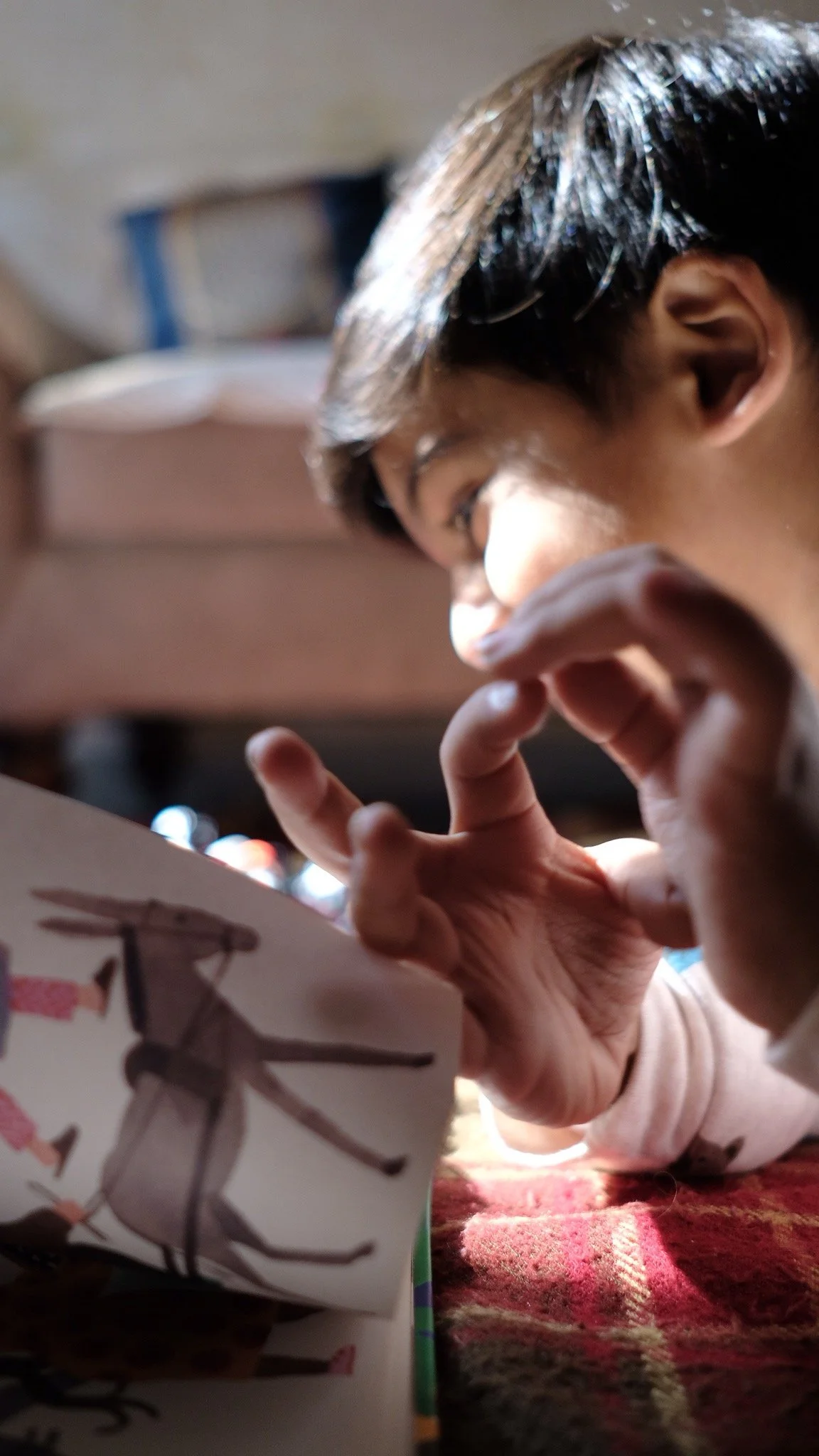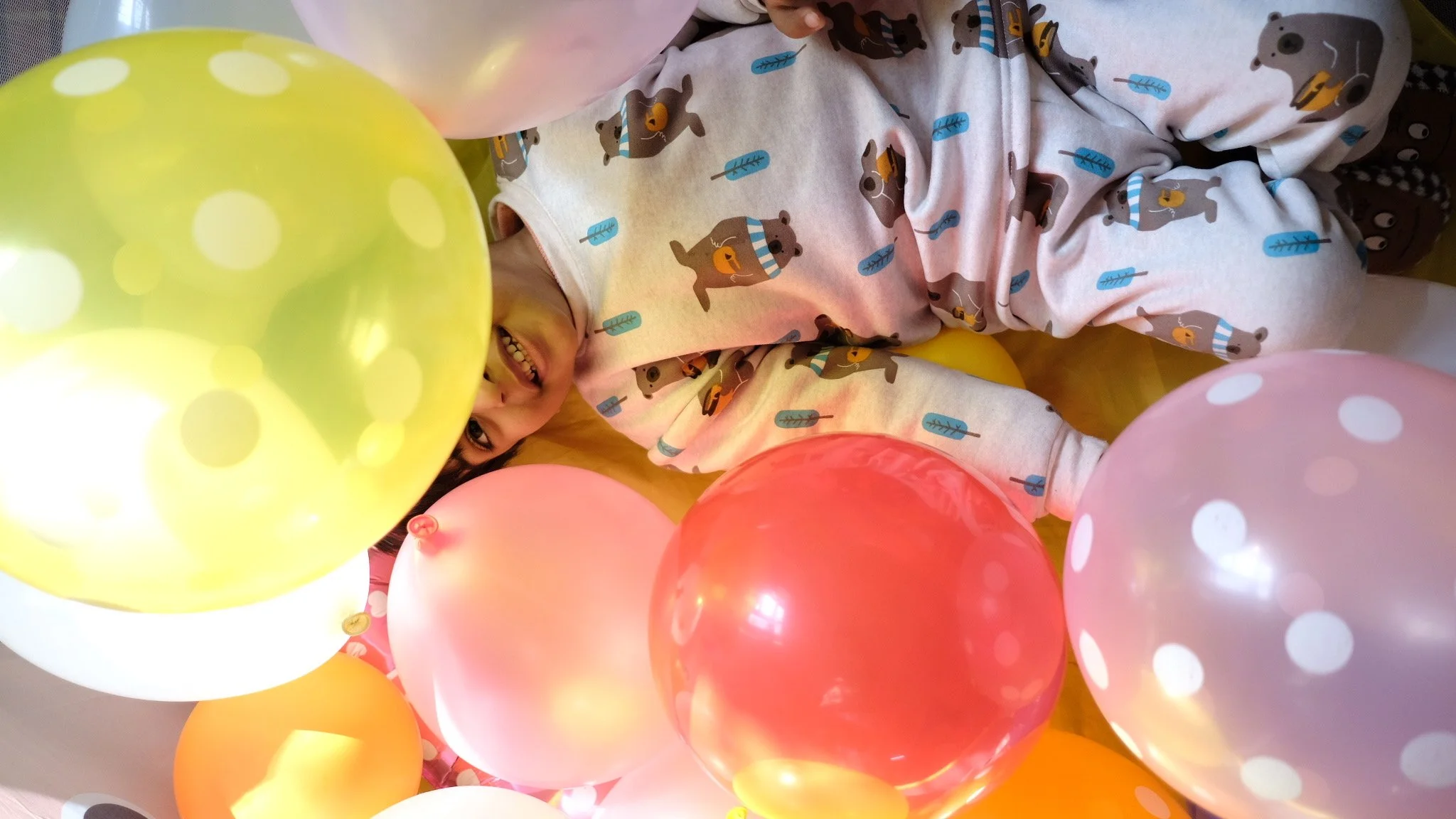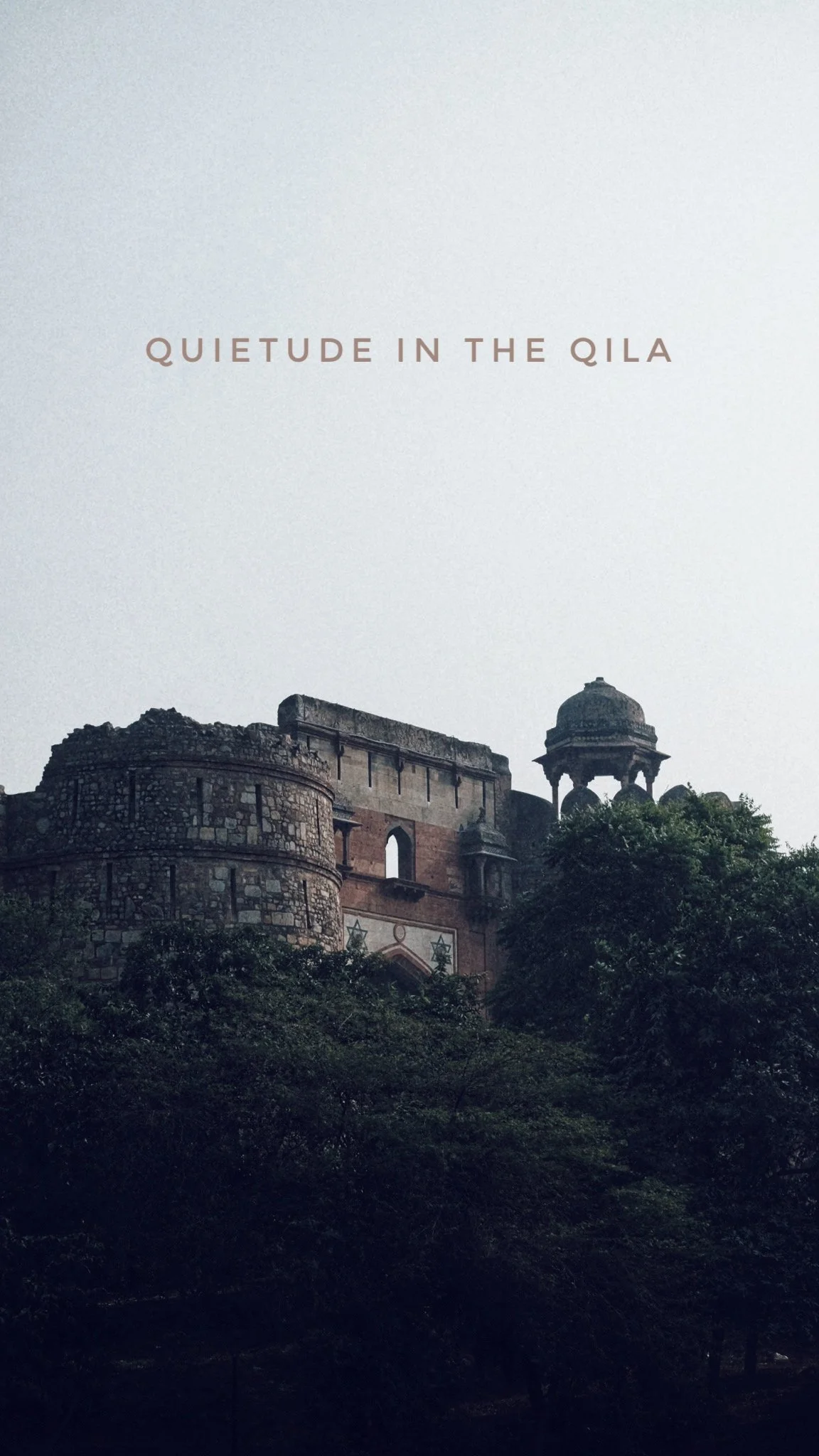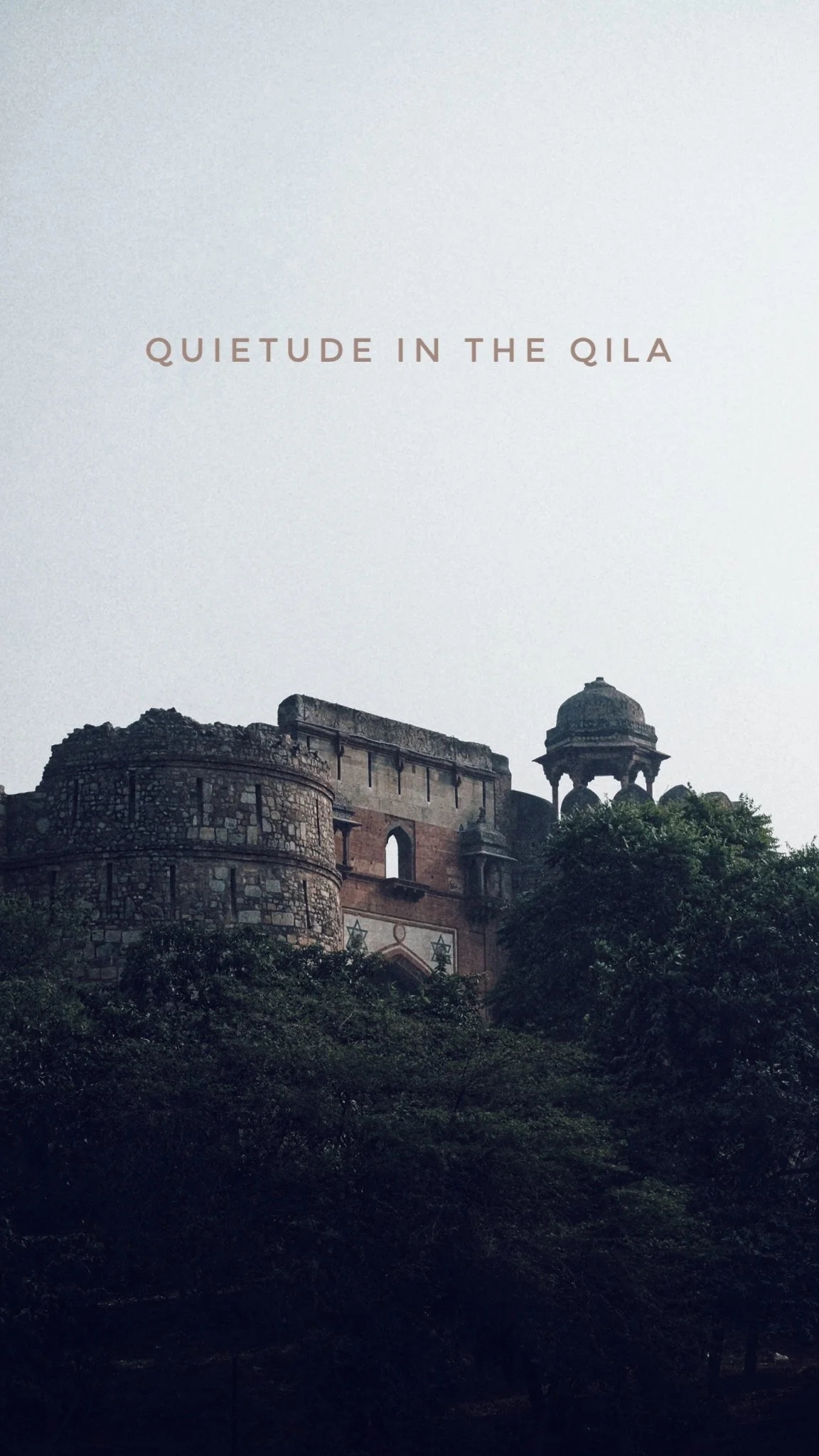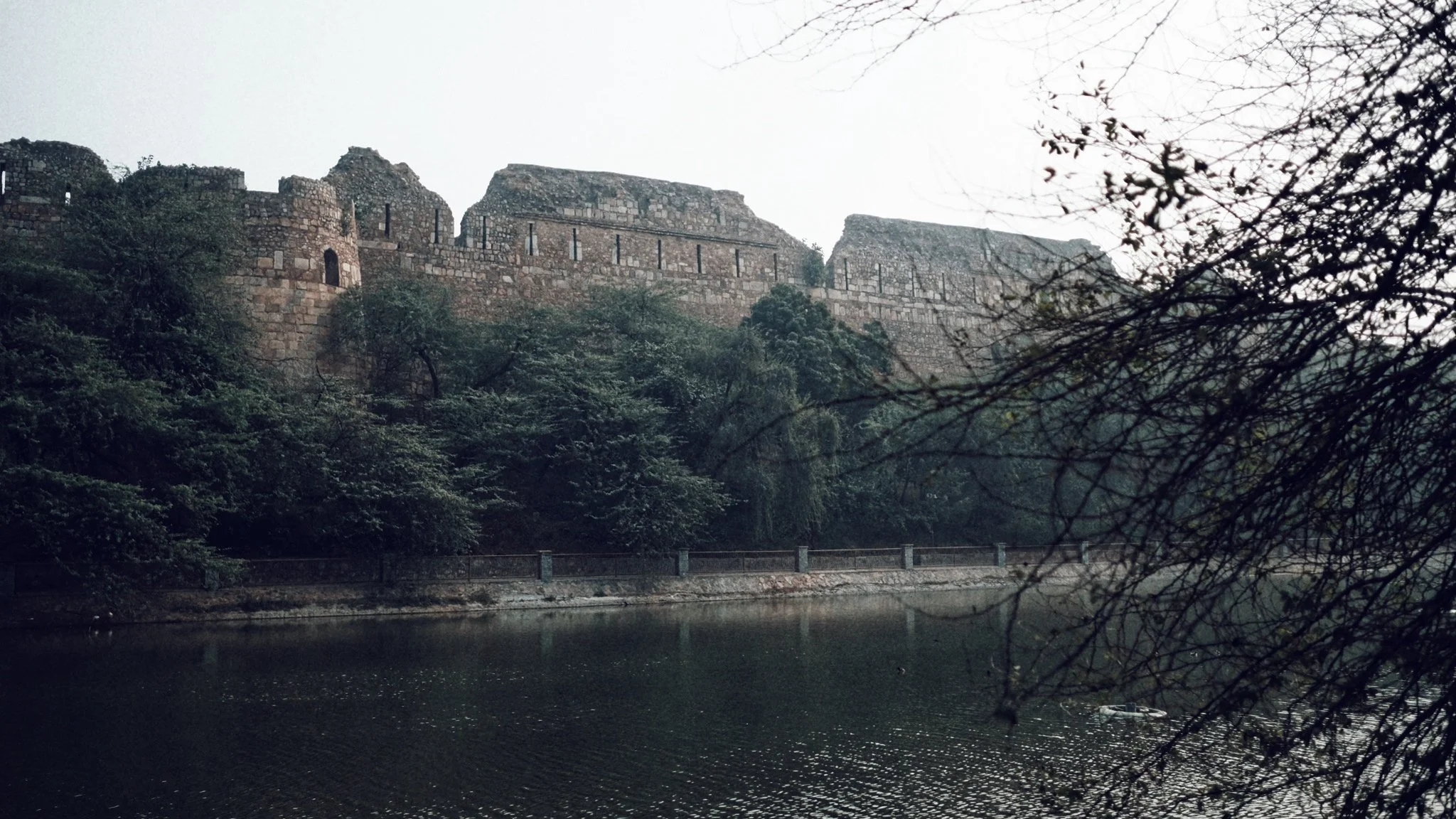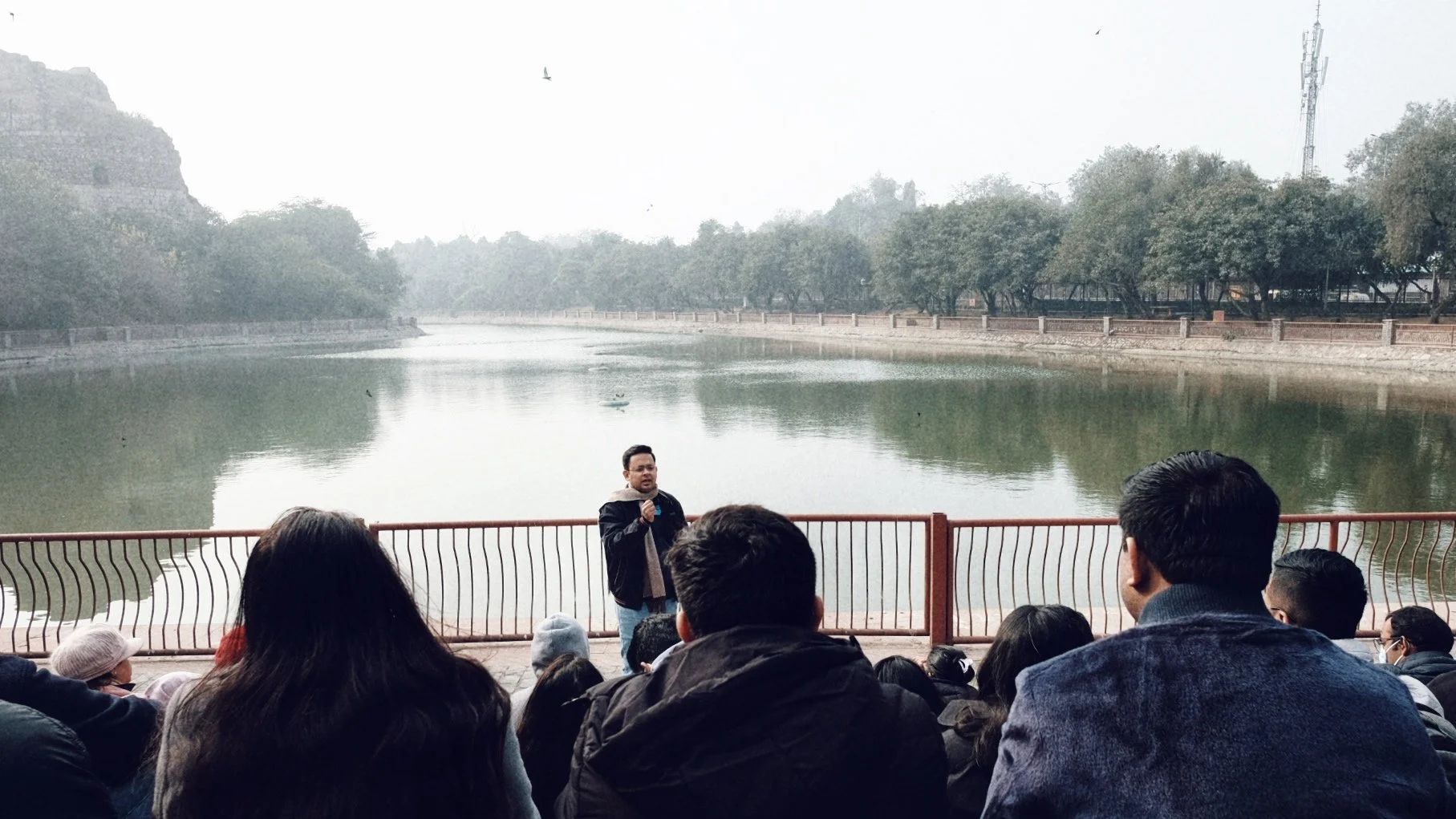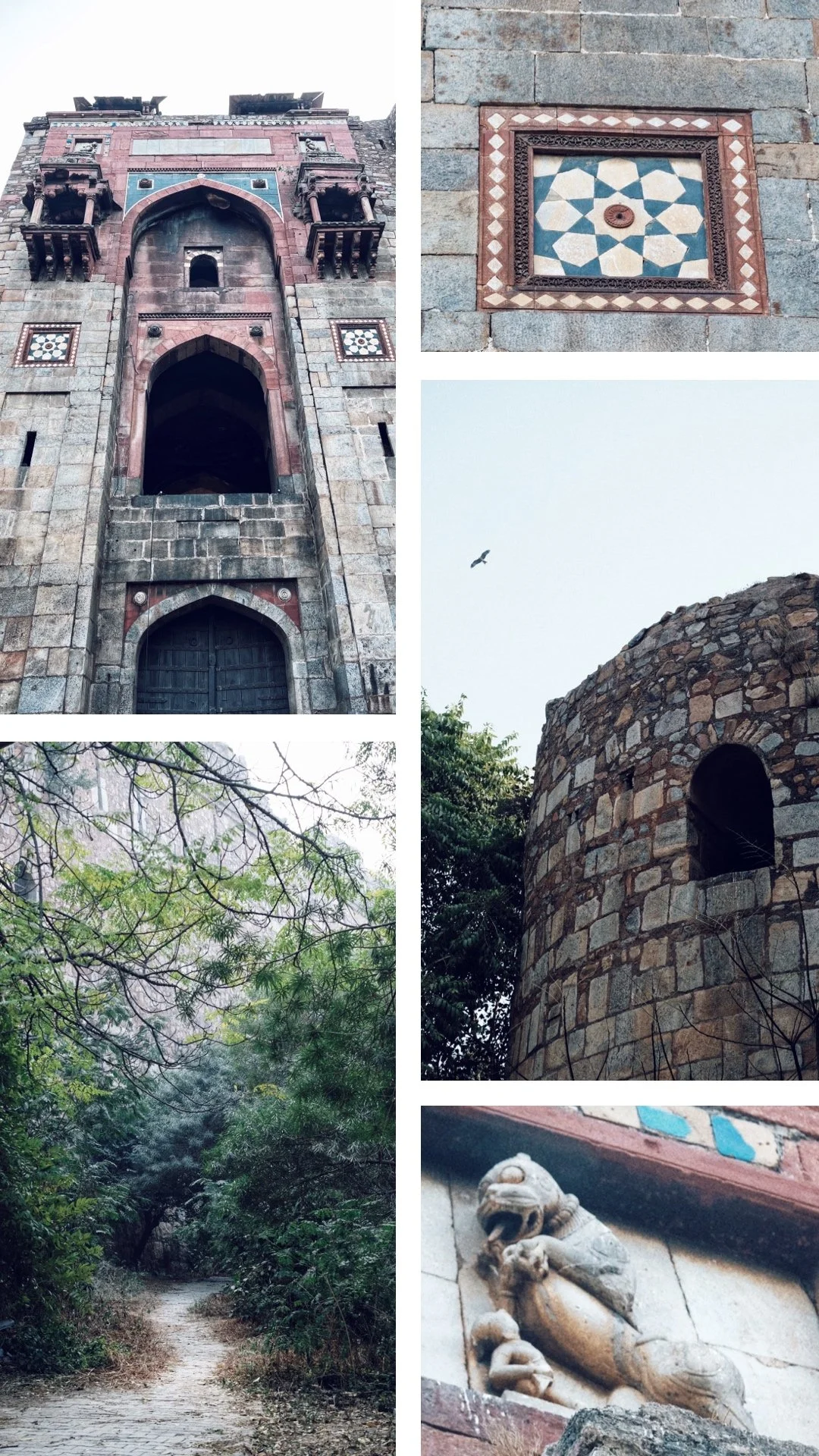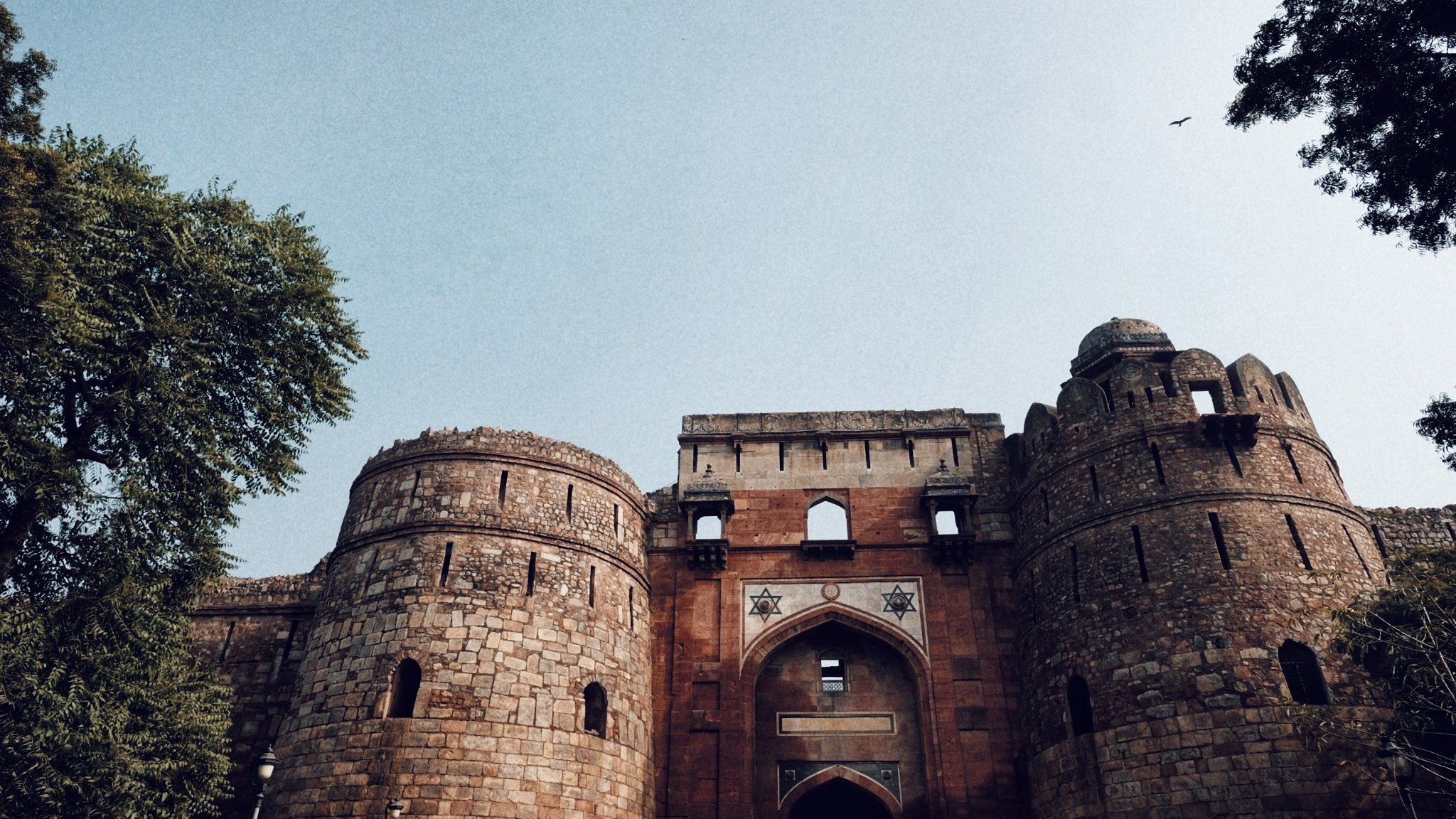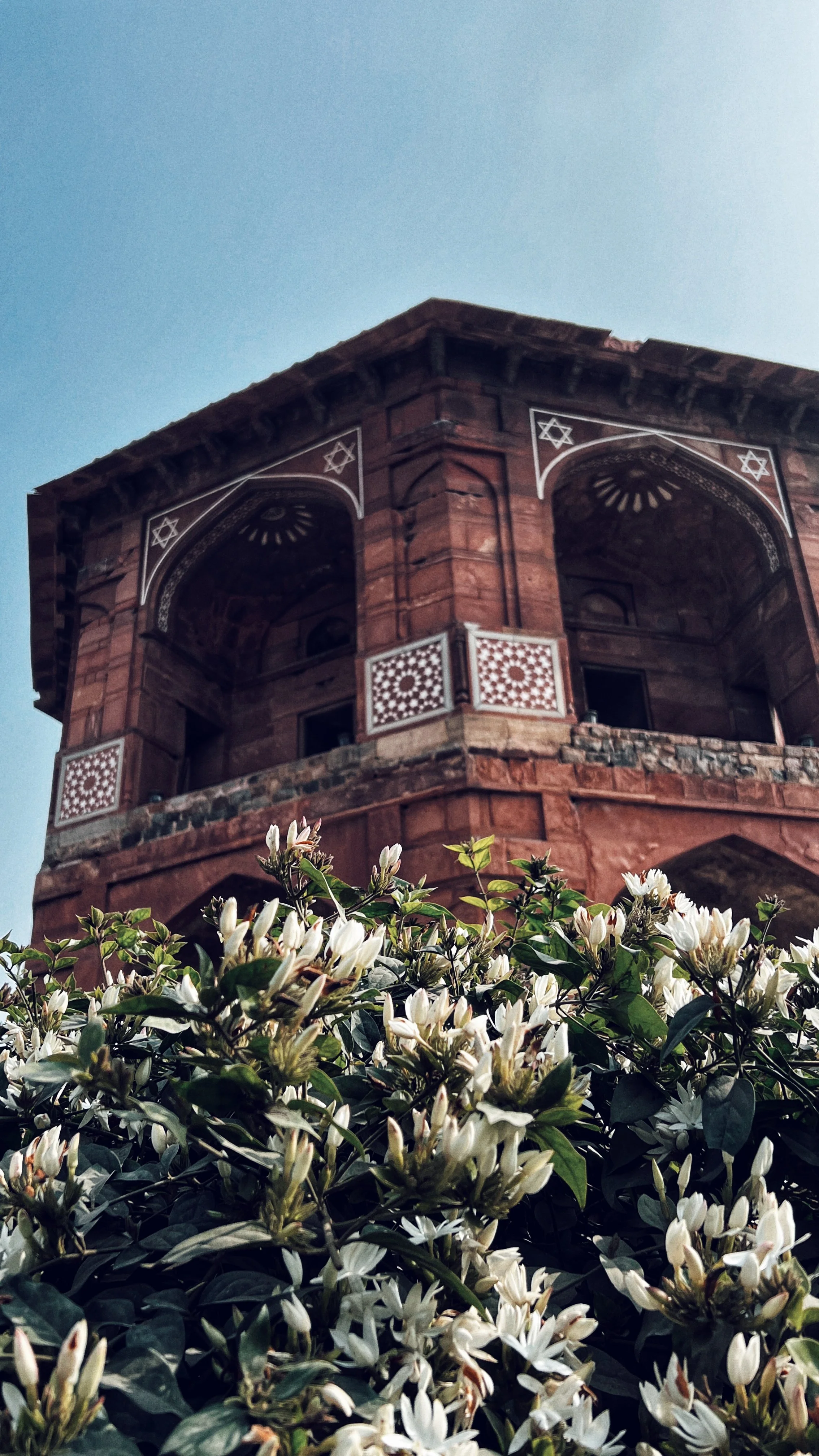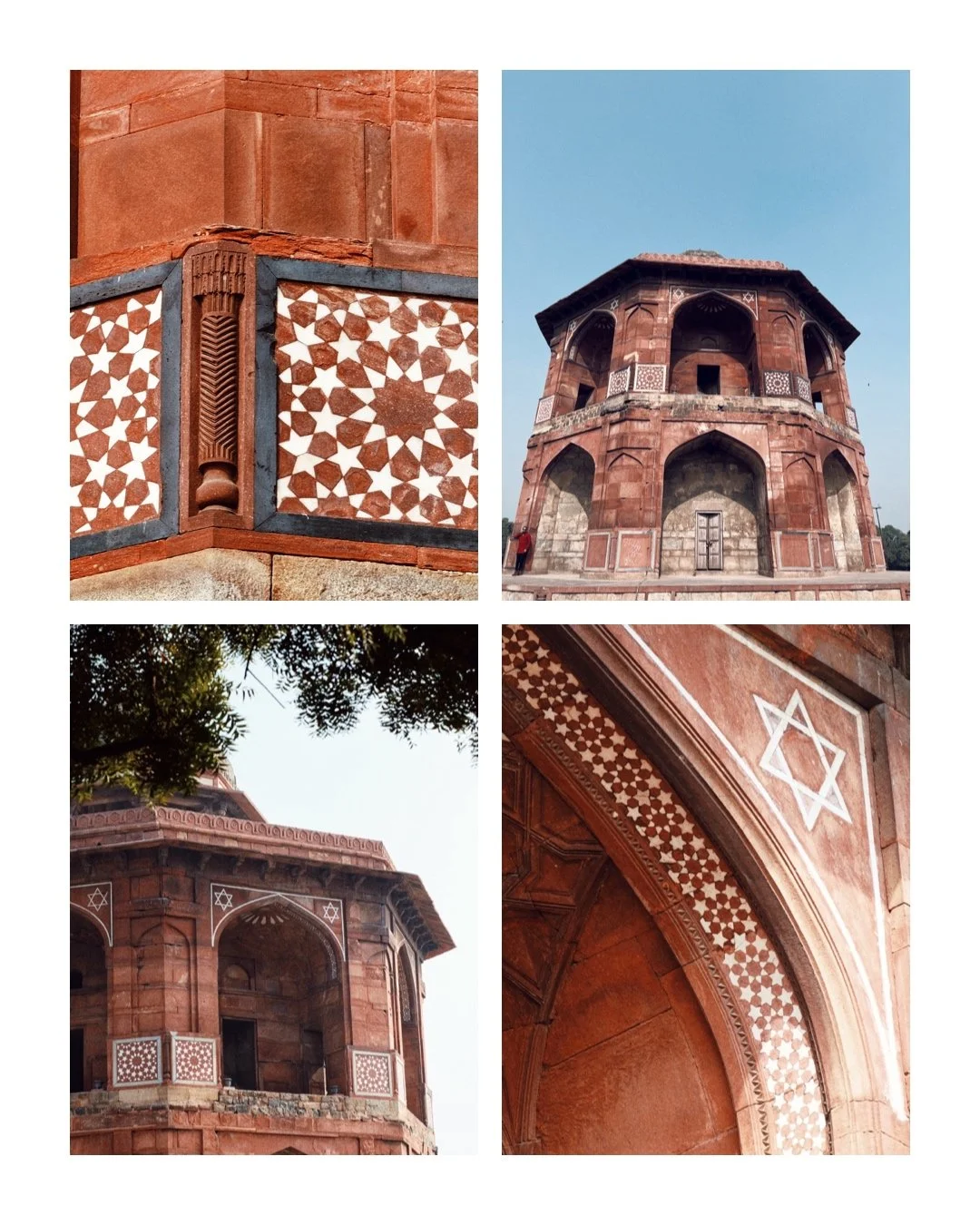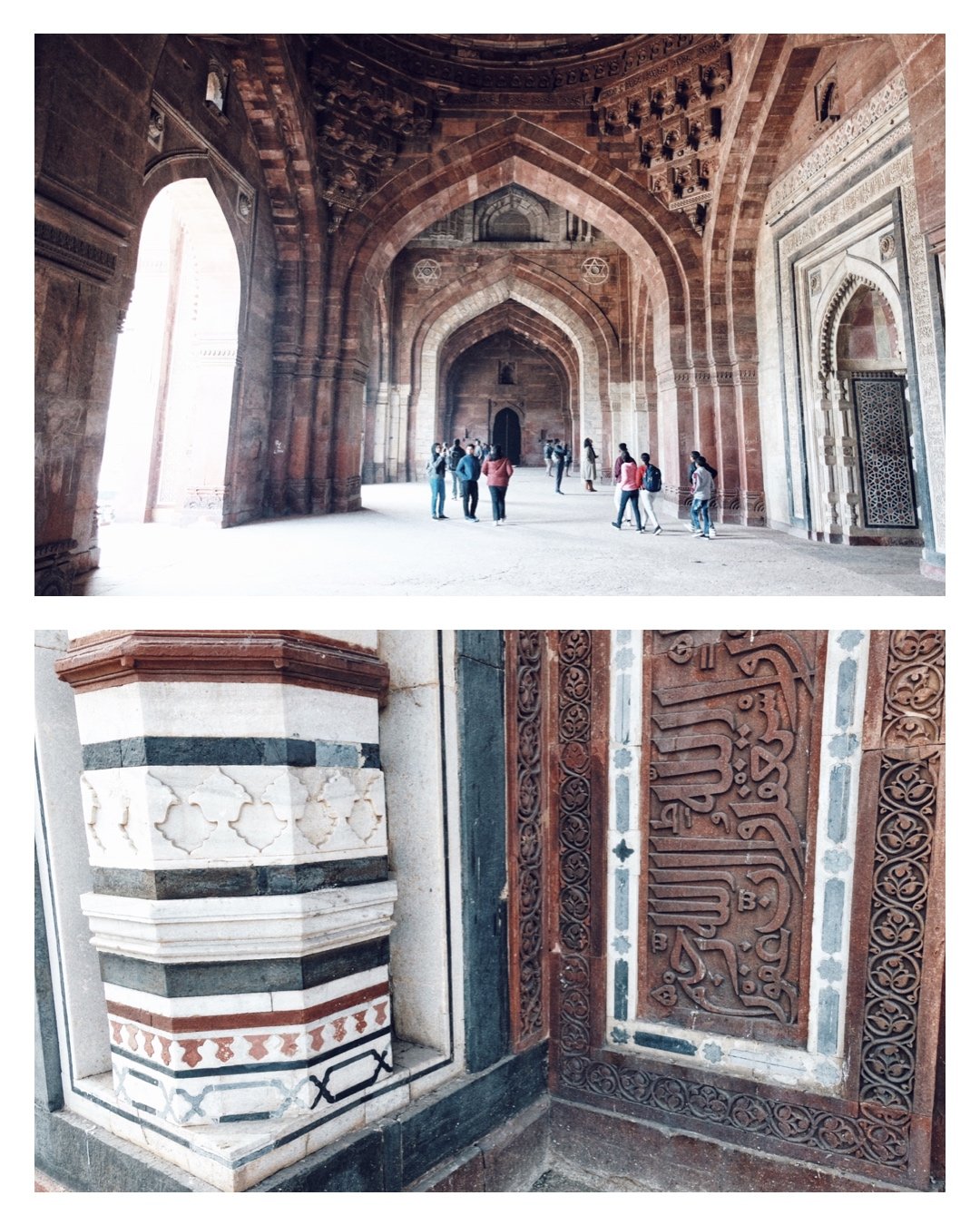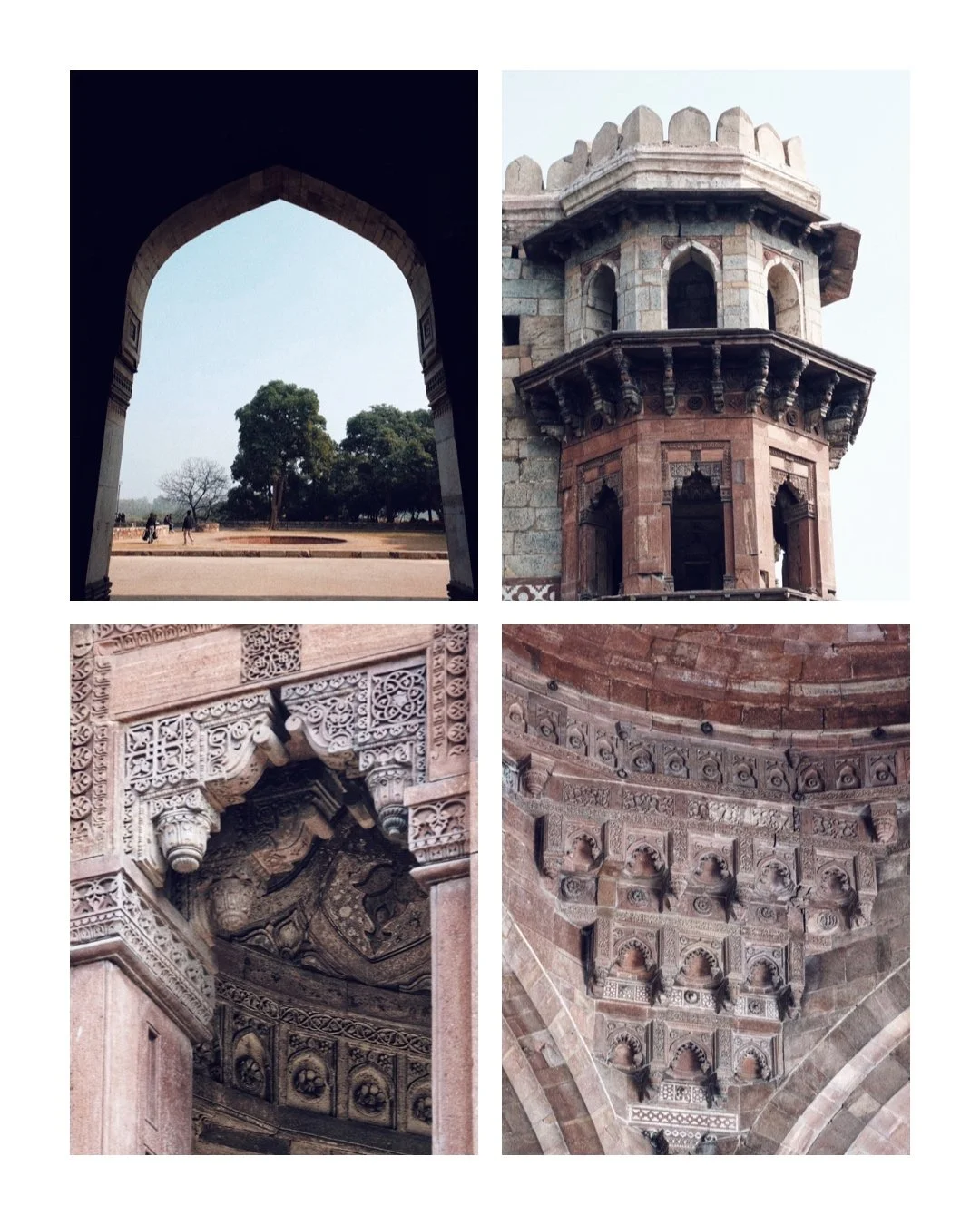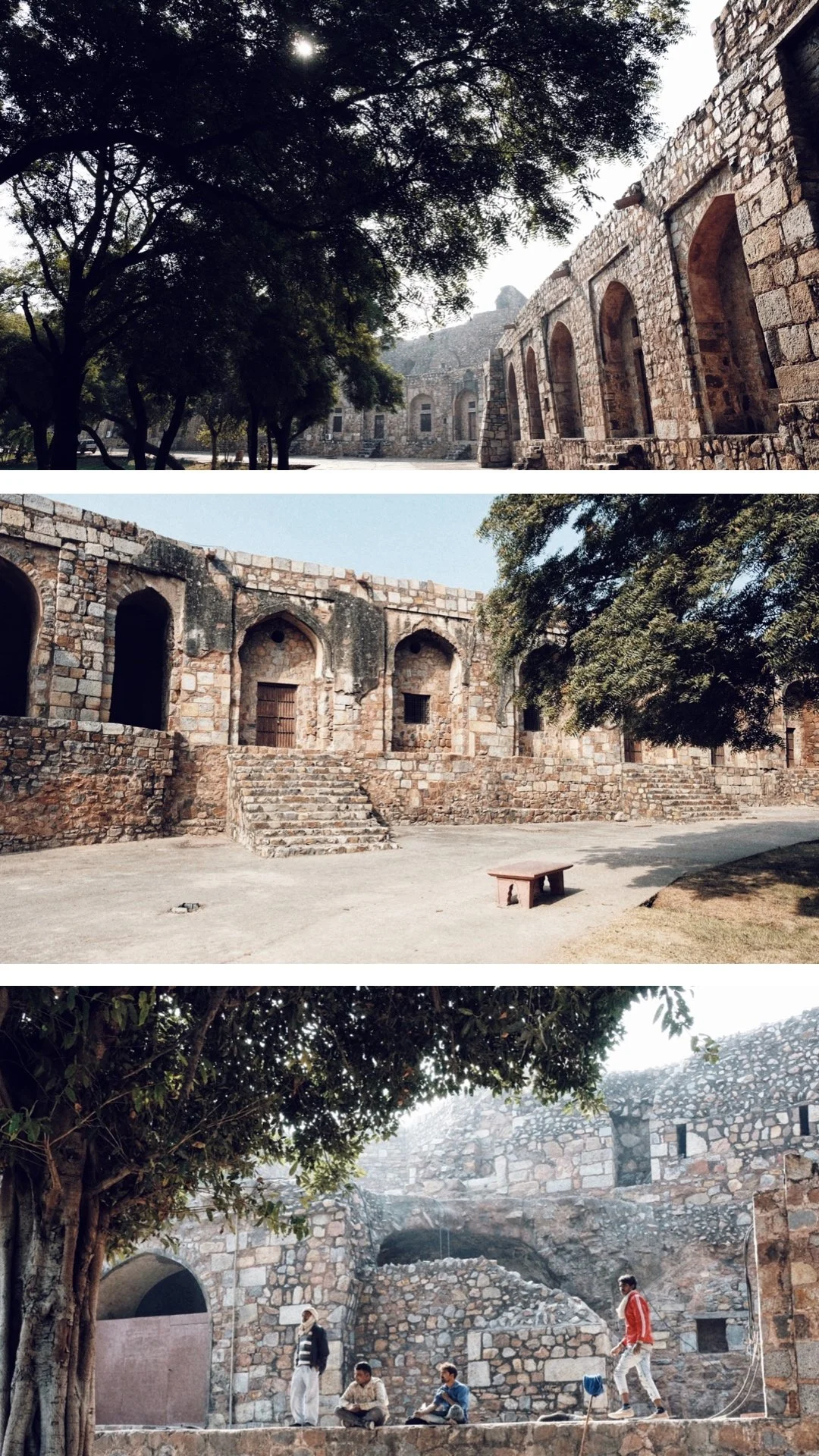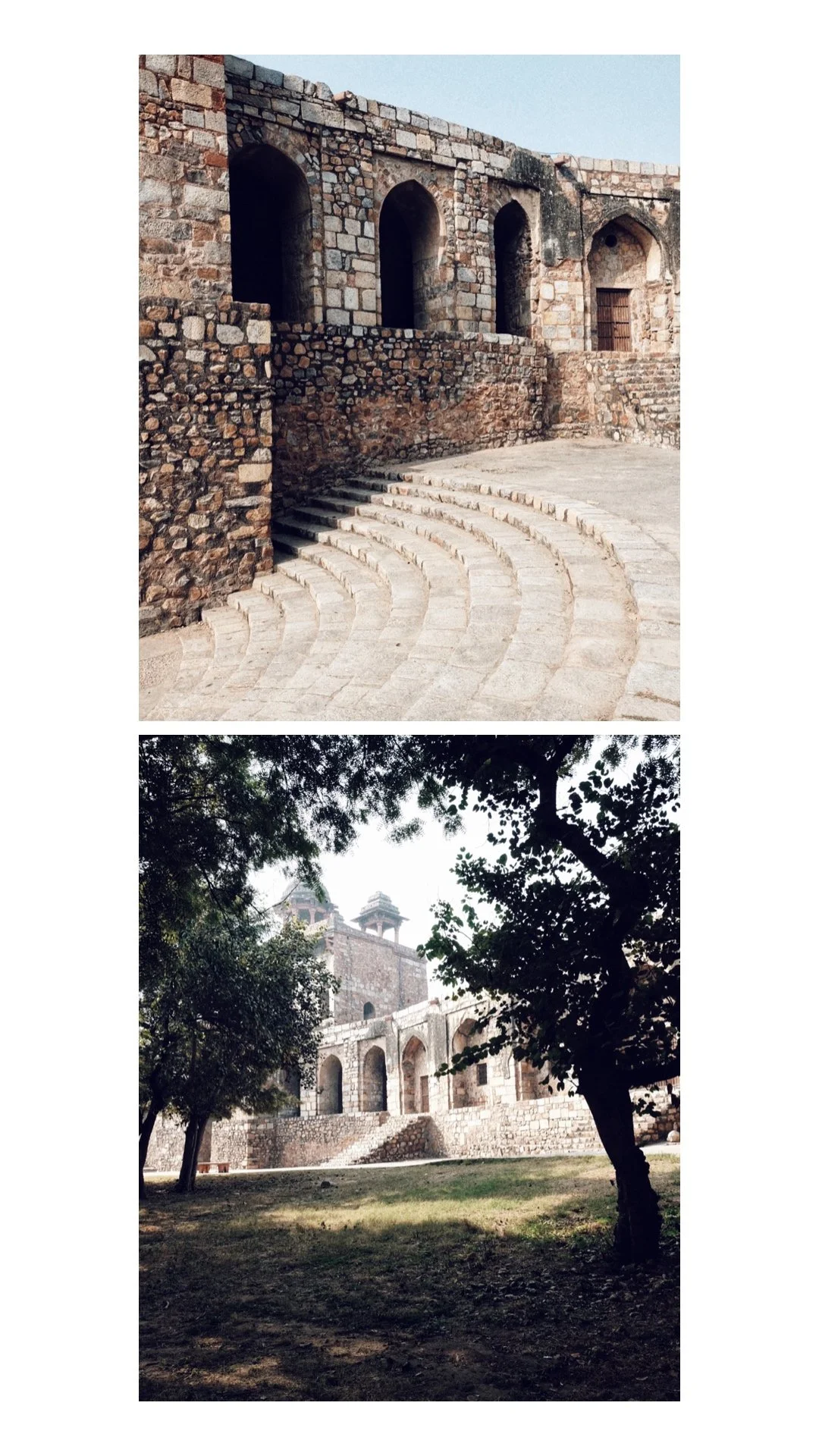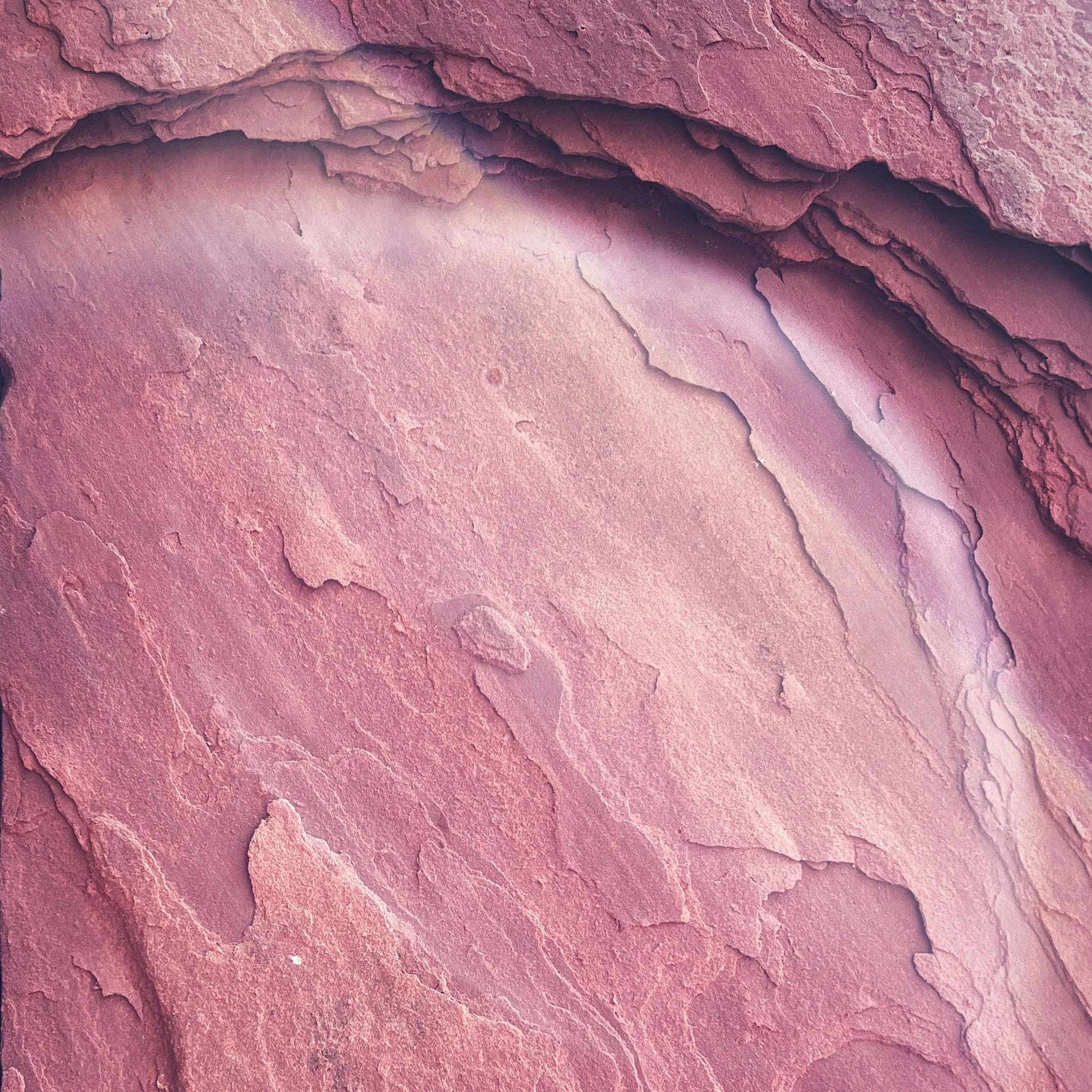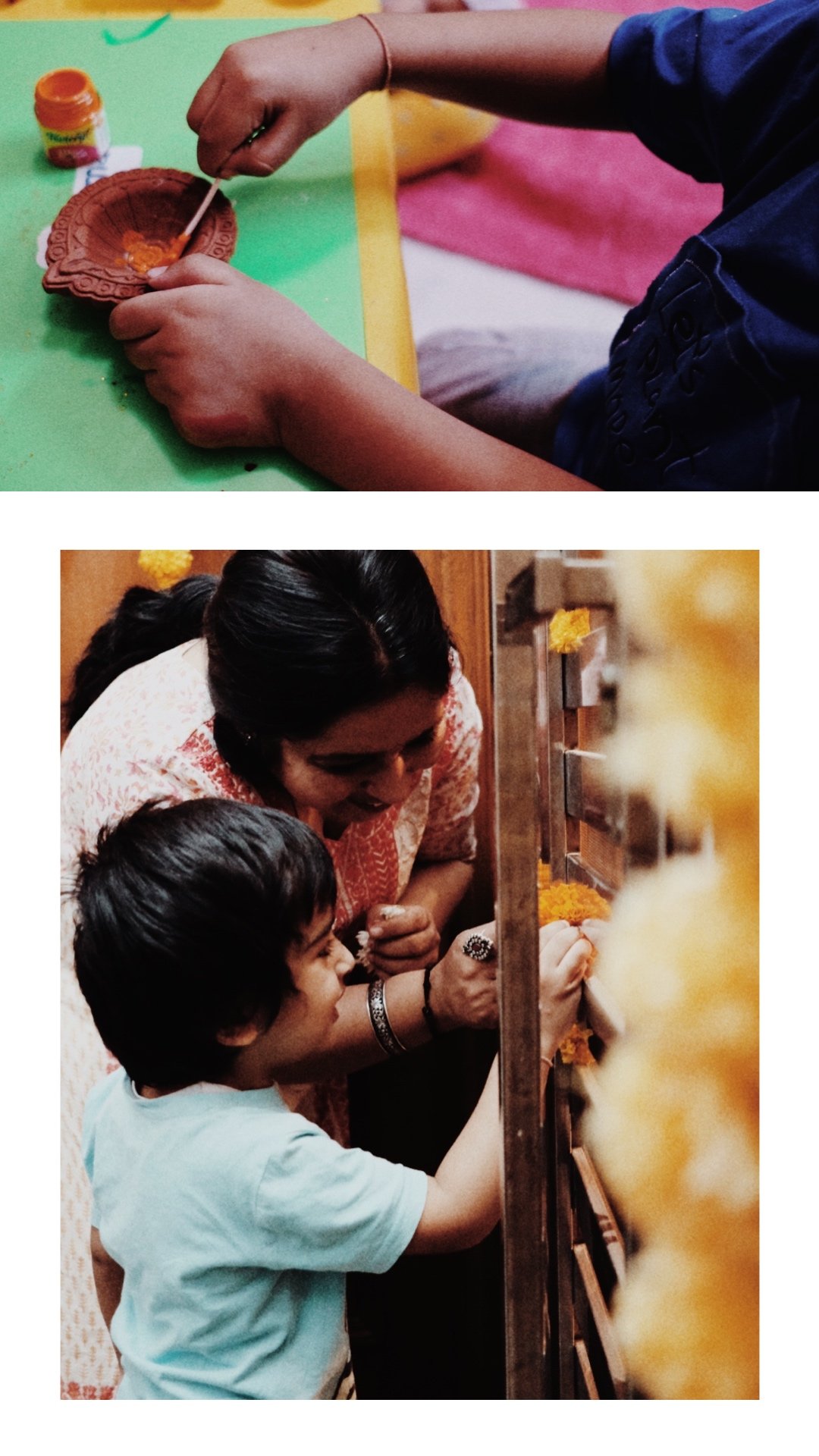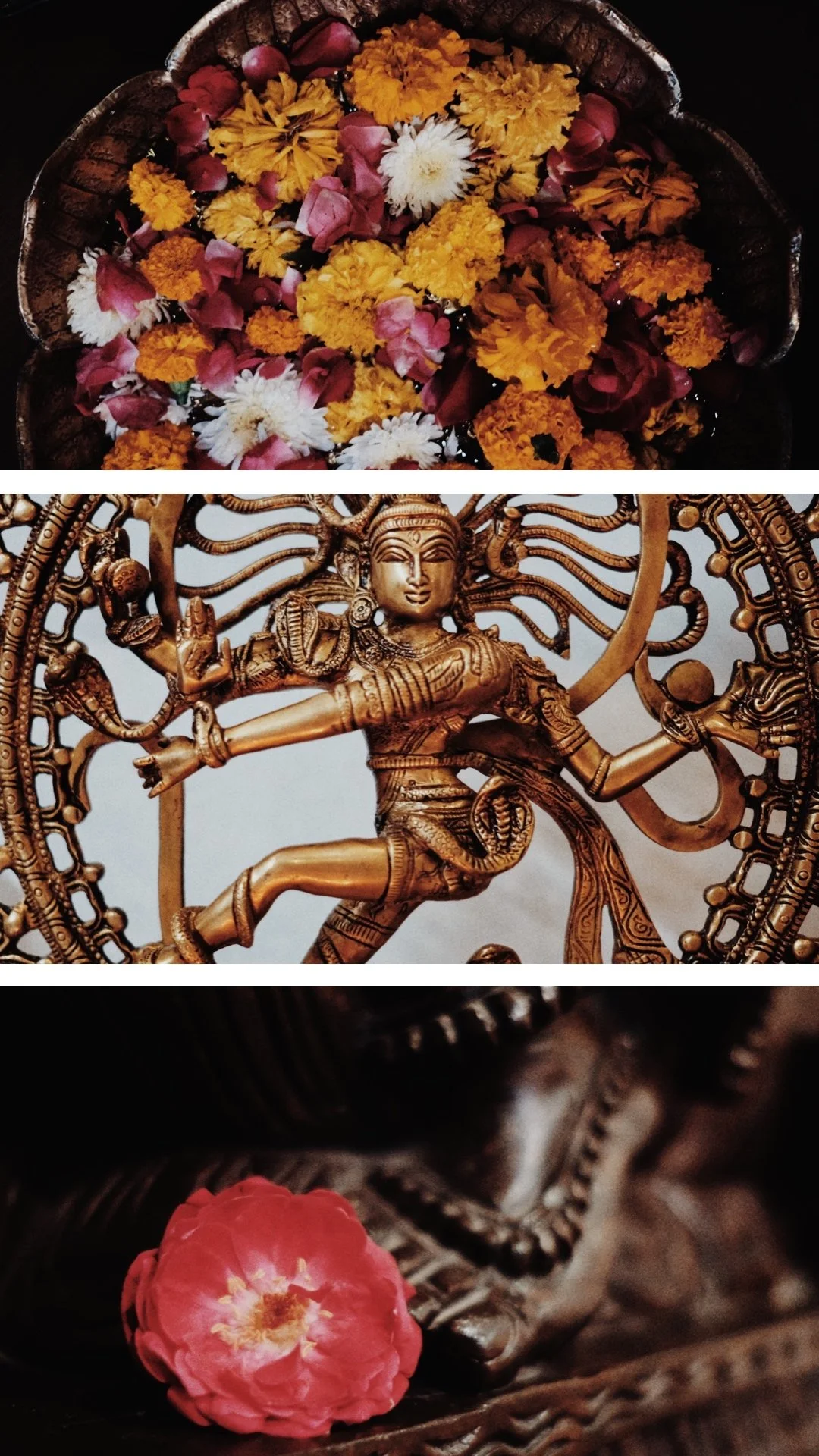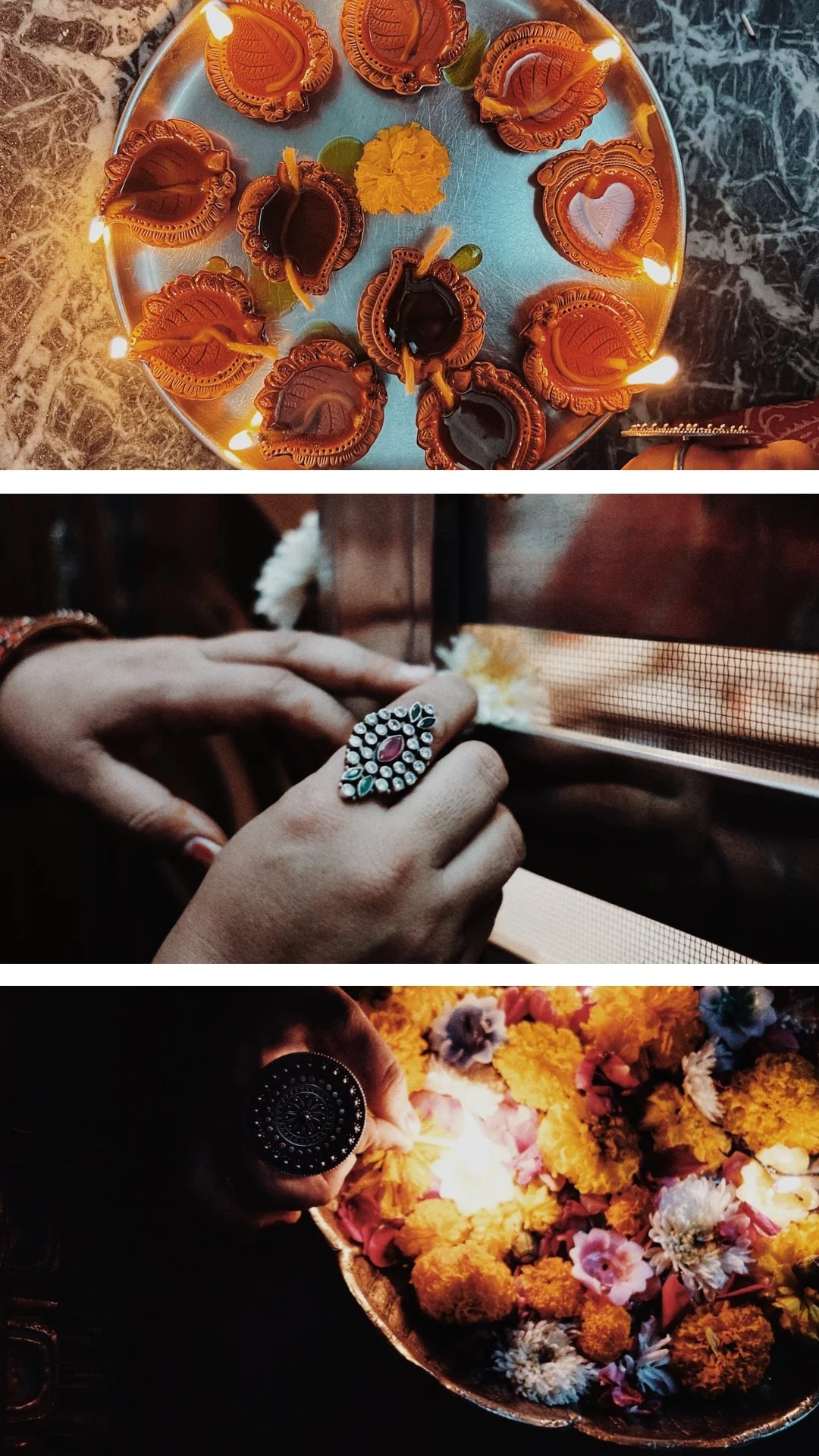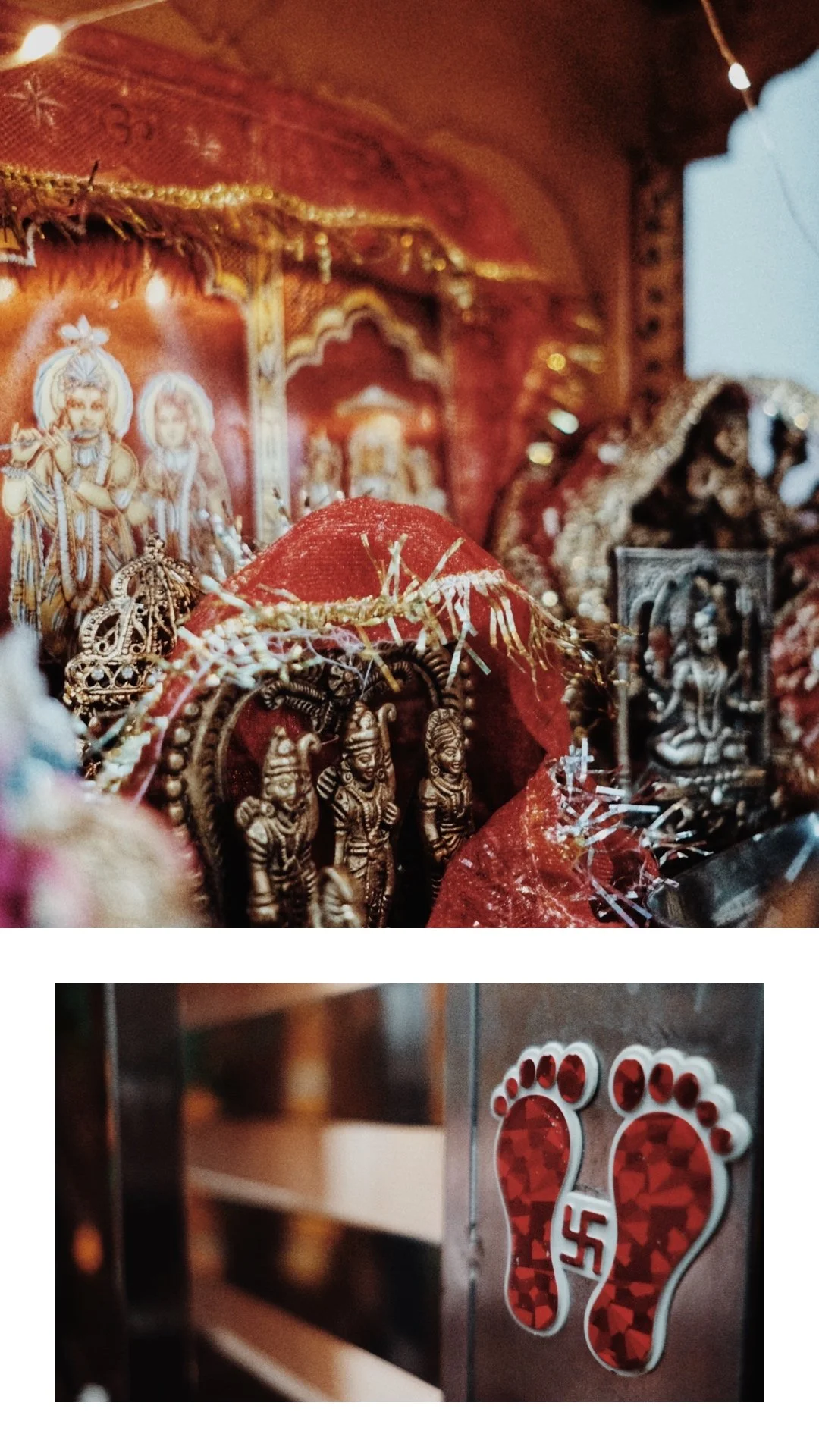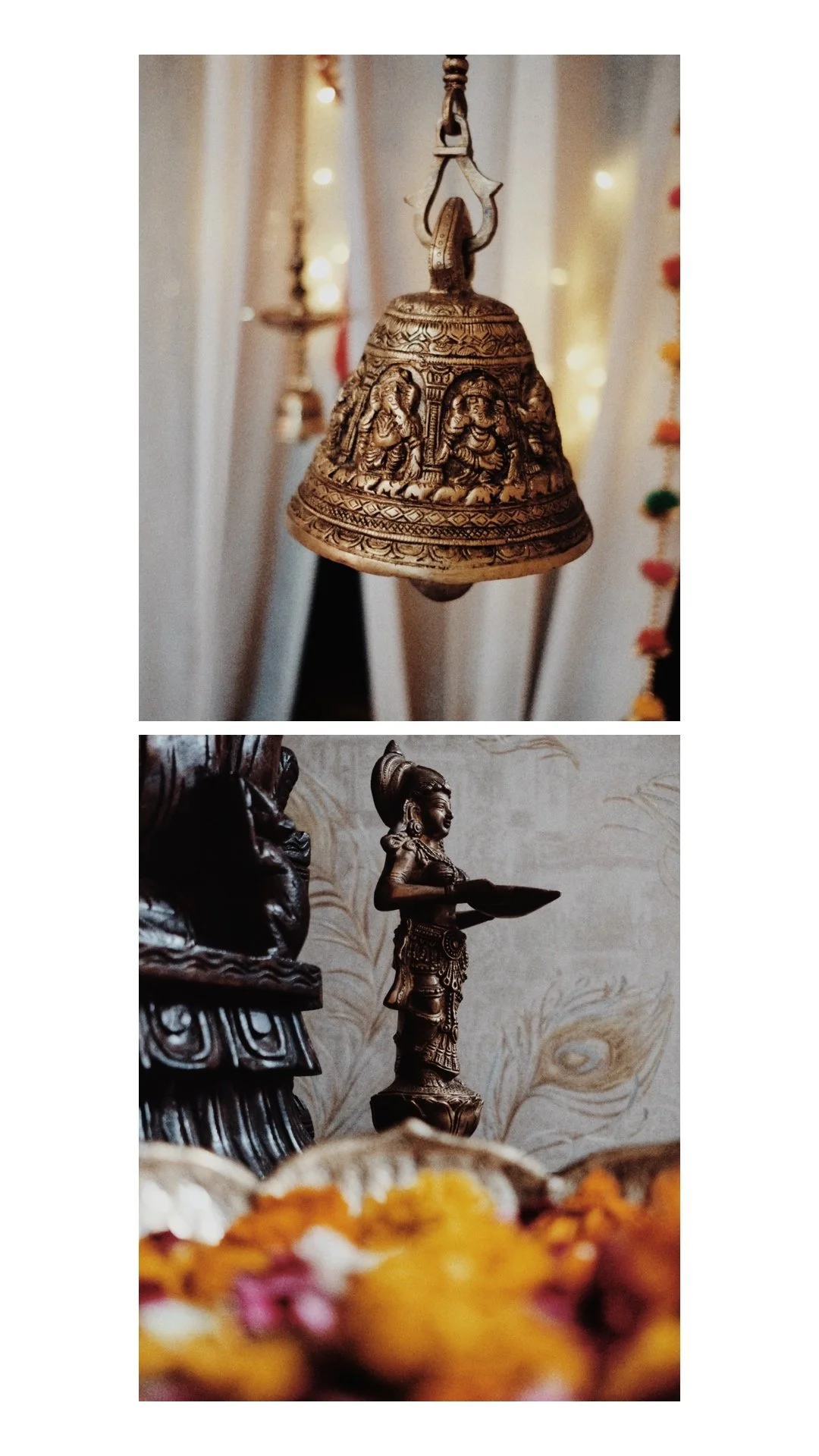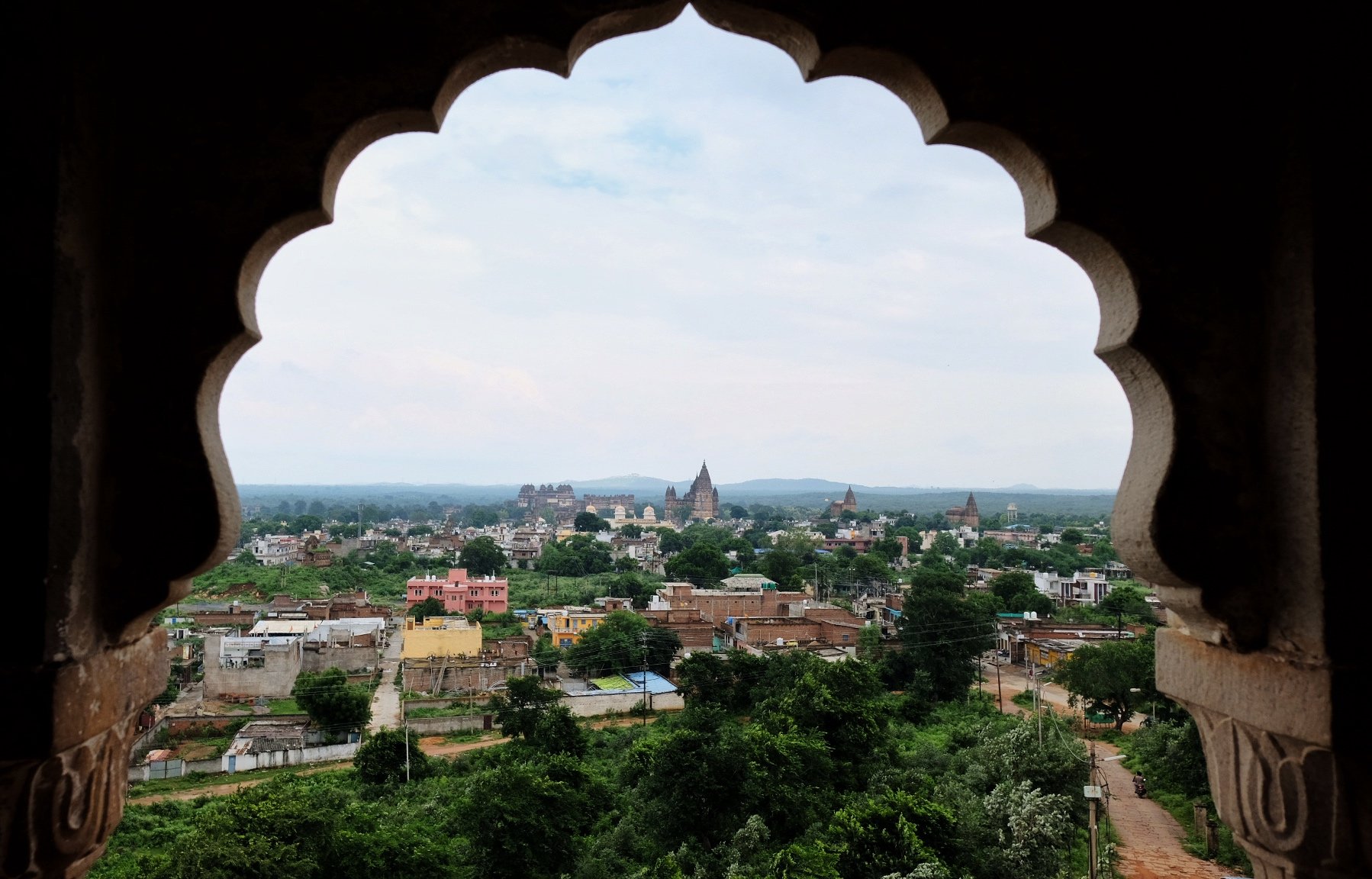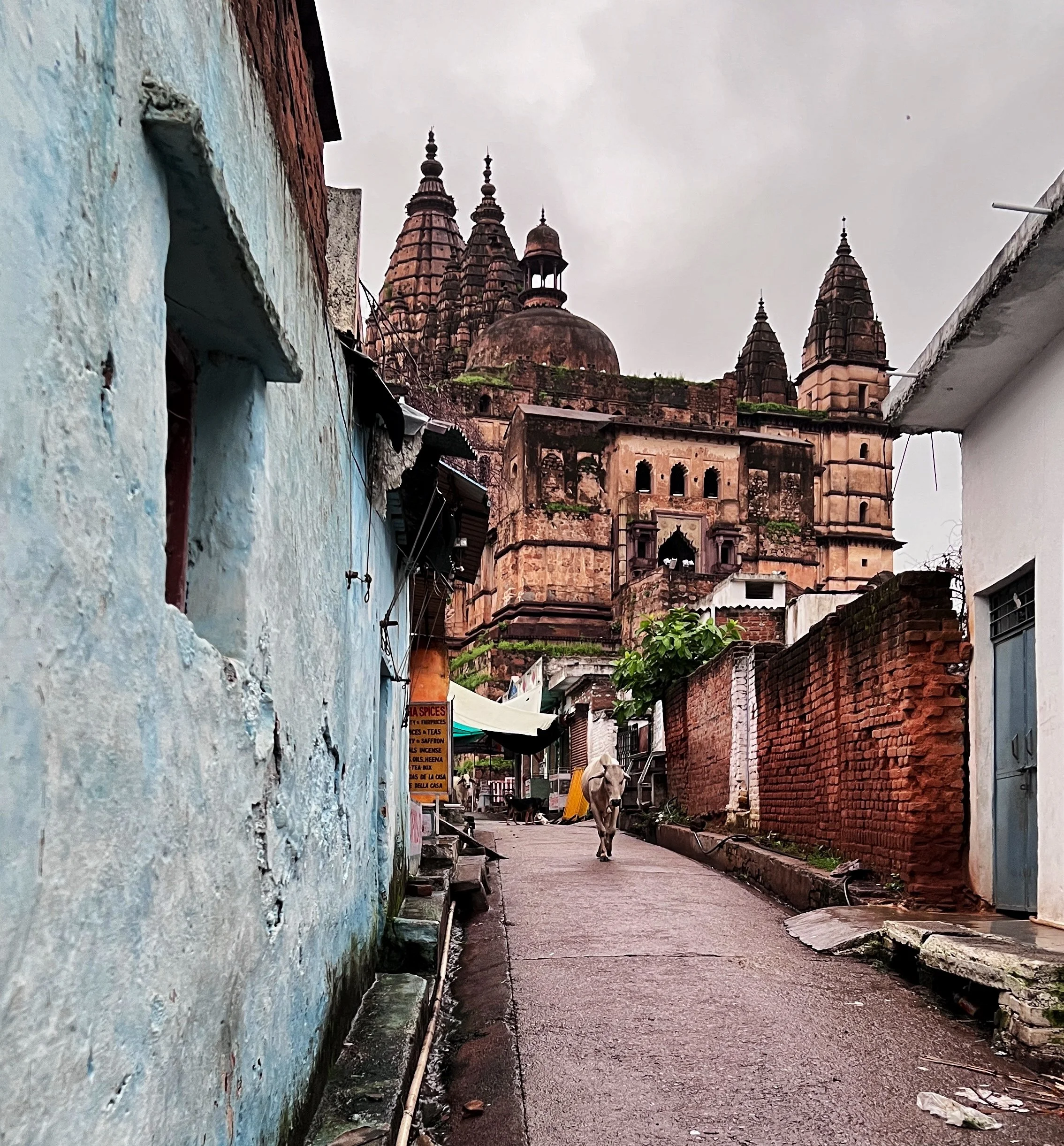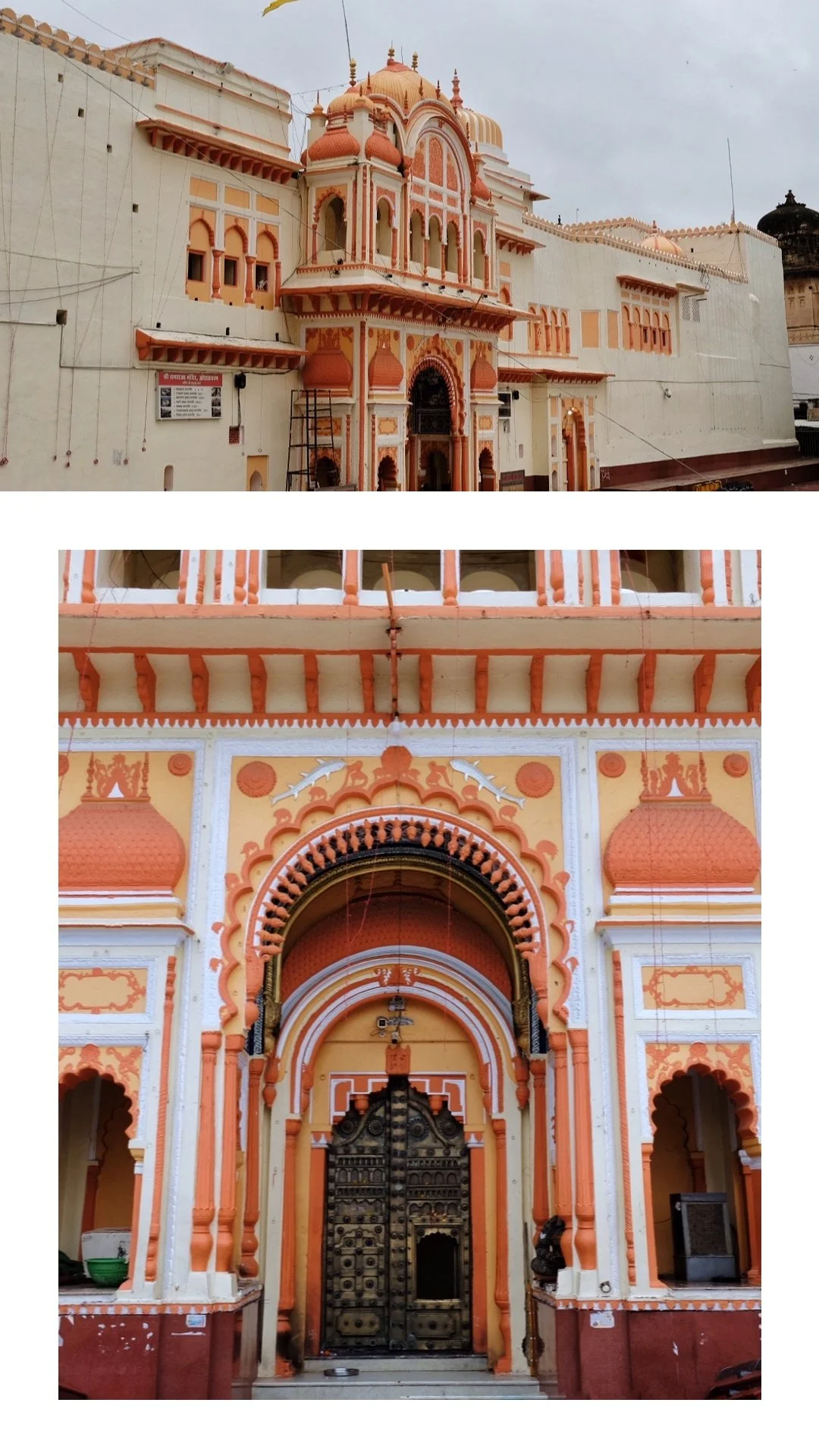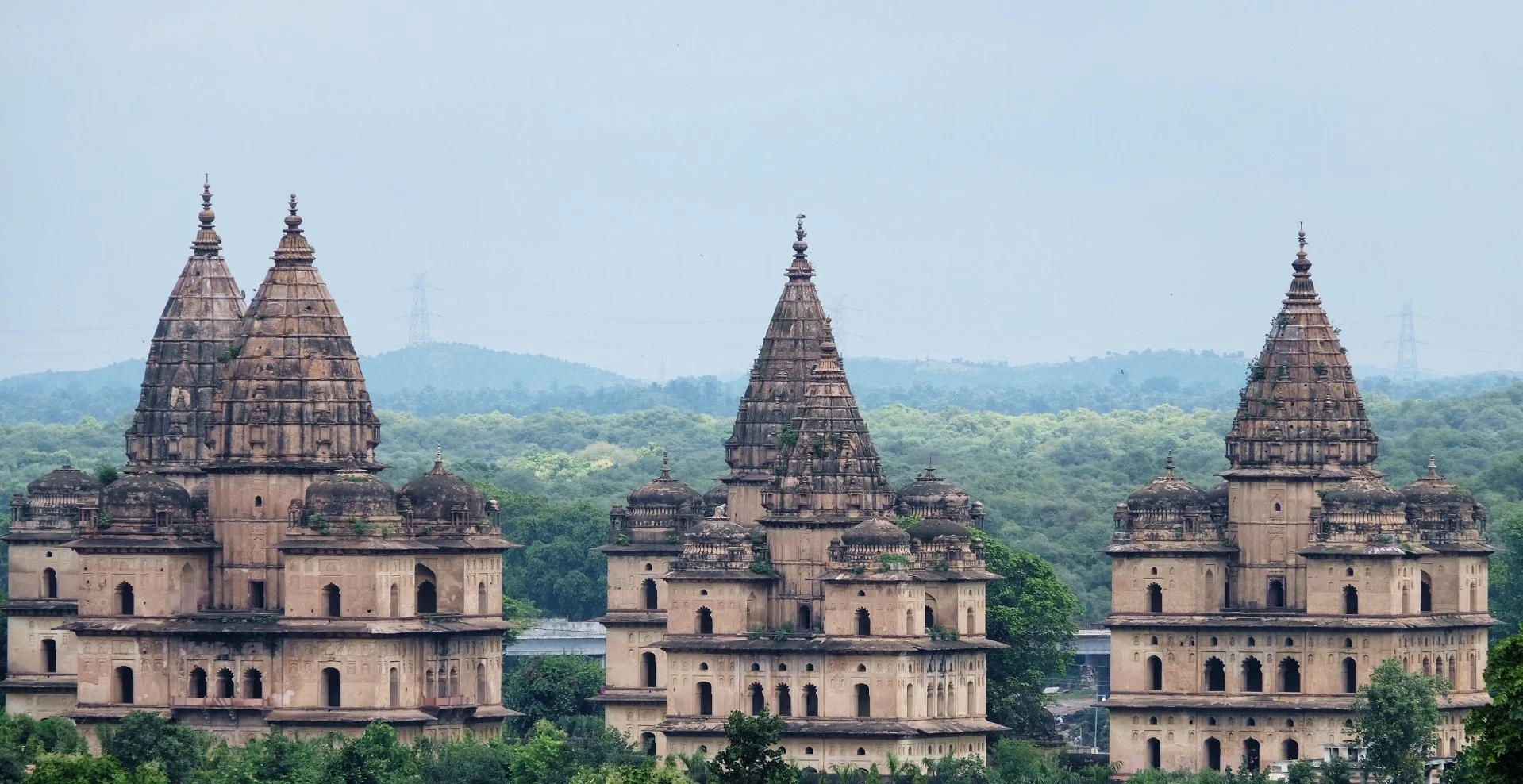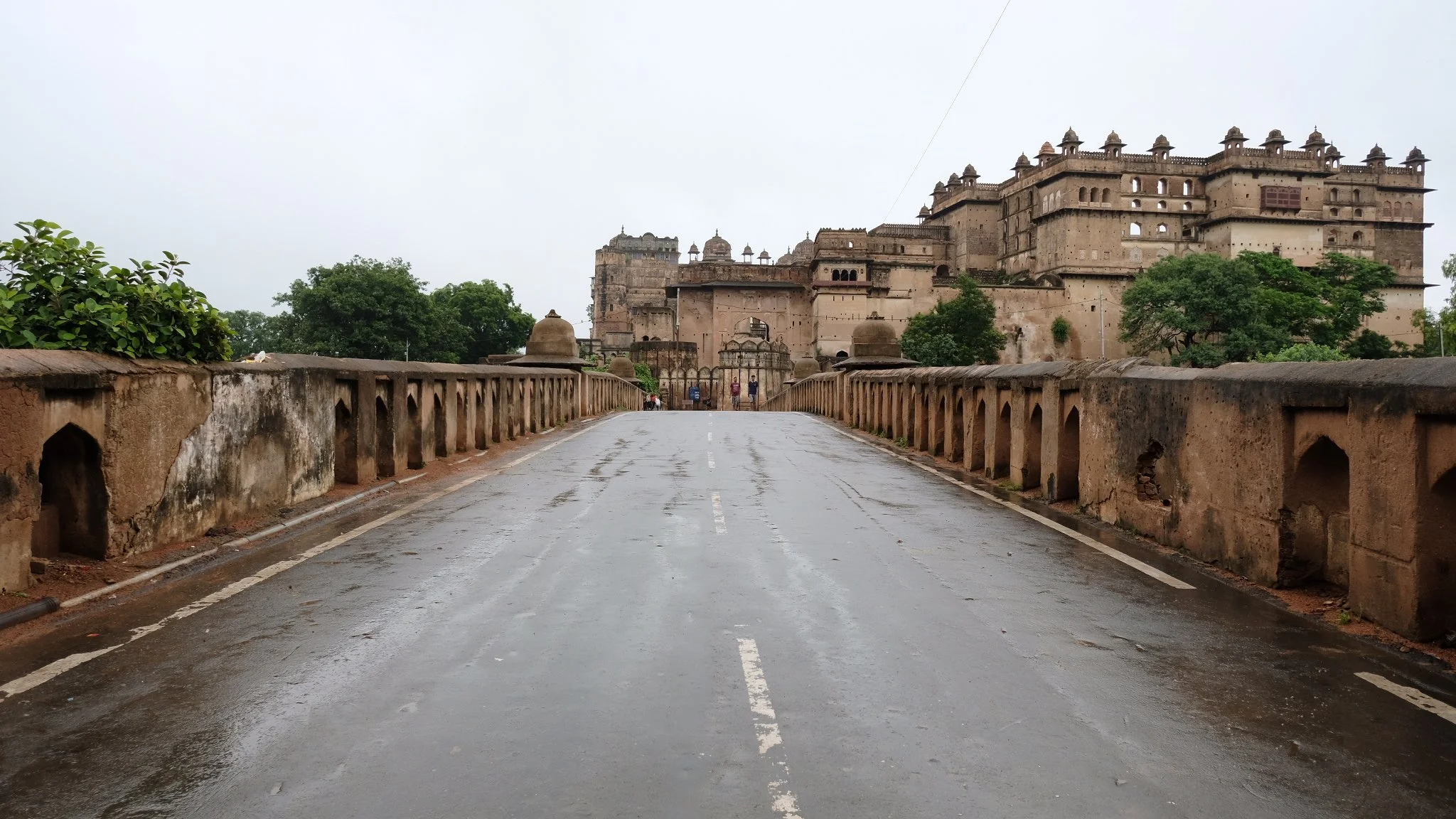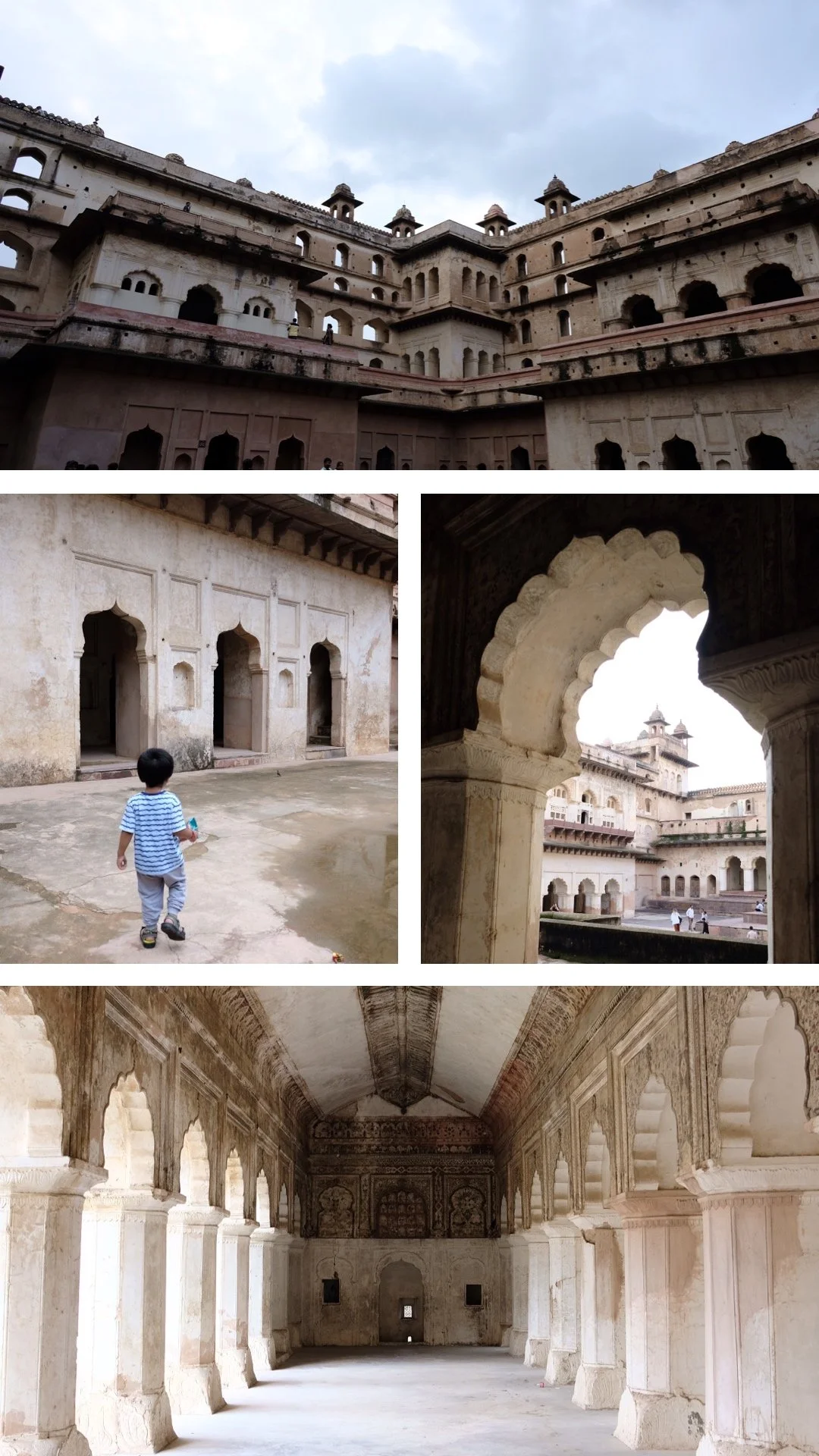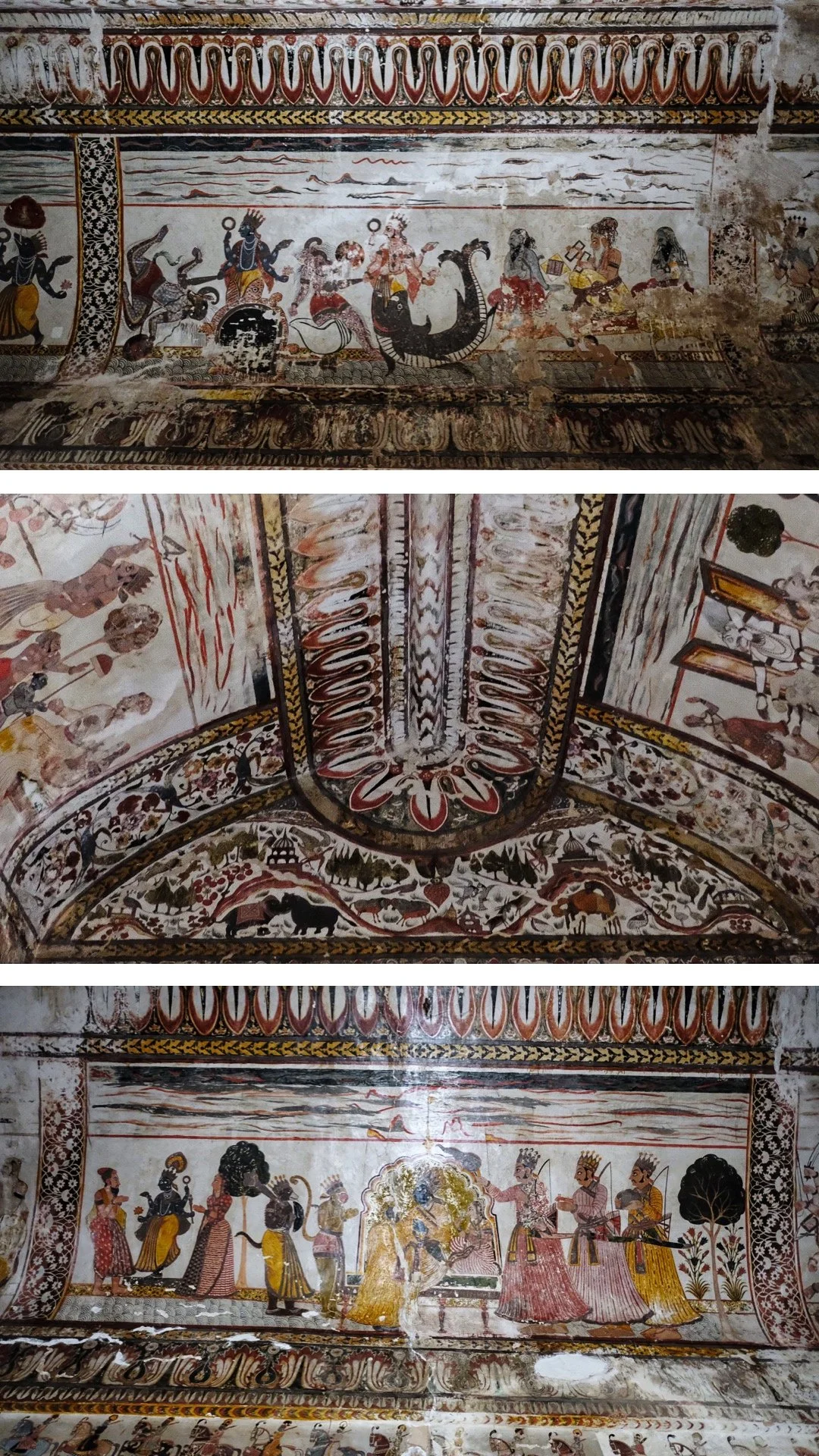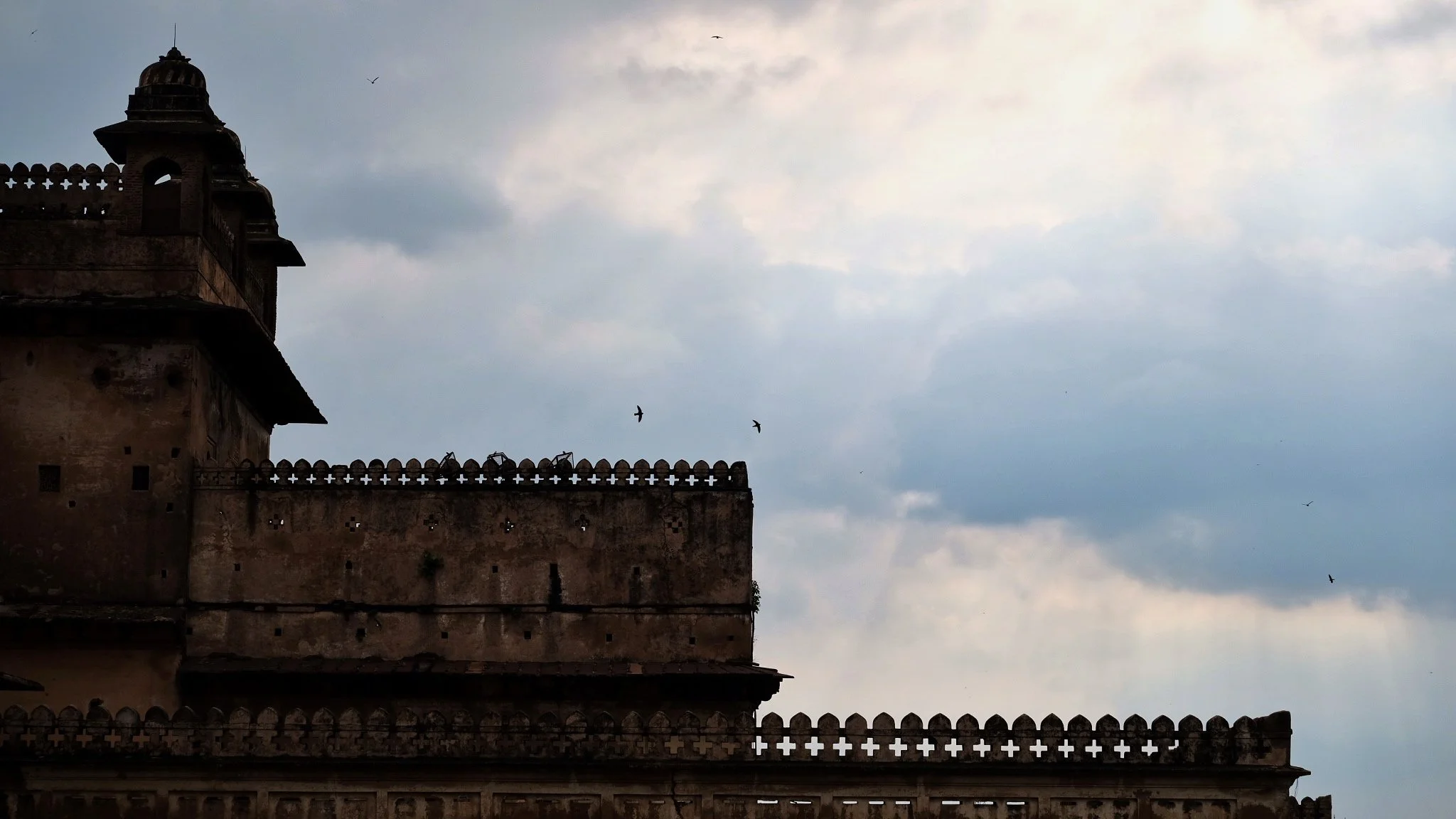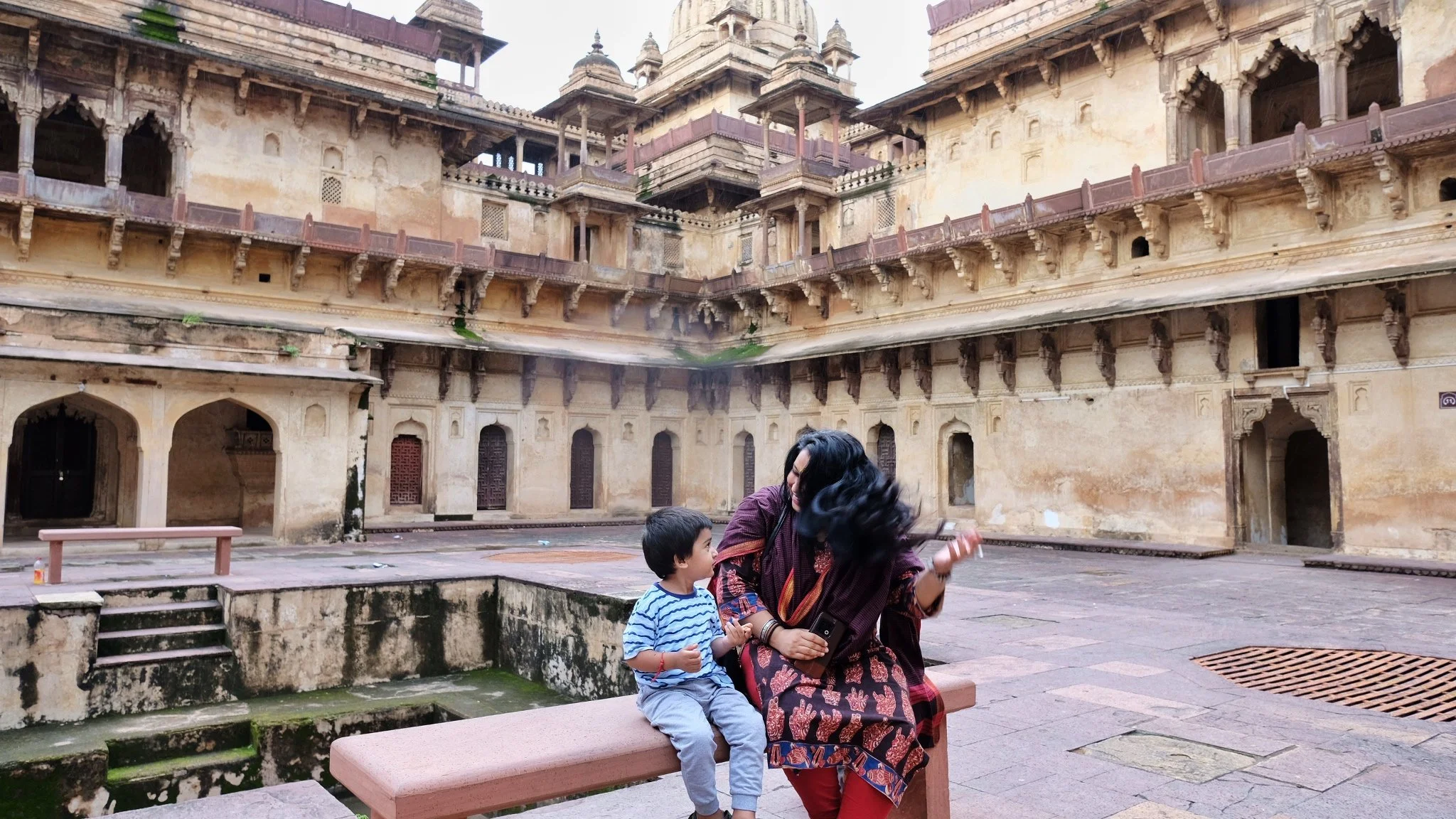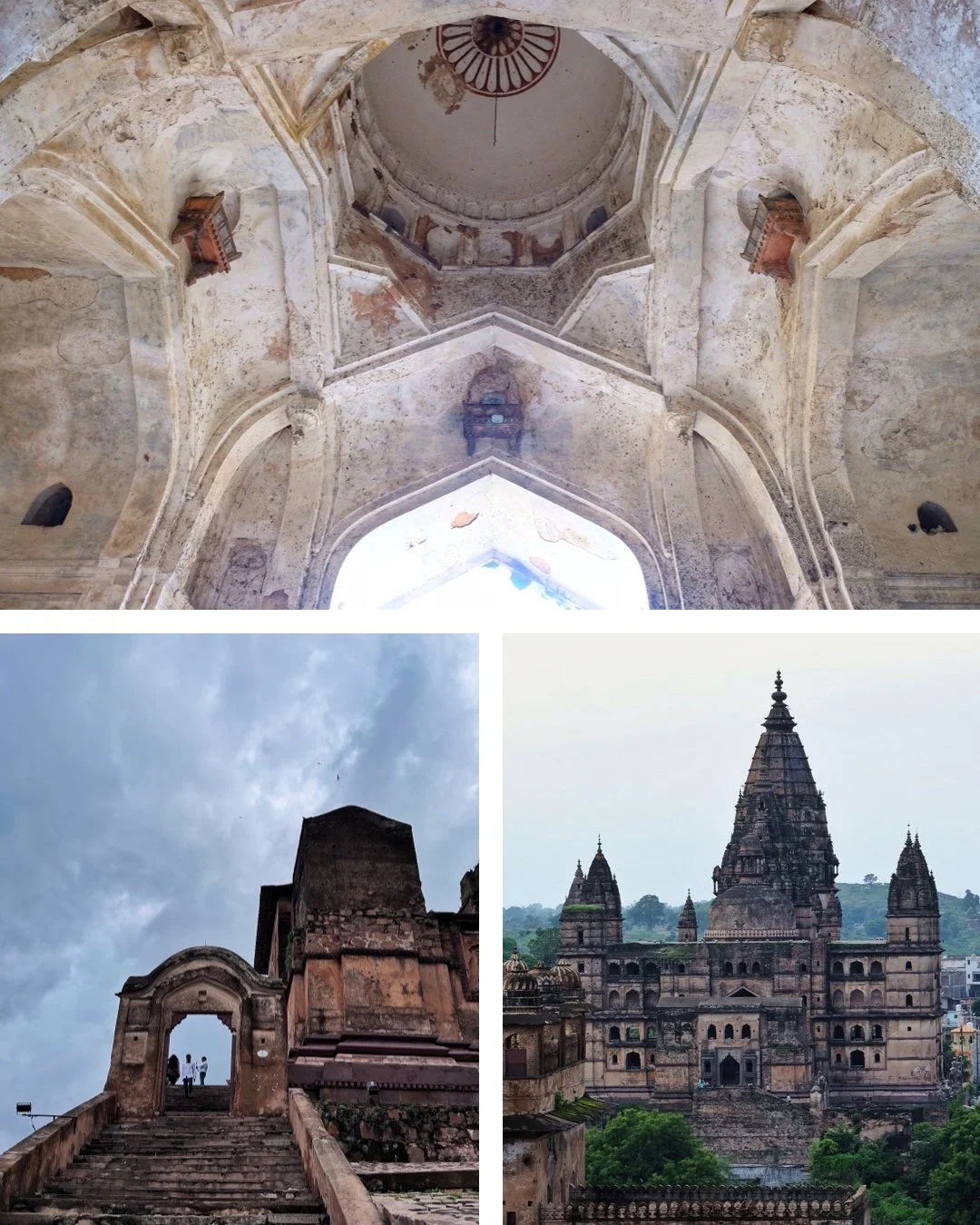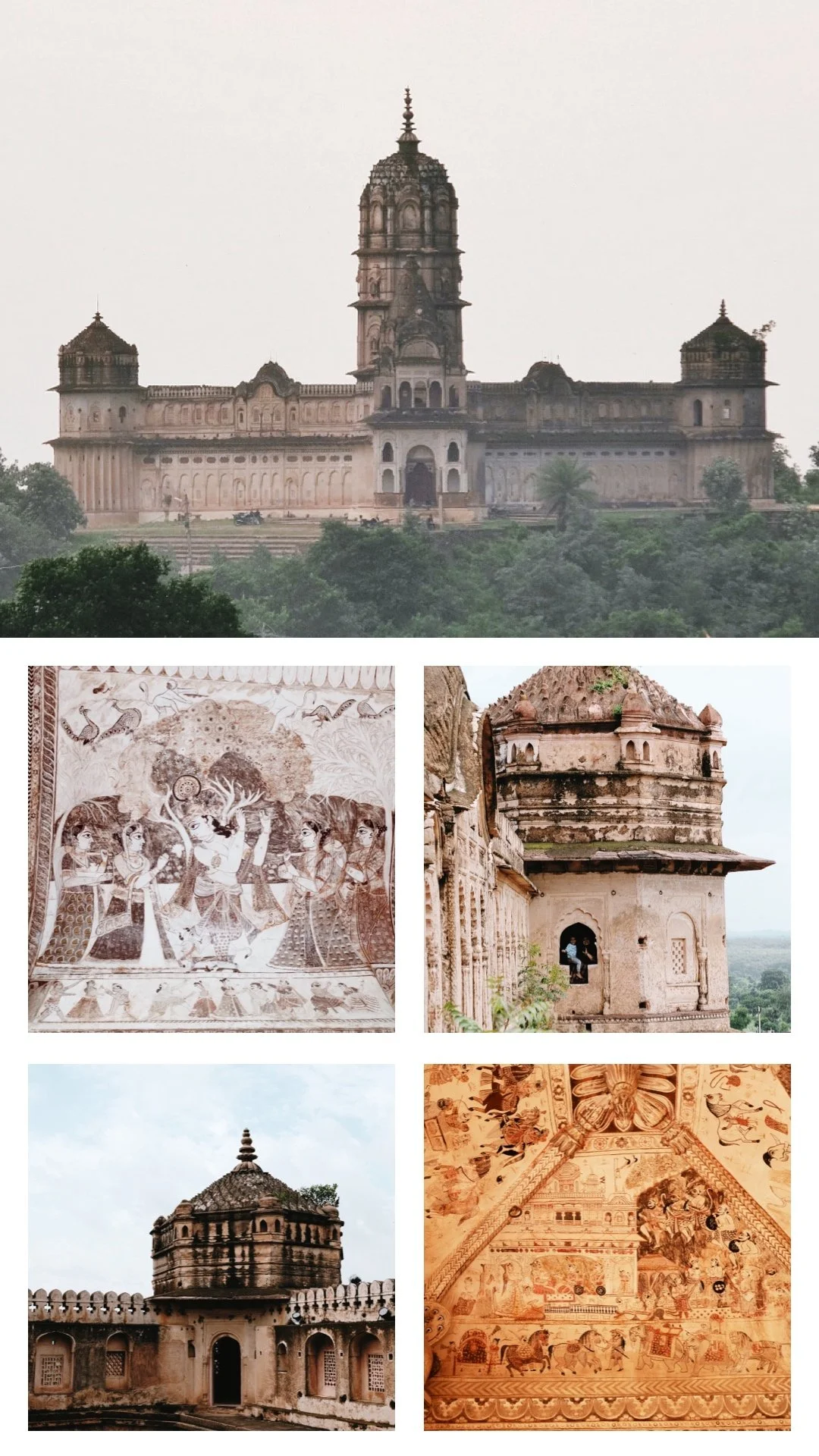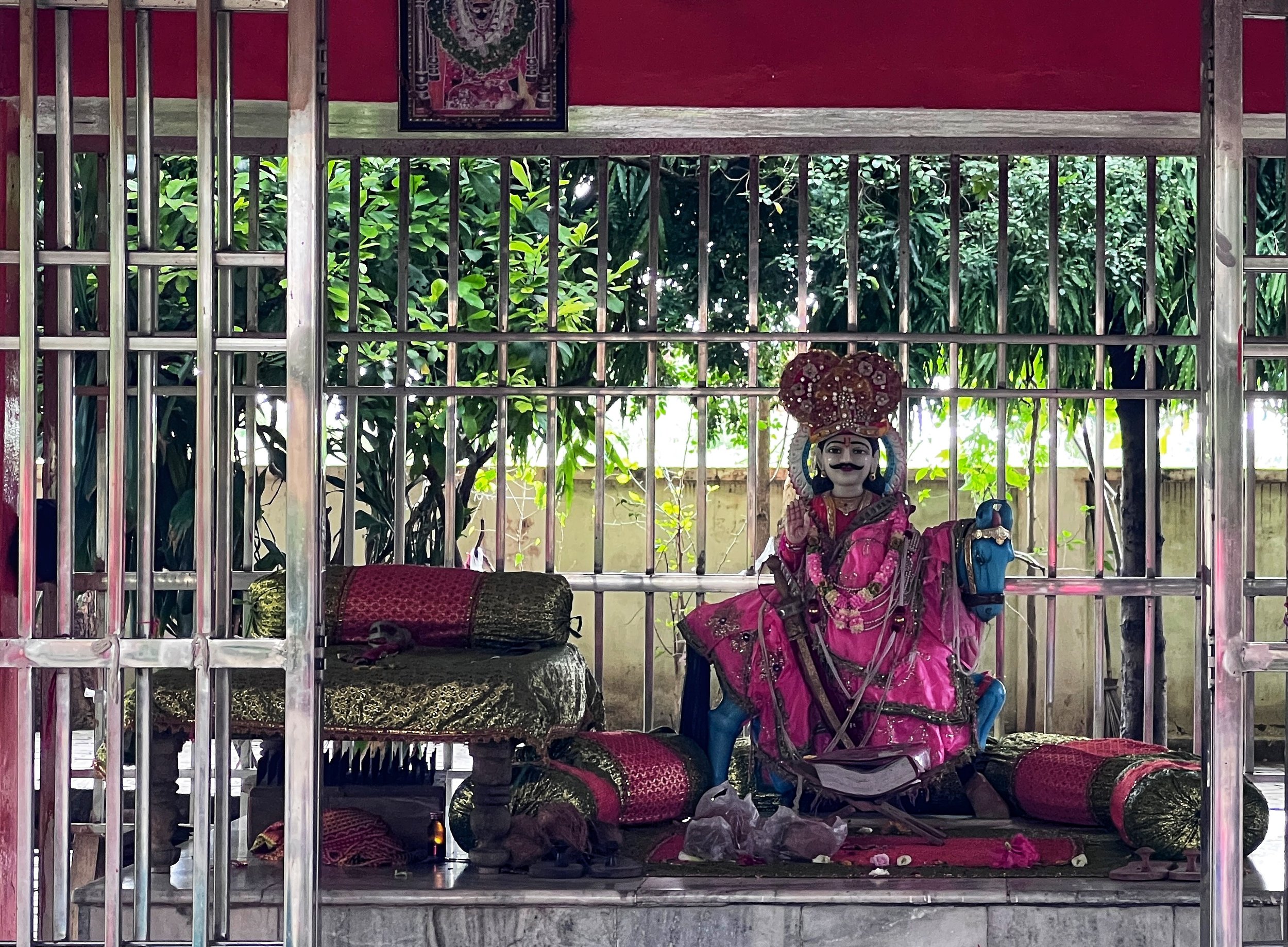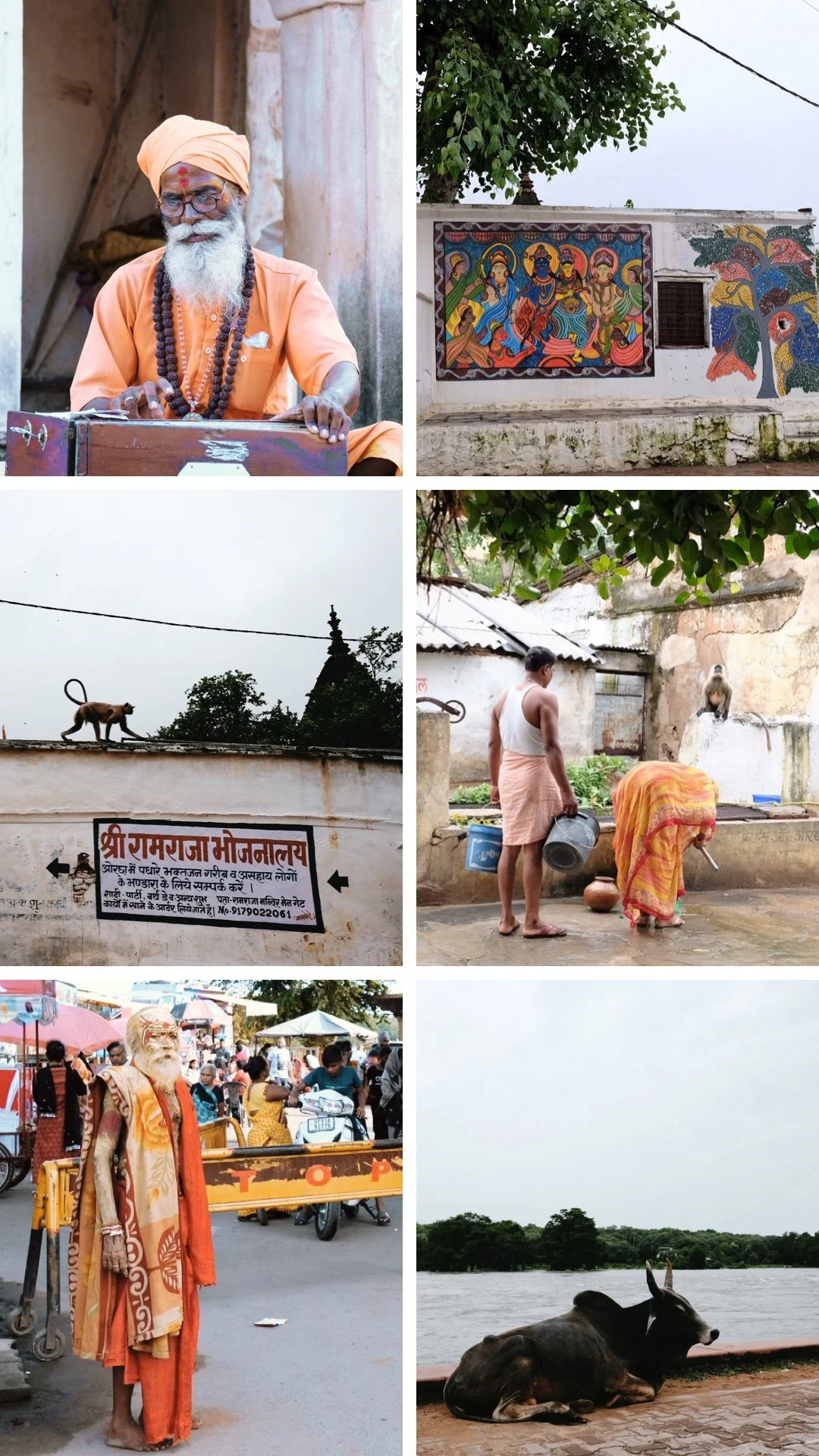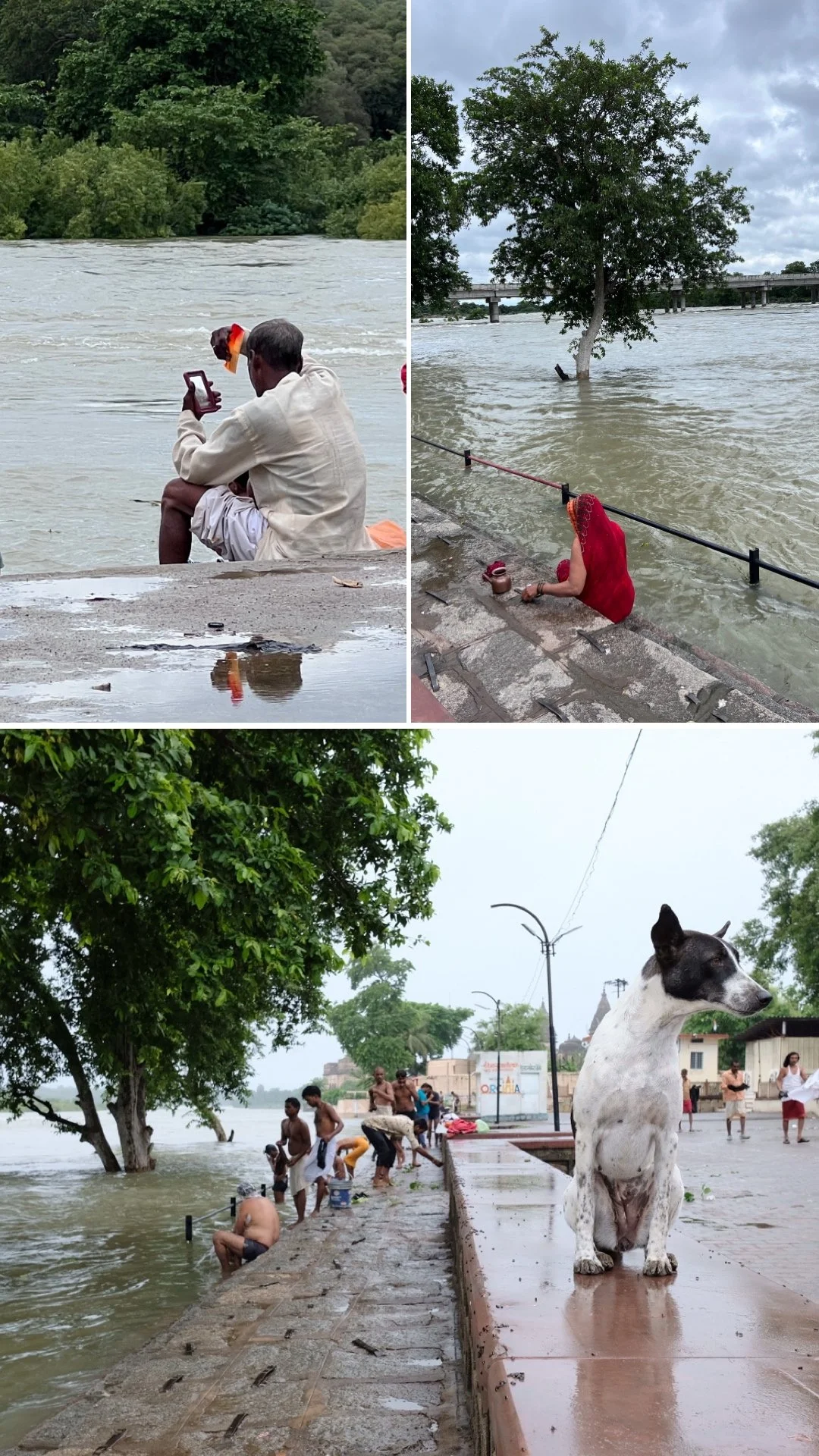Reverie
A window full of sunlight, a single flower, radiant in its life-affirming presence, and my better half who had woken up not that long ago. Not the most elaborate of setups for a portrait session!
I don’t know much about angles or techniques, I just followed the light. It danced on her face, weaving shadow and glow, and all I did was press the shutter.
Time and again I realize that photography (or any art for that matter) isn’t about perfection. It’s about noticing—the way sunlight transforms a room, the way a smile unfolds naturally, the way something so simple can feel so extraordinary.
Maybe that’s all we need: light, stillness, and a heart open to what unfolds. Because in moments like these, I’m not just taking a picture—I’m learning how to see.
Colors of Love
The room is brightly lit, light from the tube lights spilling over the colors and coloring sheet on the coffee table that is now a makeshift art hub. Outside, winter presses its icy fingers against the windowpane, but inside, warmth radiates from the quiet joy of togetherness. A mother and her toddler sit on their respective chairs, one big, the other small, their faces mirroring each other’s delight.
The toddler grips a coloring pen, his tiny fingers smudged with a rainbow of colors. “Mama, look!” he exclaims, pointing to the yellow sun God he has colored. The mother smiles, her heart swelling with a love too vast to name. She is busy coloring other bits of the sheet, a deity’s feet, an auspicious motif—letting her colors dance alongside his. The father gets busy, trying to capture these moments for eternity.
Laughter spills into the room, mingling with the fragrance of fresh flowers brought that evening. In these simple moments, life feels complete—a reminder that joy doesn’t need grand gestures, just a shared home, a warm heart, and the brilliance of a child’s colors.
The poetry of the ordinary
What an iconic painting from the 17th century and modern street photography have in common
Around three hundred and twenty five years ago, Johannes Vermeer painted a modest scene of daily life in his hometown of Delft. Little did he know that it would not only add a new dimension to the world of painting but impact an art form which was yet to come into existence.
‘The Little Street’ as the now iconic painting is known is a deceptively simple composition: two women busy with their chores, two children playing, and a closed door hiding an unseen world. Nothing extraordinary happens in this painting. No grand narrative, no heroic figures. And yet, it holds a timeless power—a quiet celebration of the ordinary that resonates even today.
At the time, this depiction was revolutionary. It shifted focus from the traditional topics of religion and aristocracy to the beauty inherent in ordinary life. Vermeer emphasized the significance of mundane activities, encouraging a recognition of honor and appeal in daily routines.
Fast forward several centuries, and this same spirit thrives in modern street photography. The unremarkable details of everyday life captured by photographers on bustling sidewalks and forgotten alleys echo Vermeer’s masterpiece. Both remind us that the ordinary is not just worth noticing—it is where life’s essence resides.
1. Attention to Detail: Vermeer’s brushstrokes capture textures—the weathered walls, the rough pavement, the soft fabric of the women’s clothing. Street photographers mirror this meticulous attention, framing peeling posters, dappled light, or the rhythm of shadows on a sidewalk. Both elevate the specific to the universal, showing us that small details tell big stories.
2. A Sense of Place: The Little Street is as much about Delft as it is about its inhabitants. The buildings, the street, and the sky root the scene in a tangible reality. Similarly, street photography often serves as an ode to the spaces we inhabit, revealing the character of cities through their people and architecture.
3. Human Connection: The women and children in the painting feel alive, caught mid-action. Their lives are unknowable yet relatable, much like the anonymous subjects of street photography. A stranger caught midstep, a thoughtful pause, offering a fragment of a story, inviting us to imagine the rest.
4. Timelessness in the Transient: Vermeer captured a moment that could have disappeared without a trace, just as street photographers preserve fleeting instants that would otherwise be forgotten. A painting from the 1650s and a photo snapped yesterday might seem worlds apart, but both remind us that life is a series of ephemeral moments, each carrying its own quiet significance.
‘The Little Street’ is more than a painting; it is an invitation to slow down. It asks us to cherish the spaces we inhabit and the lives we lead, however unremarkable they may seem. Similarly, street photography is more than an art form—it is a way of living, a practice of noticing and valuing the ordinary.
In a world obsessed with the extraordinary, perhaps the most radical thing we can do is pay attention to the quiet moments. They are the threads that weave the fabric of our lives, the stories we carry, the memories we keep.
So whether you’re holding a camera or simply walking down the street, take a moment to pause. Look around. The world is brimming with beauty—not the loud, showy kind, but the kind that whispers, waiting for you to notice. And when you do, you might find that the ordinary is, in fact, filled with poetry.
A labour of love
Such a joy when something you have dreamt of takes shape in front of your eyes…here’s to us, singing a song of colours.
Life is a movie
Let’s slow down, you and me, and watch this movie called life.
At the Rock Beach, Pondicherry. November 2022; Marari Beach, Kerala, February 2024.
Celebrating love and mischief with Krishna
Every year, on the eighth day (Ashtami) of the waning moon in the month of Bhadrapada, we celebrate the birth of Krishna - the Blue One, the maakhan-chor (he who steals butter), the beloved of Radha, the One who gave us the Divine Song- Shri Bhagvad Gita.
Krishna has many facets, the statesman, the warrior, the lover, the friend, the cowherd, but perhaps his most celebrated ’roop’ is that of Bal Gopal, the child.
This year too, we dressed up our little one as the playful, mischievous Krishna. Decked up the temple, prayed Together as a family, and made offerings of His favourite foods like Panjiri (a sweet made with whole wheat flour, ghee, coriander, and nuts), Makhan-Mishri (a blend of butter and sugar candy), and Panchamrit (a traditional mix of milk, curd, ghee, honey, and sugar).
May we all be blessed with the strength, wisdom, and love that Krishna personifies, with a touch of mischief as well.
Dino days
They are everywhere. On the WFH desk, the dining table, the living room sofa. They peek out from obscure corners, eyes watching our every move. They are in the books being devoured, in the fossils being meticulously unearthed with the best friend from the neighbourhood, who is constantly reminded of the finer points of prehistoric life she’s unaware of. They are in the sun catchers shimmering with fresh coats of paint and in the movies and web series playing on an endless loop, every detail being memorised.

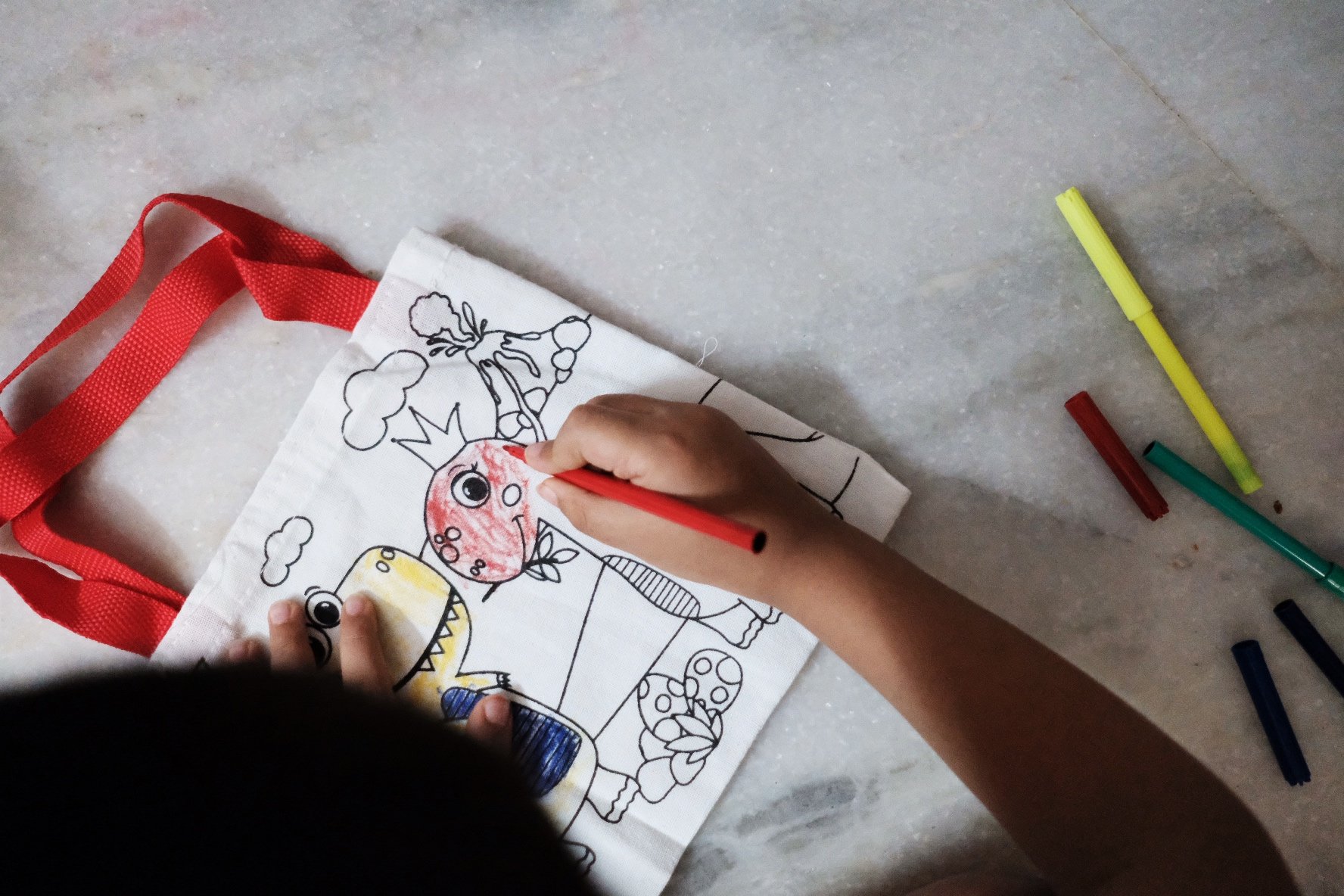
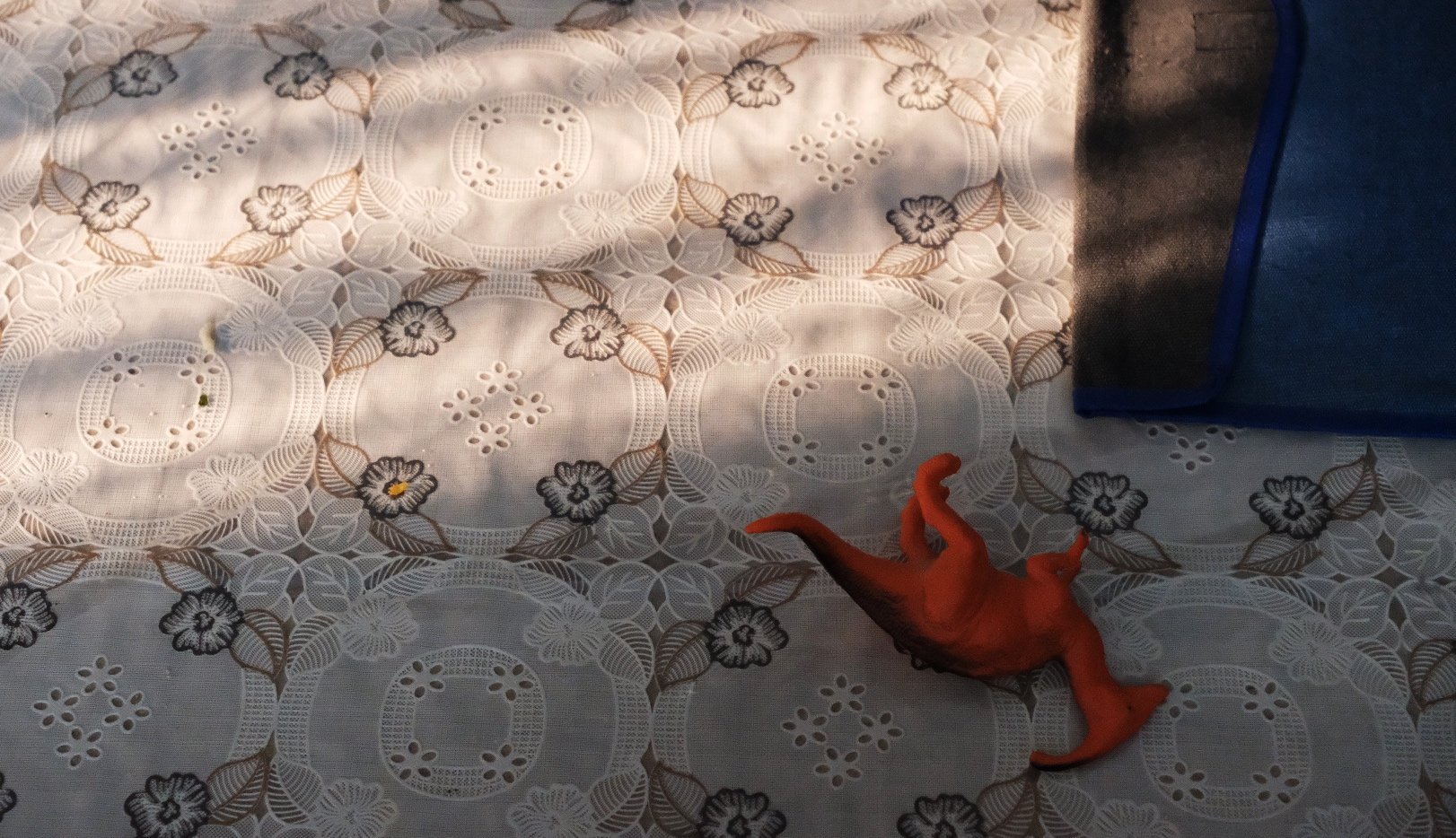
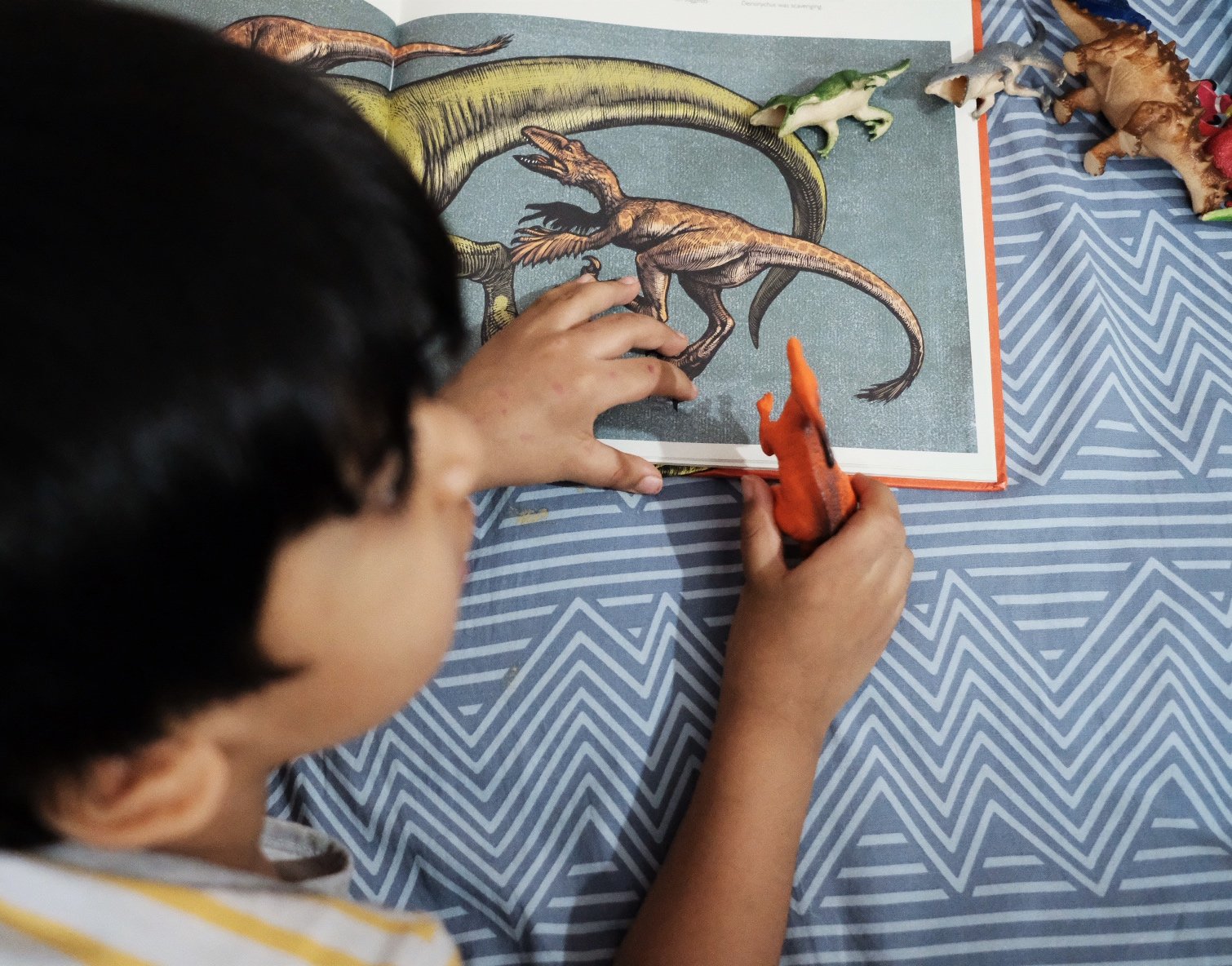
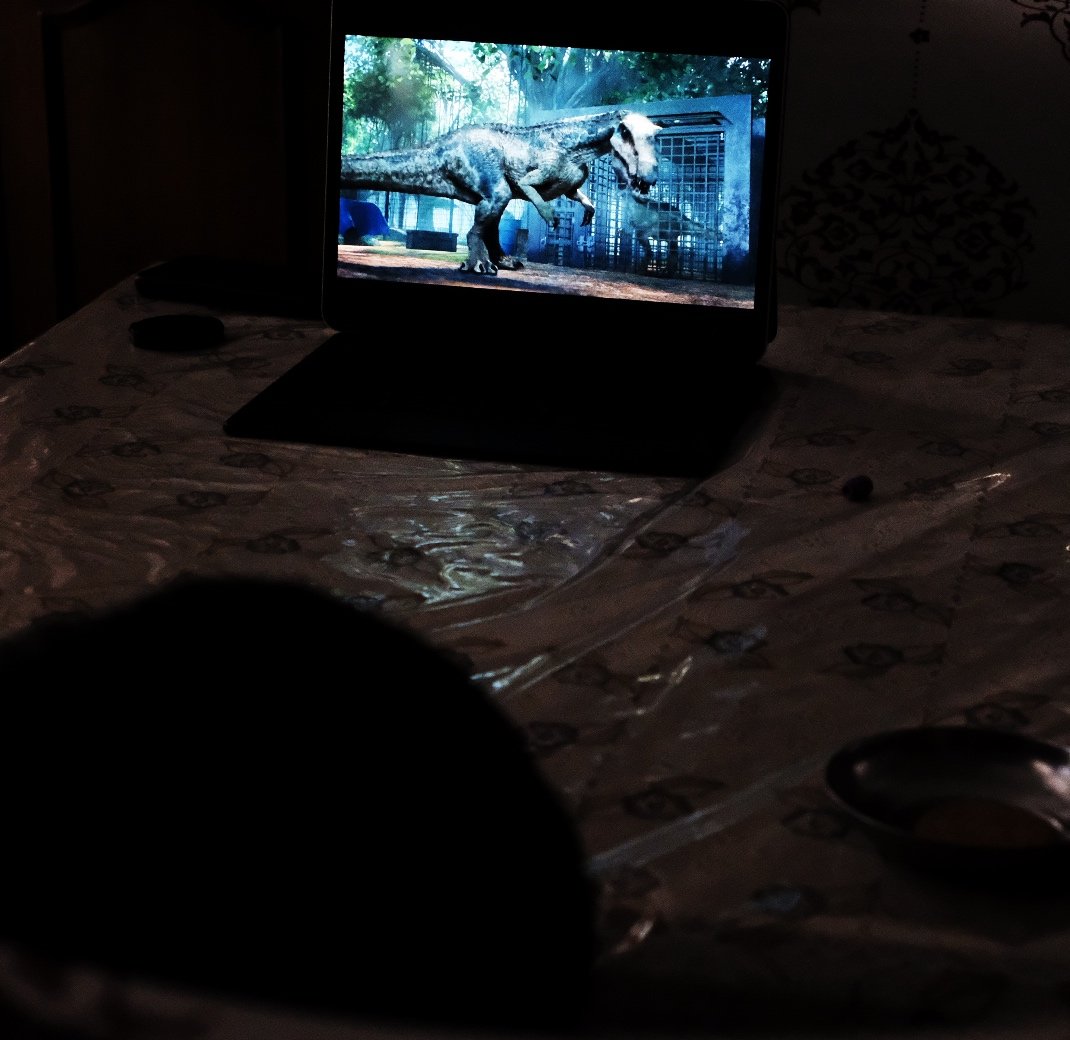

For him, this truly is the summer of the dinosaurs, and his dad is savouring every moment of it.
The blurred ones are the best ones perhaps
A summer evening, a neighbourhood park, and seemingly everyday moments which will become a treasure trove of memories long after the evening is over.
Location: Ghaziabad, India
Clicked: June 15, 2024
Posted: June 19, 2024
(All images are private and copyrighted. Please don’t use without permission.)ACROS the street
Winter is on its way out and I’m back on the streets shooting. Some pics below shot in the Fujifilm ACROS simulation…one of my favourites.
Living at the banks of a dying river
This river is dead.
Its waters do not flow, no waves break the surface, no birds strike at the sky, just an inky soupiness in the inky blackness of this winter morning.
I cross the dead river’s waters in a boat rowed by a boy who’s been alive for less than half the time I have been.
There is no sound except the choppiness of the oars striking the dead river’s body.
A deep gurgling chop, slop, chop.
The boy makes me get off the boat on an island made of nothing.
There is no light.
Only my feet know there is land beneath, the eyes don’t believe.
The island is littered with remains of rituals and memories and desires and dreams.
All dead now, seeing the sky with never seeing eyes.
This river is alive.
As the sun pierces through the fog, the mist blanketing its waters starts to flow.
As if clouds descended to make do for the still waters below.
Some birds appear on the island’s banks, some exotic but mostly crows, foraging through the detritus of a civilized city.
I have walked to the edge of the island from where I see an old iron bridge, a vein throbbing in the body of the city.
Traffic flows through its lower level, trains pass through the upper one, carrying countless stories in their metallic bowels.
The iron bridge and its iron chaos is more alive than the river below.
I cross the river again, now surrounded by exotic birds everywhere that people have come to feed and photograph.
I reach the ghat where I began this journey, with more humans buzzing around than the birds.
Most of them are exotic, here for an hour or two, to feed on the dying beauty of a dying river, and then back to the nests of their daily lives.
But some of them are natives, just like the crows.
Remains of a city that has no use for them anymore, shadows of a time that will never come again, with their lives a mirror image of the river struggling to stay alive.
The river is dead, as much it is alive.
The river lives, as much as it dies.
The Other Pune
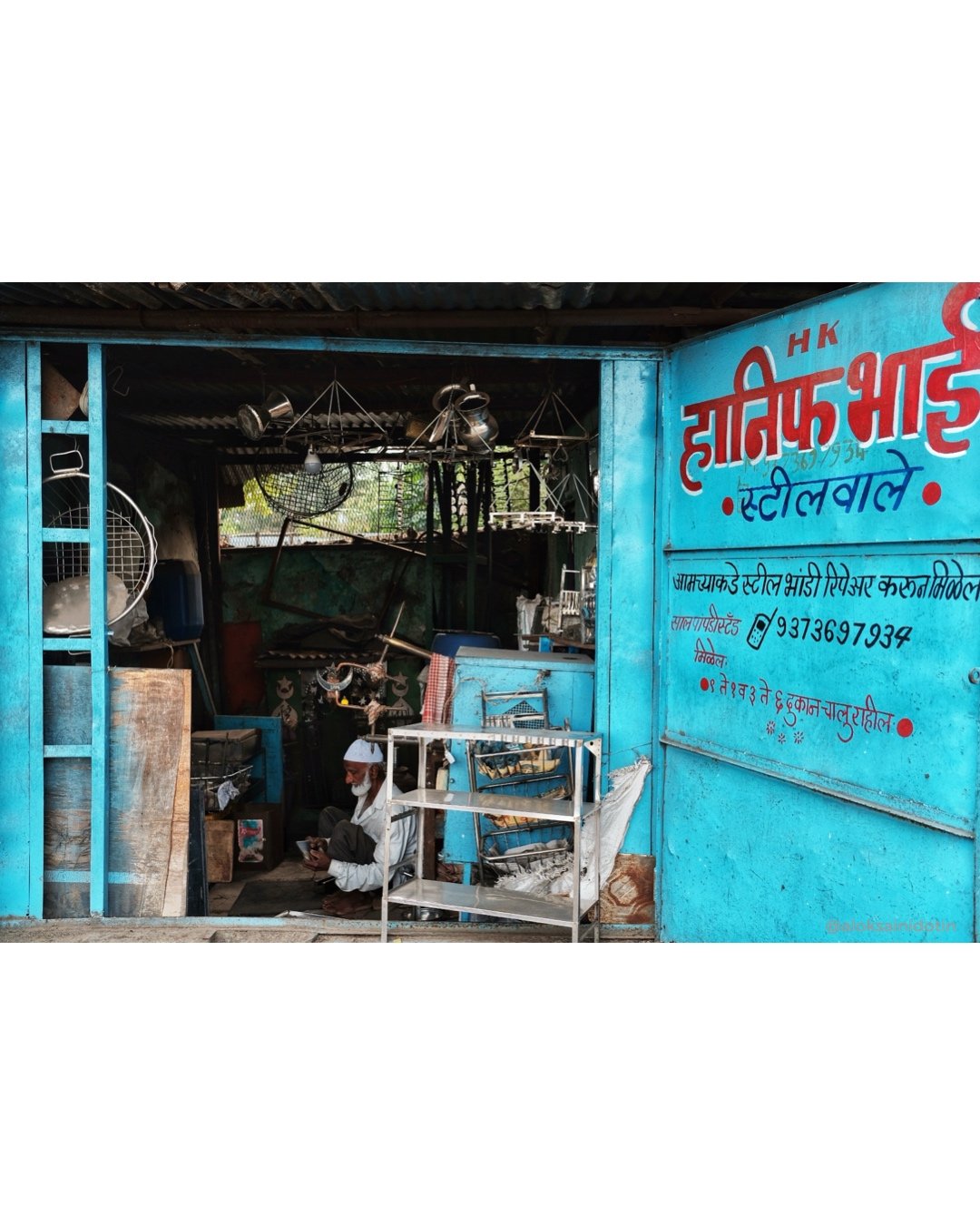
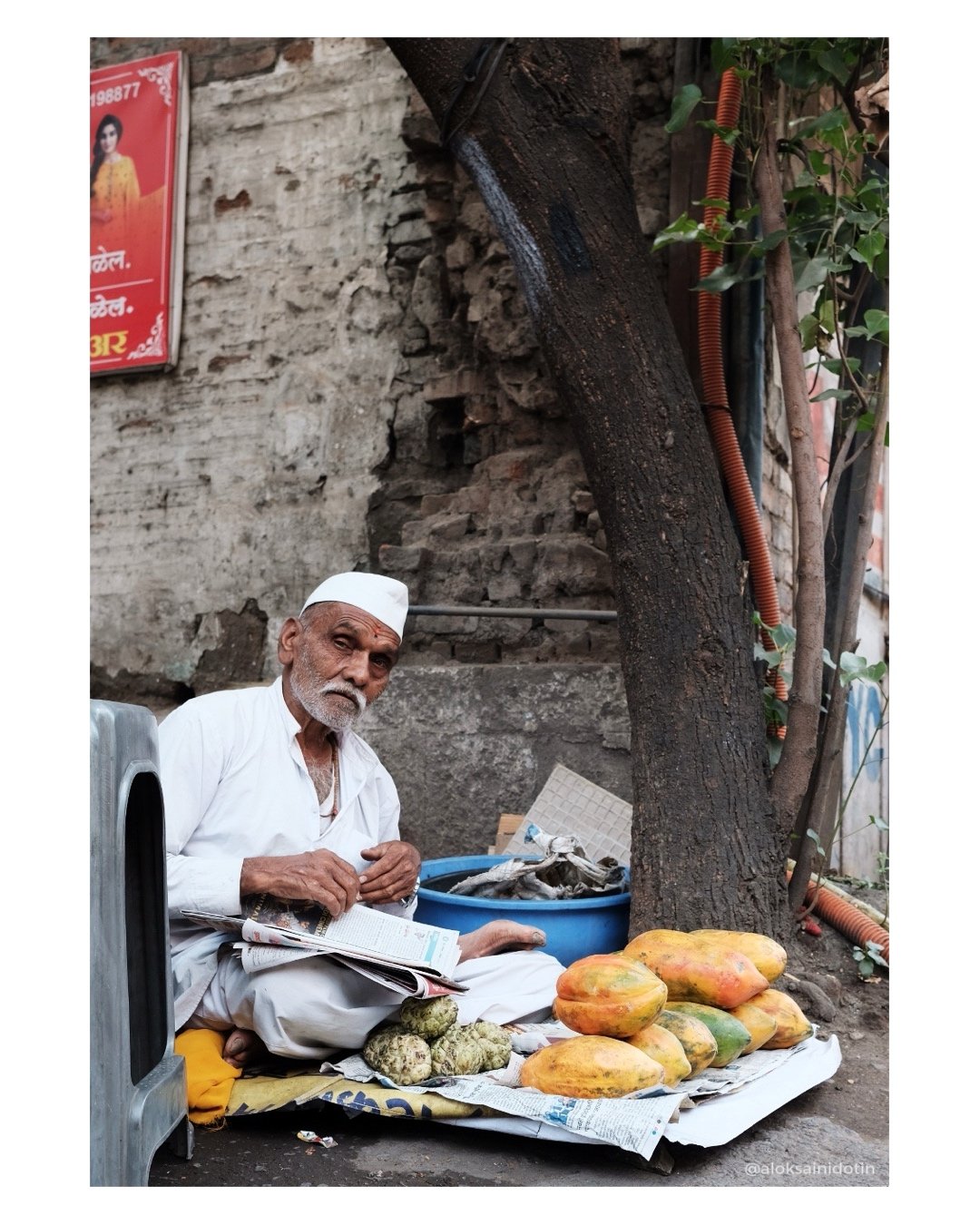
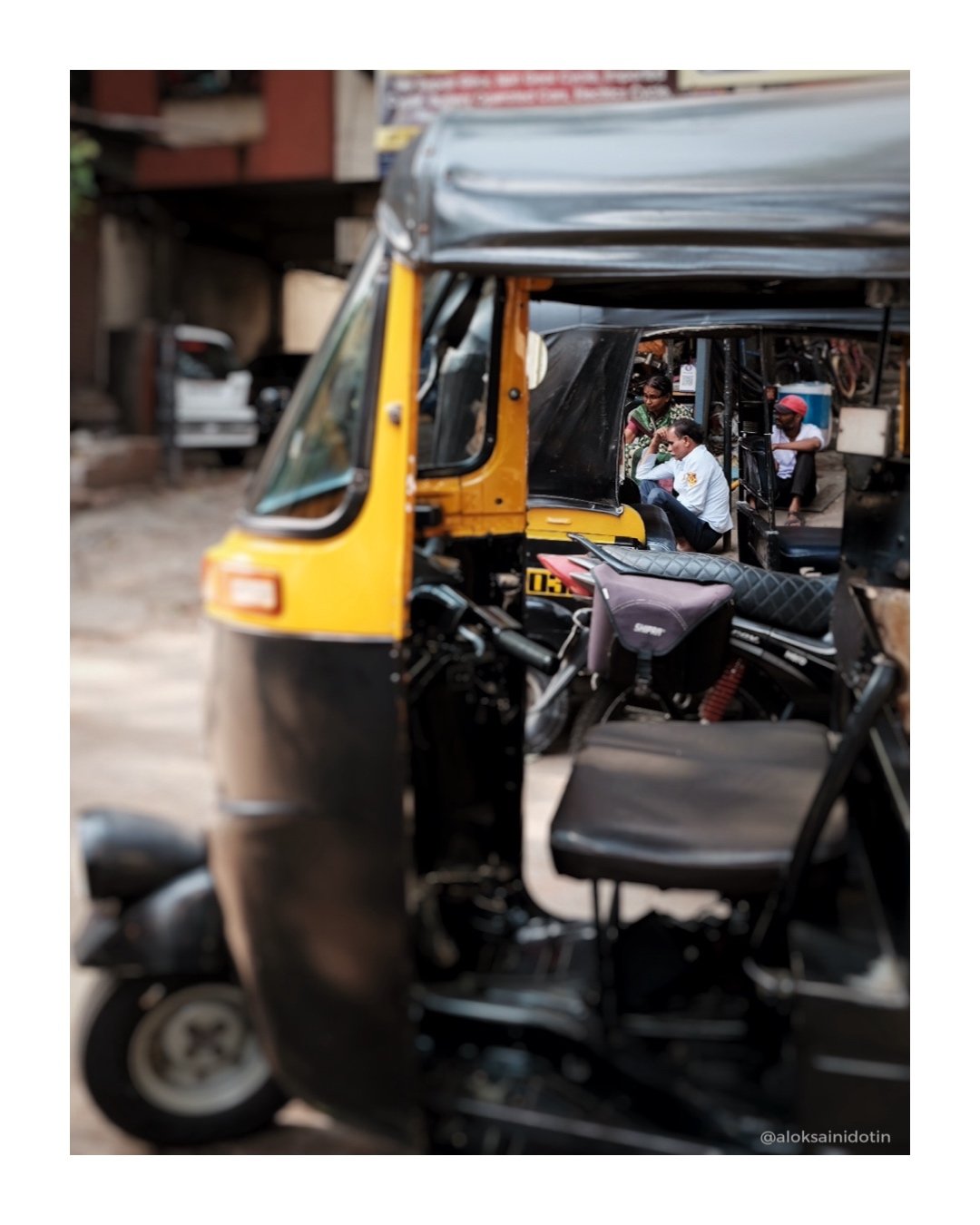
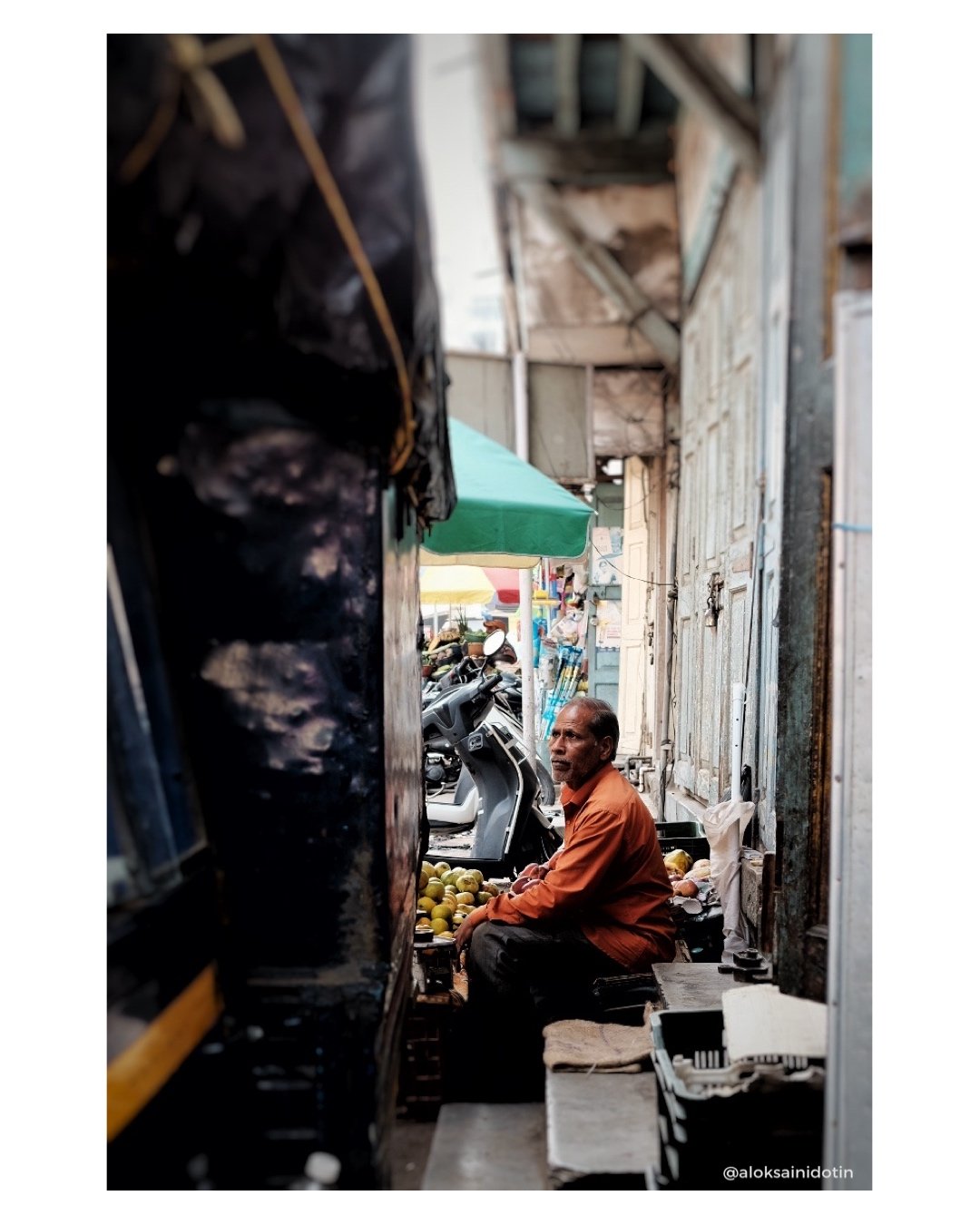
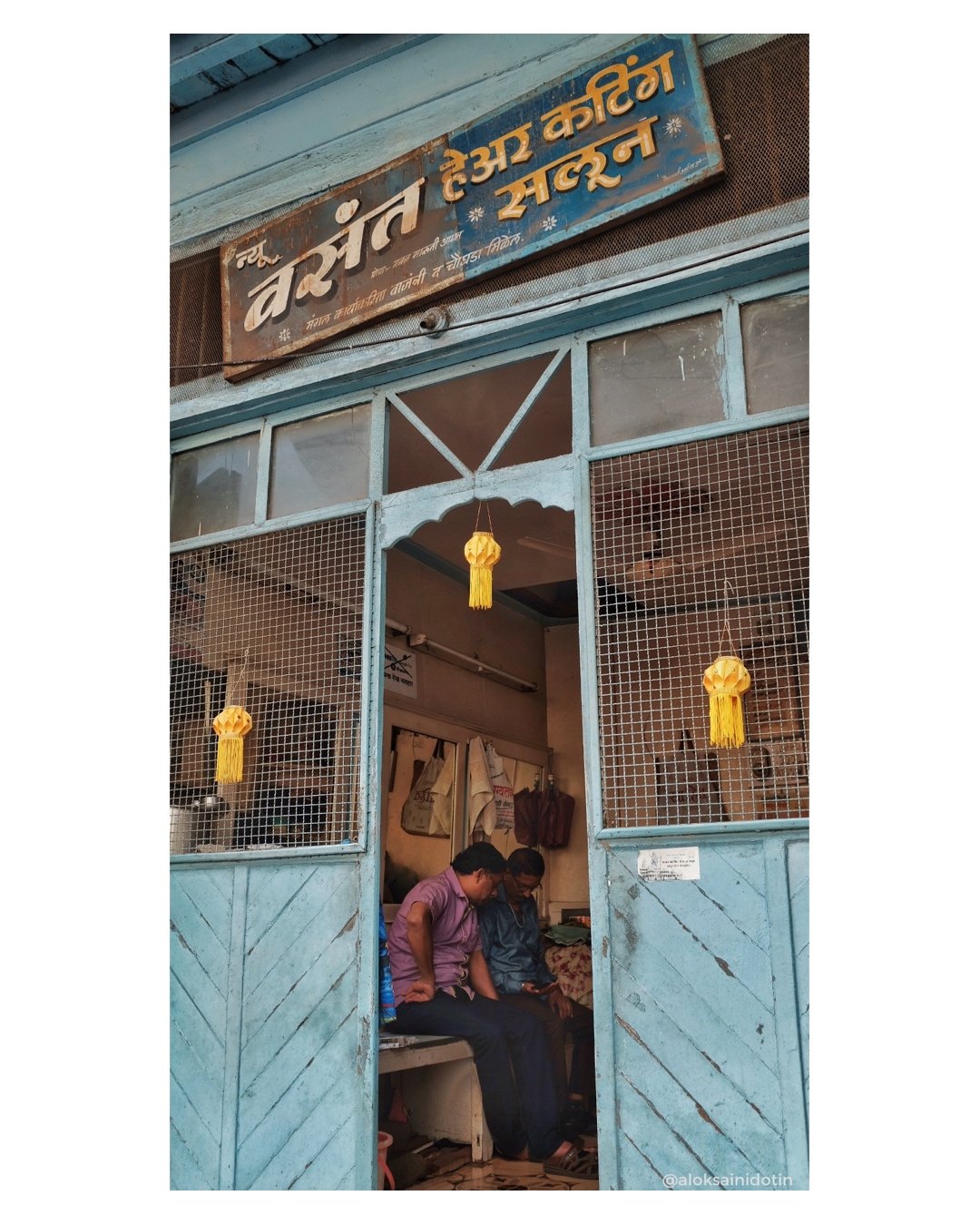

Roaming the streets of Old Pune is like stepping into a different era. Here, time seems to linger, allowing one to savor each moment. The light doesn't gleam off modern structures but filters softly through the ancient banyans, casting dappled shadows. This part of the city isn't characterized by hurried steps or the constant buzz of technology. Instead, the air is filled with the sweet melody of life: the jingle of bells from the sugarcane juice stalls, the distant laughter of children playing, and the rhythmic clatter of a local artisan at work. The streets are a mosaic of colors and textures, from the vibrant clothes drying on balconies to the intricate patterns of old doors. Every corner offers a new visual symphony, a story waiting to be told. As I meandered through these lanes with my camera, I wasn't just capturing images; I was preserving the essence of a Pune that exists parallel to, yet so distinctly from, its modern counterpart. Each photograph I took is a tribute to this 'Other Pune' – a world where the past and present coexist in a beautiful, timeless dance.

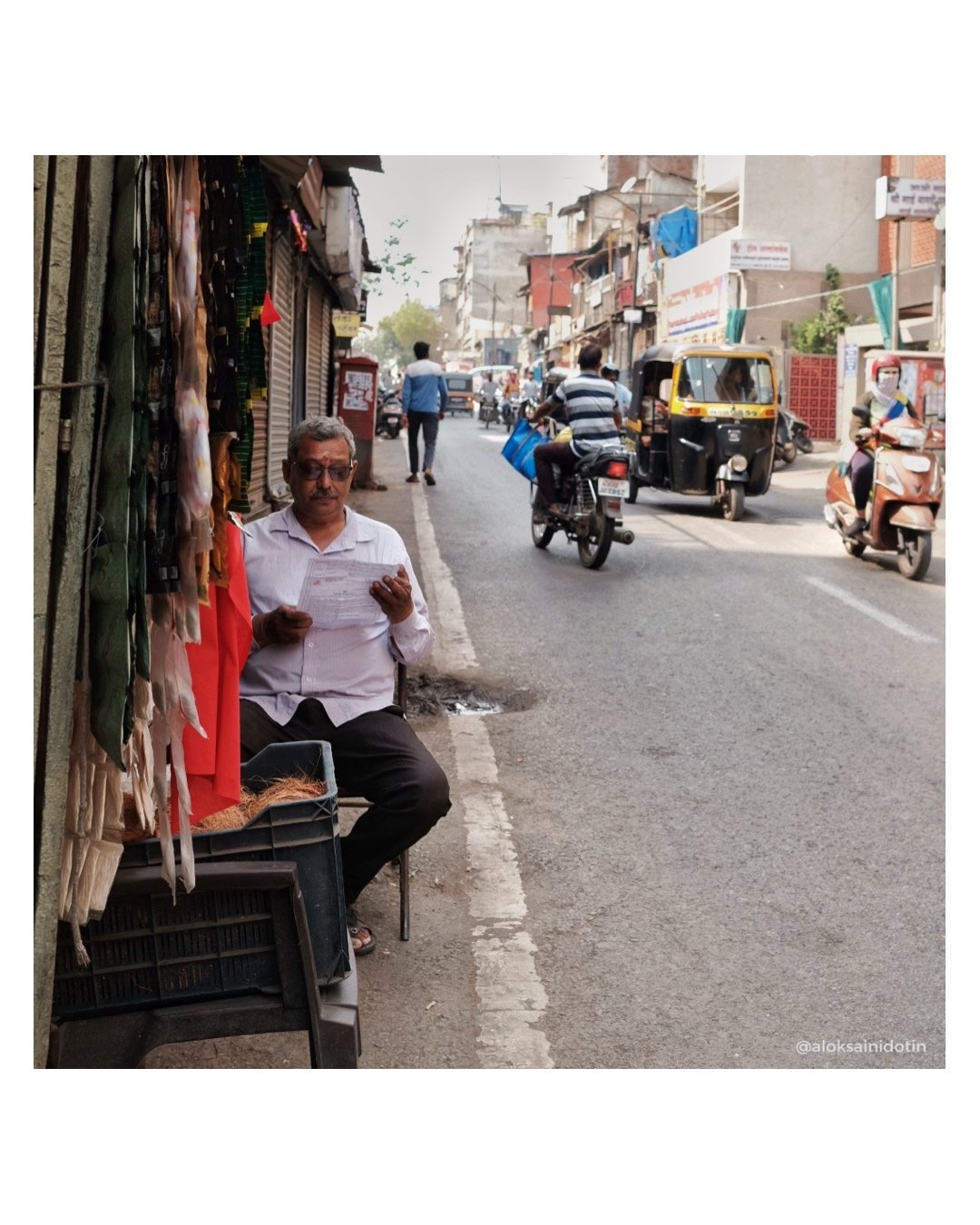
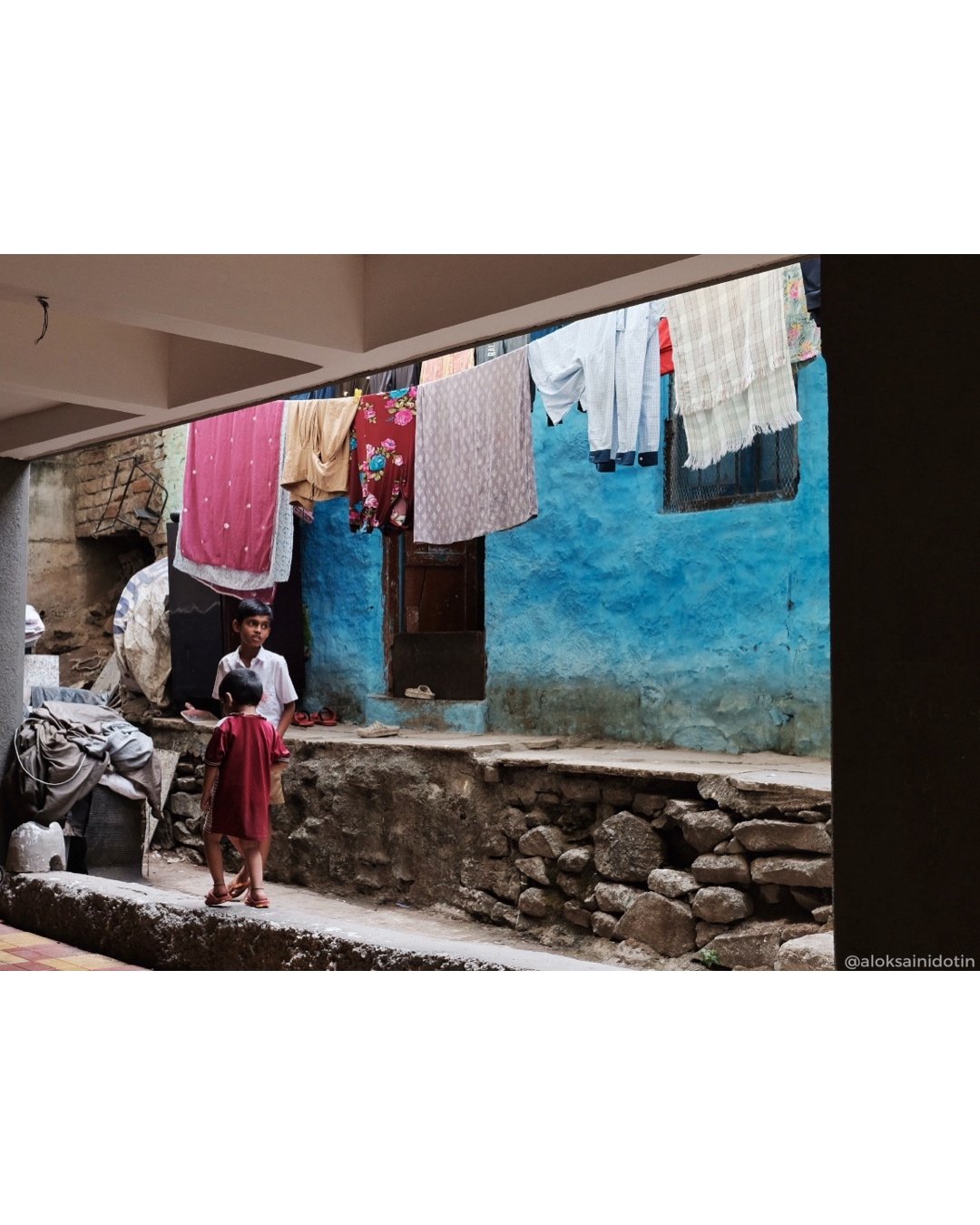
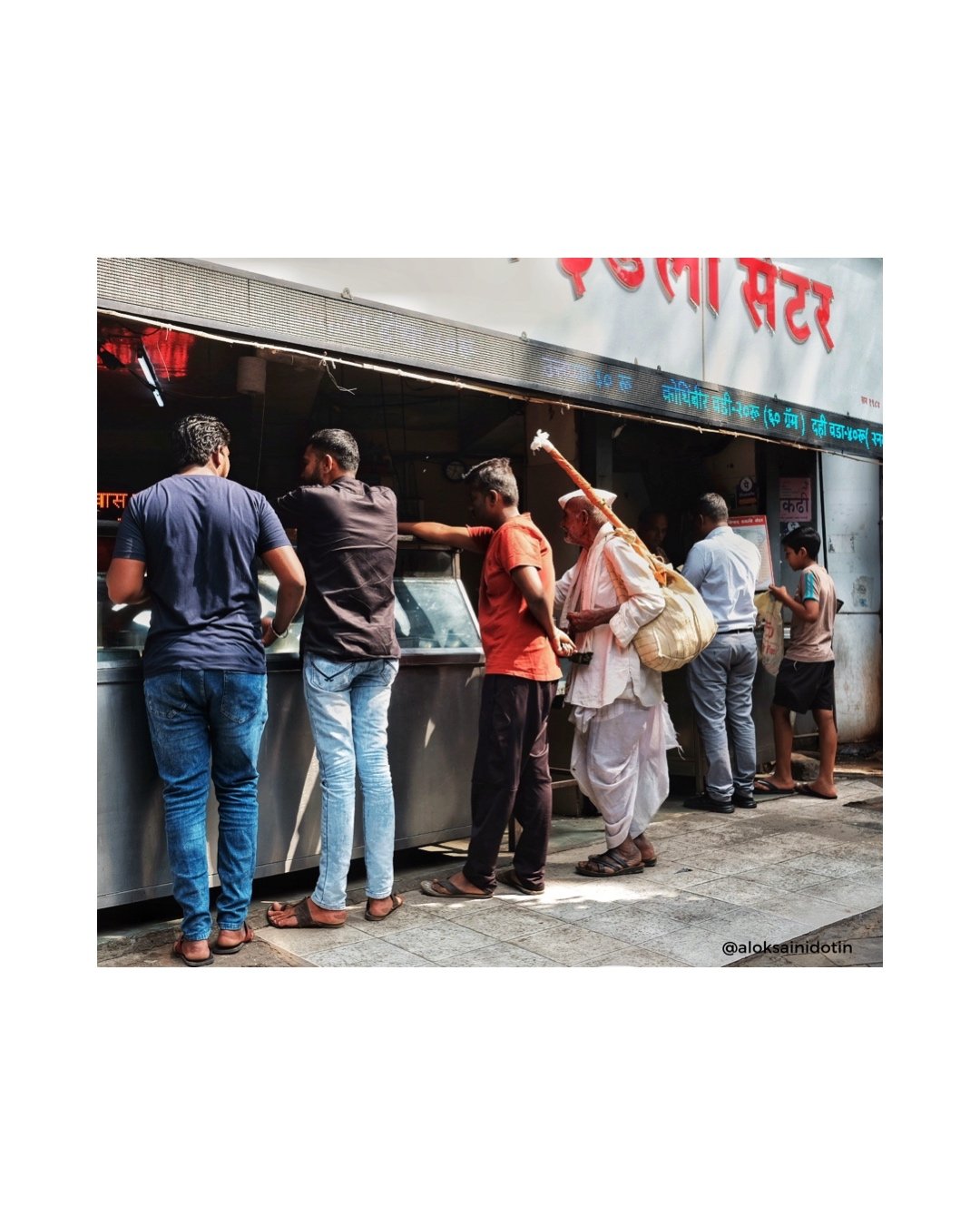
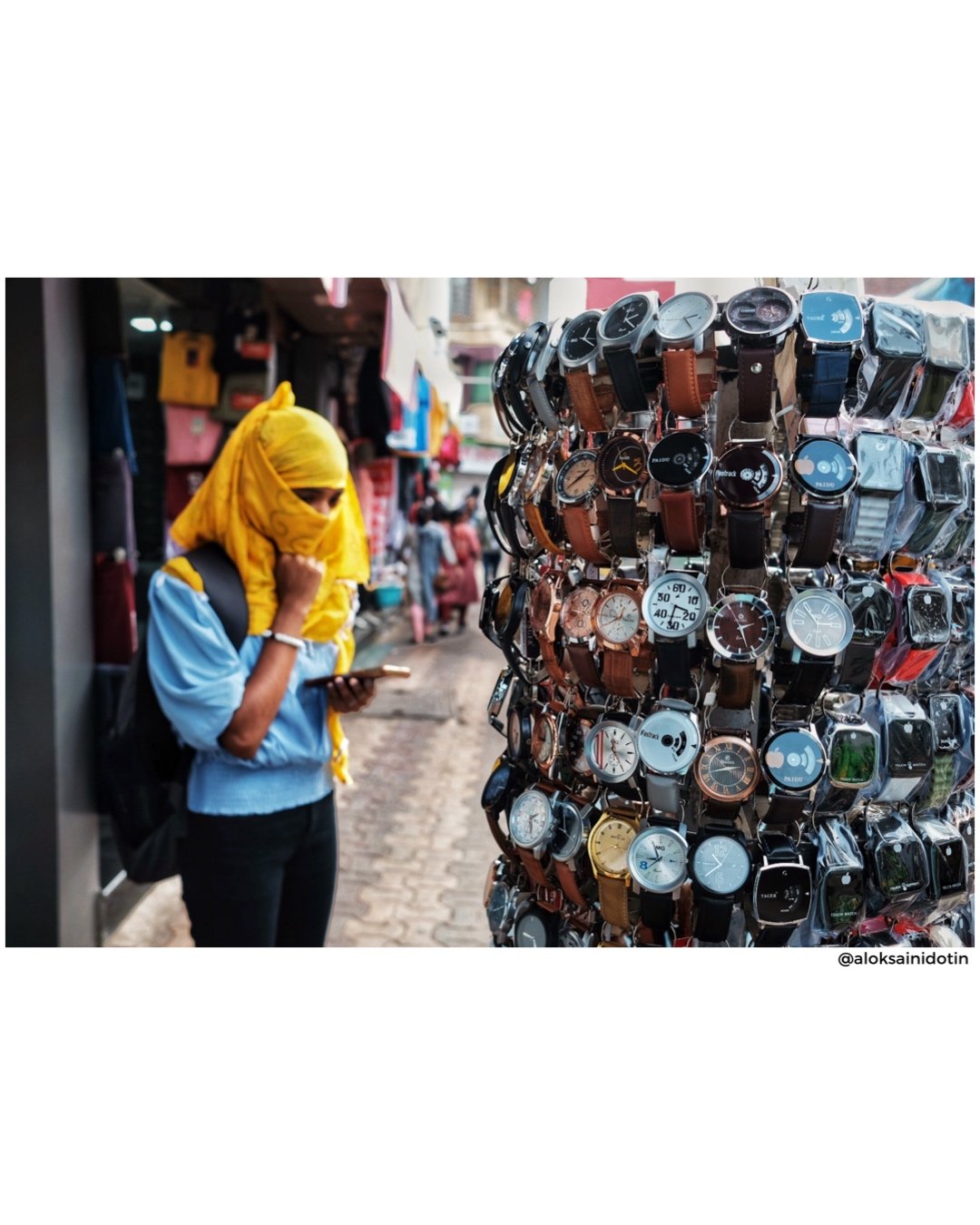
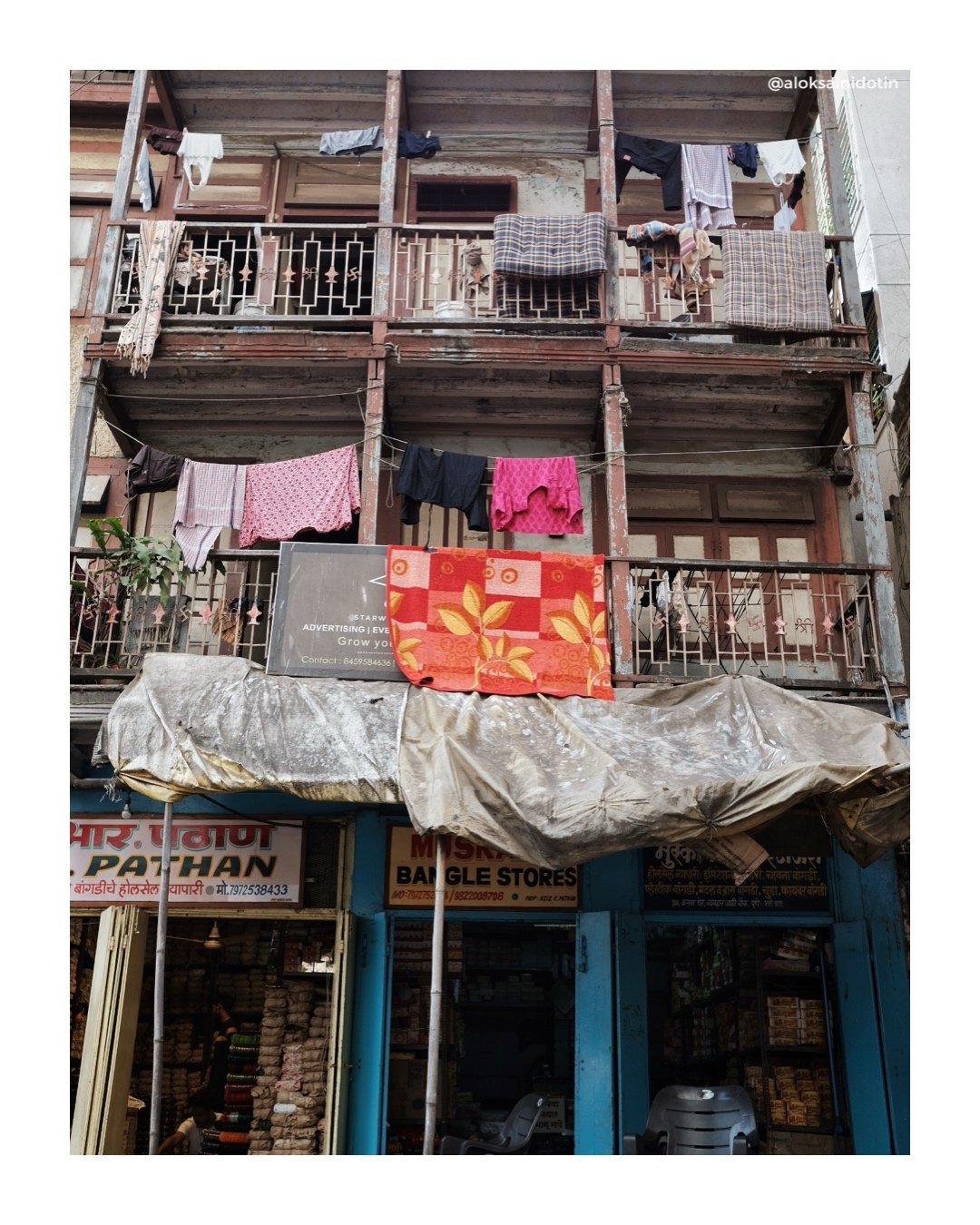
Quietude in the Qila
A winter photo walk at the Old Fort in Delhi
In my mind, and I’m sure for any long-term Delhi resident who hasn’t been there in some time, the Purana Qila stands for a shady, grimy lover’s nest visited by couples starved of personal space and freedom in our harsh, claustrophobic metropolis. As I reach, the impression I get is anything but that. Yes, it is a cold, grey January morning, and Delhi is in the middle of a cold wave, but the place seems to have evolved into a refined version of itself. There are still couples, lots of them, but I also see families with young kids and old parents, a sprinkling of foreign tourists, and a healthy presence of security guards in a well-maintained, spruced-up environment. The authorities have certainly done their job well.
I’m at the Purana Qila to be a part of a history walk conducted by Mr Rameen Khan of the popular @_Citytales account on Instagram. Consider it a new year’s resolution, but this year, I would like to know more about the city I call home, and these are my first tentative steps. I reach around half an hour earlier than the scheduled meeting time of 10am. There are only a couple of people around the ticket counter. I try to buy tickets digitally, but the website doesn’t seem to be working, so I have to pay in cash. Keep in mind that you have to purchase separate entry tickets for the lake area and the fort + museum, so do mention that beforehand. The total comes to Rs. 50 for all three.
By 10am, the numbers have swelled considerably, with many who seem regular to Rameen’s history walks in other parts of the city. He is a gracious host and wants to wait five-ten minutes more for any stragglers to catch up. After a few minutes of waiting, we head first towards the lake. The ticket counter and the security check area are in the same spare enclosure. As I get my camera backpack checked, I’m asked if I’m carrying any eatables, tripods, or video recording equipment. I’m not, but it will be a good idea to let people carry eatables, especially those with young kids. This place has the potential to turn into a charming picnic spot. Though it will increase the cleaning staff’s workload for sure.
The roughly semicircular lake is a part of the fort’s moat filled with water that appears more green than blue. A well-defined stone pathway with security railing circles the lake. We take a left and start walking towards our first stop. By now, the sun has begun to shine, albeit weakly. A slight breeze creates ripples across the lake’s surface, with a few ducks enjoying their morning swim. Behind it, covered in the morning mist, the fort’s time-tested walls rise majestically. It’s a perfect, Instagram-worthy spot that many in my group take advantage of.
Before we reach our first landmark, the ‘Talaki Gate,’ Rameen gathers the group at a few well-positioned steps overlooking the lake. The core of our talk today will be the life and history of Sher Shah Suri, but like life and history, there are multiple layers and contexts to it. So, we go back in time to the Lodi dynasty, Ibrahim Lodi’s defeat in the First Battle of Panipat at the hands of Babur, and a brief introduction of his son, Humayun, who would later be defeated by Sher Shah.
The Talaki Darwaza (Talaki Gate) is an imposing entryway. I crane my neck as we are introduced to its many features, most notably the fusion of Hindu and Islamic styles of architecture. The gate remained nearly untouched for around 500 years before its (comparatively) recent opening by the ASI.
From the Talaki Darwaza, we trace our steps back to the entry point for the lake and enter the main fort from the Bada Darwaza (literally, the Big Gate). This was the main entryway into the fort and stands true to its name. The same fusion of Hindu and Islamic architectural elements we saw in the Talaki Gate is also visible here and will be a common theme in the other buildings we visit during the walk.
From the Bada Darwaza, we walk to the other side of the Qila to see its third gate, the Humayun Gate. Here, at the amphitheatre-like steps later added by the British, Rameen takes us through a fairly detailed history of Humayun’s life and reign and his eventual defeat at the hands of Sher Shah. His narrative style is readily accessible with a few pop culture references thrown in. The group enjoys his talk and interacts occasionally.
The following two stops on our journey are closely related to Sher Shah’s reign. First is Sher Mandal, a beautiful octagonal building atop a natural rise in the ground. And second is the Qila-i-Kuhna Mosque on the other end of the fort premises. Built with a mix of stone, red sandstone, and black and white marble, the mosque is a beautiful example of Indo-Islamic architecture. It is profusely decorated with calligraphy and elements from Hindu temple architecture.
The Purana Qila complex also has a small museum dedicated to the history of the fort’s site and the overall neighbourhood of Delhi. It provides an excellent snapshot of this area’s history from prehistoric times to the Mughal era. I believe that the museum can be enlarged and exhibits given more space…there’s just so much history at this site that we are not doing justice to it with this little museum.
From the museum, we come back to the Bada Darwaza. Starting at around 10am, the walk ends at about 1pm. I bid goodbye to Rameem and stay behind for a bit of photography. Just outside the fort’s massive walls, the city of Delhi continues with its chaotic, time-starved existence. But inside, the pace is mellow. I amble around, looking for some nice shots. Couples come and go, there’s a pre-wedding shoot going on, labourers working on government duty are catching a break in the winter sunshine, and the air is filled with birdsong.
I sit on a sandstone bench, going back through my shots and realize how famished and tired I am. (Note to me: next time, wear comfortable shoes!) Reluctantly, I get up to leave. And just as I’m crossing the Bada Darwaza, I put my hand on its brilliant red wall, bidding goodbye and promising to return again to the Qila and its quietude someday soon.
Khajuraho - a photo essay
Come, step inside. Here reigns immortality.
Come, step inside. Here reigns immortality. Vishnu, Shiva…Gods of gods, one the nurturer, the other the destroyer. I enter the sanctum, bow before them, intricately carved heavenly dames and celestial creatures looking at me from the ceiling, and I hope some of their everlastingness rubs off on me.
On the outside, plays mortality.
On the outside, plays mortality. Human life, in all its glory, people singing, dancing, playing, getting ready, having sex, taking care of children, battles and wars…men, women, animals, animate, inanimate, everything life has to offer, painted with a chisel on stone. I stand in front of some carvings, marvelling at the details, the sheer effort it would have taken. I gawk at the erotic bits, smiling sheepishly, and look around to see everyone doing the same. Stepping back in awe, silence overpowers me as if something more significant than man brushed my elbow on the way to eternity.
Famous across the globe for their unique sculptures, the UNESCO World Heritage temples at Khajuraho hold a different meaning for me.
They are an ode to the unique Hindu worldview, where life is equal parts devotion and playfulness, where creation and destruction feed into each other, where mortality and immortality go hand in hand, carved on a simple block of sandstone on a simple temple wall.
A river runs through time
Looking at Orchha from atop the Laxmi Narayan Temple
A God worshipped as a king, a prince revered as a demi-god, temples that look like palaces and a palace abandoned by the ruling king because of a feud with the God-king…in magical, mystical Orchha, there are stories everywhere you turn.
Past and present existing together
It is as if the river that runs through it not only divides the town geographically but also somehow divides time into parallel streams. One half a real, living, breathing small town like any other in the Indian hinterland; the other a vision glimpsed through the mists of time.
Shri Raja Ram Temple
First and foremost, Orchha is a temple town and the only place in the world where Lord Rama is worshipped as a King. A former palace, the 'Shri Raja Ram' temple is the focal point of the small town. Ideally, any itinerary should start with paying obeisance to the Lord, much like you would pay a visit to the king first if you were a traveller in medieval times. But remember, this is not a usual temple where you could enter any time and have a darshan (glimpse) of the deity. This is a King's palace, so you must adhere to specific times if you want His blessings.
The Royal Cenotaphs
The cenotaphs are housed in a beautiful formal garden
Once the royal visit has been taken care of, the whole town is yours to explore. No point in hiring a cab, battery driven e-rickshaws take you to all the major points and are pretty economical. Though I would suggest exploring the town on foot if you can.
Crossing the bridge to the royal palace complex
Raja Mahal - the King’s Palace
The Queen’s Palace
The erstwhile royal palace complex is directly opposite the Raja Ram temple and accessible by a bridge across the river. It houses some beautiful buildings, including one massive palace built for the former Mughal emperor, Jahangir, who may have stayed there for a day, if at all. At one corner of the town, by the banks of the river Betwa lie the beautiful chhatris (royal cenotaphs) of Bundela kings and at another corner, atop a hill, lies the gorgeous Laxmi Narayan temple. Home to some beautiful frescos, you can get a panoramic view of old Orchha from its top levels. Talking about temples, just next to the Raja Ram temple is the grand Chaturbhuj temple, unlike any other I've seen in India.
Beautifully painted ceilings in the King’s and his senior most Queen’s rooms
Jahangir Mahal and the many views it offers
Storytelling
The story goes that the senior queen beseeched Lord Rama to leave Ayodhya and come visit Orchha. After many months of rigorous worship, Rama agreed but with a few conditions. Two of those were that He would be called the actual king and that He would not move from the first place He sets foot in Orchha. By the time the queen reached Orchha, the Chaturbhuj temple was still under construction, so Rama's idol was housed in the royal kitchen as a temporary measure. But staying true to His word, Rama didn't move out of the palace, and it had to be converted into the Shri Raja Ram temple we see today. And in deference to Rama's second condition, the king moved his throne out of Orchha as he couldn't remain the reigning monarch anymore.
Chaturbhuj Temple
Laxmi Narayan Temple and its beautiful frescoes
Other places of interest are Prince Hardaul's samadhi (resting place) and his baithak (meeting place), which is housed in a formal, attractive garden in the middle of the town. This brave, pious prince was a beloved of the common folks but took his life to prove his innocence to his elder brother, the king, who suspected illicit relations between the prince and the queen. He is worshipped as a saint across the Bundelkhand region.
The ‘saint prince’ Hardaul
Orchha is a town made for stories and slow travel. Yes, you can visit all the main sights in a day, but it won't do justice to what this place offers.
Faces of Orchha
In Orccha, life flows at its own pace
Instead, let's sit on a ghat with the river waters lapping at our feet, the sun setting behind us over the marvellous chhatris. Or come, let's lose ourselves in the palatial Jahangir Mahal, where every window invites us to linger and admire the view. Or let's climb atop the Laxmi Narayan temple and see the old town from a distance…you may even sense a shimmer as if you were watching a vision through the mists of time.




















